
Essays About Japan: Top 5 Examples and 5 Prompts
Japan is a beautiful country famous for its lush landscape, delicious food, and well-mannered people. Here are some examples of essays about Japan.
A developed country in Asia known as the “land of the rising sun,” Japan has become a hot commodity for tourism and business. Japan is truly a sight to behold, from its beautiful cherry blossoms, efficient public transportation system, and delicious food.
Japan’s rich history has allowed it to develop into one of the most advanced nations in the world, and its technology is renowned worldwide. Moreover, its people are known for their discipline, hard work, and resilience, even in the face of severe natural disasters. Japan is, without a doubt, a country worth visiting.
If you want to write essays about Japan, here are our best essay examples and writing prompts to help you begin.
1. What Japan Taught Me About Life by Beth Louise
2. japan experience: reflection on japanese culture by rayan elhafiz abdalla, 3. what i learned about design from travel in japan by teo yu siang.
- 4. The best time to visit Japan by Pat Kay
5. A Day Trip To Kobe by David Swanson
5 prompts for essays about japan, 1. what does japan mean to you , 2. misogyny in japanese society, 3. why visit japan, 4. japan’s history, 5. living in japan: what’s it like.
“In fact, there’s so much to see and do that it feels like a lifetime of exploring would never uncover all that’s on offer. It’s also a bright, buzzing lesson in living fast; just wandering around in the crowds is a massive adrenaline rush, and Monday nights are as mental as Fridays. But despite the intensity of a city so large, people are calm and quiet. It’s the most magical juxtaposition. Everything is moving at light-speed, but with such efficiency and thoughtfulness, that it feels like a well-oiled, intuitive machine, powering a ride that you never want to get off.”
In her essay, Louise writes about her experience traveling to Tokyo, Japan. She compares it to a machine, with all the people in the city playing their part. She is amazed by the people’s focus, discipline, manners, and sense of purpose, and she can better appreciate life’s simplicity. She is mesmerized by Japan and recommends booking a trip to Tokyo as soon as possible.
You might also like these essays about being yourself and essays about college .
“People were very friendly, they will greet you even if they don’t know you. One shocking incident that I will not forgot, is when the cashier was trying to help me put all my coin money in my wallet with me. In America I am not used to having someone put my money inside my wallet, that is really invading personal space. However, I learned that in Japan it seems normal to just drop off someone’s coins in their wallet.”
Similar to Louise, Abdalla reflects on new things he discovered about Japan and its people during his time there. These range from trivial things such as the “Pokemon Go” rollout in the country to the Japanese’ sense of honor and discipline. He recounts an experience in which the cashier was helping him put his change into his wallet, something he is not used to back home. He provides excellent, although short, insight into Japan, its culture, and its people.
“Everything around us is designed: from the smartphones we use every day to the tactile paving on a walkway. But it’s often hard to examine the designed environment around us with eyes as fresh as a tourist’s. So if you’ve made it to the end of this post, I’ve got a challenge for you: The next time you take a walk outside, try to become aware of the thousands of design decisions around you. What works, and what can be improved?”
Siang writes about the edge that Japanese cities and society in general have because they are well-designed. He cites innovations such as fast, automated cash register machines and aid for the visually impaired and recalls lessons such as the importance of accessibility when designing something.
4. The best time to visit Japan by Pat Kay
“When people ask me “When is the best time to visit Japan?”, I usually reply with “anytime”. Japan is always a good idea, at any time of year. It’s truly an all-year-round destination that provides vastly varied experiences throughout its distinct 4 seasons. Whether you’re a traveller who loves snow, or one who thrives in humidity; a traveller who wants to see beautiful nature changes, or wants to be thrown into crowds; whatever your style of travel, there’s a season and a time for that.”
Kay describes the weather and activities during the different seasons in Japan, giving readers an idea of when they would prefer to visit. Japan ranges from the ethereal but chaotic cherry blossom season to the calm, frigid snow season; however, each year’s season has its own charm. Kay’s essay gives good insight into the best times to visit Japan.
“When planning a visit to Kobe, consider the fact that the city has been completely rebuilt since 1995, following the great Hanshin earthquake that leveled much of the city. Except for a few memorials, you likely won’t be aware of the destruction at all. Instead, what you will discover is a cosmopolitan port city where foreign influences intermingle, museums are dedicated to sake, and a conveniently compact and walkable quarter showcases a robust nightlife scene that has featured jazz on the menu for nearly a century. Oh, and, of course, there is the beef.”
In this short write-up, Swanson lists the best things to do in Kobe, Japan, a place best known for its top-quality beef. However, there are many things to do in the city besides eating beef, such as viewing historical buildings, going to the hot springs, and visiting the botanical gardens. However, Swanson notes that eating is an integral part of a trip to Kobe, and one should not miss out on trying the beef.
In your essay, you can write about the country’s significance to you. For example, are you from there, or do you have Japanese ancestry? Have you visited? Write about your connection to the country and why this connection exists in the first place. If Japan has a special place in your heart, this essay topic is for you.
When editing for grammar, we also recommend taking the time to improve the readability score of a piece of writing before publishing or submitting
With all its glory and excellence, Japan is less evolved in gender equality. So how are women treated in Japan? First, delve into research about the treatment of women in Japanese society, and show how the culture differs from modern western gender equality ideologies. Then, discuss why Japan is behind in encouraging women’s equal rights. Make sure to cite research, statistics, and interviews to support your point.
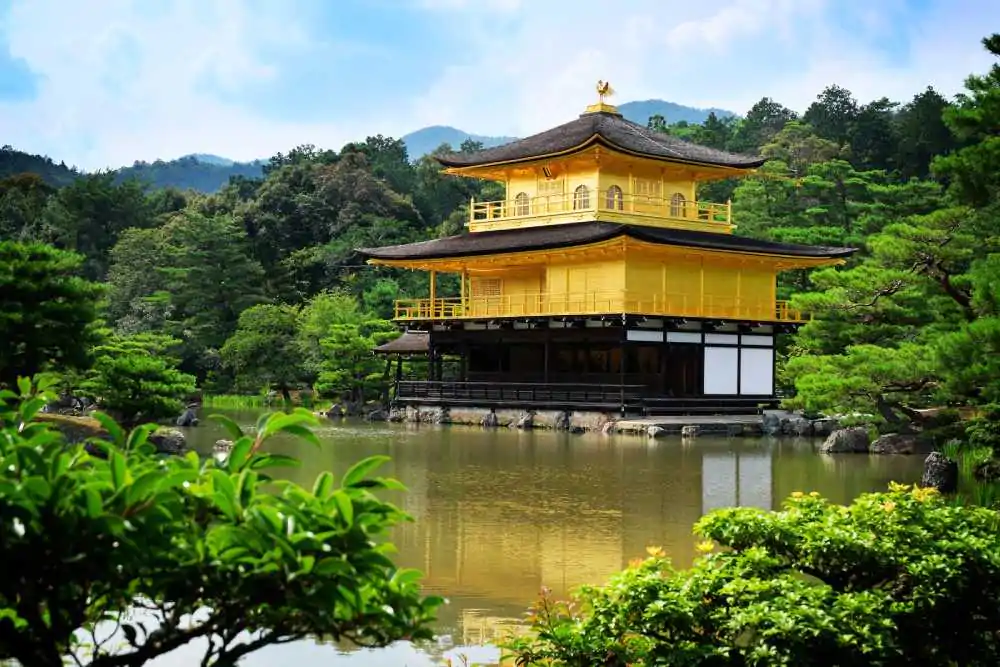
This topic is straightforward; whether you have been or not, try to persuade others to visit the country. Include highlights that others should visit and suggestions for places others can visit. If Japan was a bad experience for you, go the other way: why should you not visit Japan?
Japan has a dark history surrounding its role in World War II. In your essay, briefly explain these events and research their effects on Japan after the war. How did the war change Japan- for better or for worse? Elaborate on the impact and, as always, include references to strengthen your arguments. This is quite a broad topic, so you can focus on one element of Japanese society: values, city planning, relationships with tourists, race, inequality, and gender equality.
Based on reading articles and sample essays as well as any experiences in Japan, list the advantages and disadvantages of living in Japan and conclude whether it would be ideal for moving to Japan or not. Use anecdotes from travel writers or people who live in Japan to show why living in japan is enjoyable or not so enjoyable. Pick a stance for a compelling argumentative essay.
If you are interested in learning more, check out our essay writing tips !
If you’re stuck picking your next essay topic, check out our guide on how to write an essay about diversity .

Martin is an avid writer specializing in editing and proofreading. He also enjoys literary analysis and writing about food and travel.
View all posts
Personal Essay Example: Reasons Why I Want to Visit Japan
Where is one place in the world you would like to visit? Explain why you would want to visit this place, and what you would want to do or see once you arrive. Include specific details and examples in your response.
If I could visit any place in the world, it would be Japan. Many people, such as my friends, relatives, and reviews, told me how amazing Japan is. Japan is one of the most attractive places for tourists, millions of people each year travel there to try its exotic and traditional food. Another reason why is because of the beautiful sakura flowers that only bloom once a year. Japan also has one of the most unique hotels, one being a capsule hotel, like the name says you live in a capsule.
Japan is known for their natural beauty. There are many mountains, waterfalls, and forests, and most importantly, cherry blossoms. Like I said in my manifesto, I like adventuring to new places and especially in mother nature. As my parents say, I’m quite the photographer so, whenever I go to new places, I can add some photos to my collection and see many astonishing views. One of my wishes is that I get a Fujifilm X-T4, it is a camera that specializes in photography, and I want to capture almost everything that I do. If I go to Japan during April, I would definitely go to Chidorigafuchi. Chidorigafuchi is a seven hundred meters long river that leads to the Imperial Palace. The river is surrounded by cherry blossoms and you can take a boat/canoe ride down the river. Chidorigafuchi is one of the most popular places in Japan for viewing cherry blossoms, and during April, cherry blossoms bloom and shine at their brightest. Cherry Blossoms are one of my favourite types of plants because of how beautiful they are and how rare they are. Remember that this is a once-in-a-year time and the cherry blossoms die fast so if you get to see them, you are very lucky! The next place I would go to is Mount Fuji. Mount Fuji is a popular tourist attraction in Japan that a lot of people recognize. It is the thirty-fifth tallest mountain in the world and rises up to 12,388 feet, so I want to see it myself. When I’m at Mt. Fuji, I want to see around because there are five lakes and many temples that surround Mt. Fuji. There is also a lot of history, so I want to learn about it. An example is that Mt. Fuji was known as a sacred kami or spirit in the Shinto religion. The last place I would like to go is to a hot spring. Hot springs are very common because of all the volcanoes Japan has. Hot springs are very relaxing and are located in traditional Japanese inns.
Japan has one of the most unique and exotic foods in the world, that’s why I want to try their foods. Fun fact, 30% of the world's 7 Eleven’s are in Japan and it is pretty common to see a convenience store in every street. So whenever you need a cheap meal such as an egg sandwich, you can head over to 7 Eleven or Family Mart. Many shops in Japan have a traditional food called bento box. All families have a different recipe and they could be eaten for any meal, breakfast, lunch, dinner, and sometimes dessert. One exotic food that I want to try is omurice from Yukimura Motokichi. He works at Kichi Kichi and is most popular for his omurice. He entertains everyone with his cooking tricks, jokes, and makes a very memorable time for everyone. Omurice is a dish that contains fried rice and an omelette, topped off with some ketchup. Another dish I would like to eat is sushi, a traditional dish from Japan and is my favourite food of all time. I like sashimi over the rolls because I think that in sushi, the fish is the most important part of the combination. Sushi is a traditional food for the Japanese people and whenever you eat sushi in Japan, it may be pricey, but believe me, it tastes like heaven. Another food I would like to try is ramen. I love noodles and ramen is my favourite type of noodle dish. I would take tonkatsu ramen because ramen is about broth and tonkatsu ramen has pork bone broth. And for dessert, I would take mochi. Mochi has a wide range of flavours but I would take the green tea matcha because I drink green tea almost every day and it is my favourite type of tea. Unique food that is only grown in Japan is square or cube watermelons. They are essentially ornamental and are very expensive. They are around two hundred and fifty dollars and I want to see what’s so special about them. Another food I would like to try is street food. Every countries’ street food is unique but Japan’s stand out to me. There are more than two thousand items to try and street food doesn’t take very long.
There are a lot of tourist attractions in Japan and there is a lot I like to go to. I really want to go to Japan’s Disney World. I am a big fan of theme parks and I heard that Disney World is a very fun place to go to. So far, have been to Canada’s Wonderland and Universal and both turned out to be super fun. I really like Disney movies and now that they own Marvel or the Avengers, I really want to check out what they built for the Avengers. I also want to visit the Great Buddha of Kamakura. It is a colossal representation of Amida Buddha and is one of the most celebrated Buddhist figures. My family are Buddhists so it is nice to go here. Last but not least, I want to go to Hokkaido. Hokkaido is an island located north of Japan, taking up twenty percent of Japan’s mass and five percent of its population. Hokkaido is one of the most popular destinations for travelers in Japan. Boasting unspoiled natural sights, festivals, historical landmarks, coastline villages and the freshest seafood in the country, the island is sure to impress even the most seasoned traveler.
My third reason why I want to go to Japan is because of their unique hotels, one is a capsule hotel. Capsule hotels were also known as pod hotels are a type of hotel that has been invented in Japan. The room/capsule you get is roughly the length and width of a single bed and has the height for a person to crawl in and sit/sleep on the bed. The amenities you get would be the same as any other hotel, a/c, power sockets, slippers, etc. Amenities outside the capsule, you are given toilets, showers, Wi-Fi, dining rooms, and sometimes a cafeteria. It is around ¥2000 to ¥4000, which is 18 to 37 Canadian dollars, which is cheaper than most hotels. Once you get there, your clothing and footwear are swapped to Japanese clothing, yukata and slippers. Another unique hotel from Japan is bus and train hotels. Bus and train hotels both have the size of a business classroom in an airplane. They have comfortable reclining chairs that can turn into a bed. You are also given as many amenities as a hotel would.
In conclusion, I would like to visit Japan because I find that their natural beauty is really beautiful and their foods are very flavorsome. Japan, in general, is unique because I find that the culture, art, technology, etc is very different from other countries. I think that no other country can offer the same characteristics Japan has.
Related Samples
- Personal Essay Example: Tamyra Mensah-Stock Is My Idol
- Animals Should Be Allowed On College Campuses Argumentative Essay
- Essay Sample about Media's Impact on Beauty and Body Image
- Superpowers Essay Example
- The Tablelands in Gros Morne National Park Essay Example
- Refugees In Canada Essay Example
- The Importance Of Financial Literacy
- Analysis of Article "Hot U.S. Housing Market Cooled Some in August"
- Positive Effects of Music on the Brain Essay Example
- Reflection Essay about Young Love and Relationships
Didn't find the perfect sample?

You can order a custom paper by our expert writers

Living in Japan: Travel Essay
For me, life in Japan has been a puzzle to be solved. When I work out which piece goes where, life becomes easier.
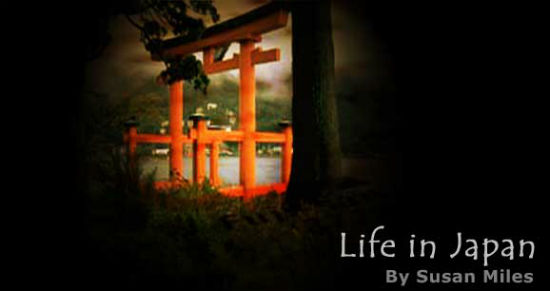
As I wake each morning, I know for certain that before the day is out I will be asked the following two questions: “Do I like living in Japan?” and “How am I coping with life in Japan?”
My friends and family back in Australia obviously ask this as a precursor to queries about my new home, job and lifestyle in Japan. But my Japanese friends and colleagues also quiz me regularly. Not out of curiosity, but out of a deep and earnest concern for my well being. They are convinced that my new life must be both stressful and difficult as a result of the radically different culture and customs I must become familiar while living in Japan.
My home in Japan is in the city of Chiba, a port city about 50 minutes by train from Tokyo, situated on Tokyo Bay. The city is compact, friendly and very modern, with a slick monorail crisscrossing the city streets.
What I would take for patronizing anywhere else, is graciously accepted when my Japanese friends insist on “teaching me Japanese life.” The sheer volume and strictness of daily customs in Japan make this education process not just an interesting pastime, but a vital necessity in order to function in this country.
In my corporate working life in Australia, as a business liaison manager for a large bank, morning greetings are casual and personal, with meetings usually started with a few pleasantries before getting down to business. Now, as a member of staff at a Japanese Junior High School, I participate in a group bow and greeting to my principal at the start of each meeting. My initial introduction to new colleagues created amusement and awkwardness when I offered a handshake and an enthusiastic “good morning” rather than a bow and a demure greeting.
As a self-confessed coffee addict, I have had to learn the fine art of balancing my cappuccino, satchel and newspaper while changing my outdoor shoes to indoor shoes in the immediate entrance to the school. As this space is rather limited, I would hate to see the jostling and positioning of this act when three or more of my colleagues arrive together!
Behaviors or actions that would be taken in a positive light in my own country can sometimes backfire in Japan. While I am used to a work environment that welcomes questions and debate, I now find myself in one that values quiet acceptance of rules and directions. My supervisor takes queries to his instructions as an insult that he has not explained himself clearly enough. So, I have learned that I must state what I intend to do rather than ask, as would normally be a common courtesy at home. If I don’t, it often results in my boss making a decision on my behalf.
I enjoy most of the Japanese customs I have experienced, as they are genuine attempts to make life civilized. A meal is not started until all are served and a greeting is made to acknowledge the good food we are about to enjoy. In Japan, we stand in line patiently waiting to board the train, bus or monorail, even to cross the street; and not one but all staff in a store, bank or business greets and farewells customers as they arrive and depart.
But these polite courtesies sometimes hamper rather than enhance daily life. Lunch is often shared with 30 teenagers in a classroom at the junior high school where I work. Serving and sitting down to eat is a long drawn-out process as everyone must be served before the signal is given for all to commence eating. With a typical wait of often 20 minutes rice and noodles go slowly cold and unappetizing.
I appreciate that lining up is an orderly and civilized thing to do. But rather than form a line as the train or bus approaches we must stand at the ready or risk missing a sit.
On my third day in Japan, I entered a bank and was inundated with greetings from each and every staff member as I walked across the foyer. Thinking I was being trailed by a V.I.P, I turned to discover that little old me was the subject of all this attention. While flattering and enjoyable the first dozen times, it becomes grating and annoying every time I enter the local bank, post office or convenience store and am welcomed with this patterned greeting. This practice must also be frustrating to the staff and I feel a wave of sympathy for my travel agent and banker as they keep one eye on their work and one on the door to ensure they acknowledge every single customer who enters and leaves the office.
It is often perceived that Westerners are impolite because of our lack of knowledge of these countless behavioral requirements, and that our own culture is devoid of good manners. I have had to explain to my Japanese colleagues and friends that our manners are just subtler and can vary greatly given the circumstances and situation. It is difficult to convey to them that there are only a few “must do’s” in Western society, and more “highly recommended” codes of behavior.
Socializing is another new and challenging mine field. As a Westerner, I enjoy friendly chats and introductions from strangers who are anxious to practice their English. However, it is hard to know whether I am popular for who I am, or more for what I am, a native “English speaker.” However, this level of curiosity makes meeting and making new friends in Japan pretty easy.
Invitations to dinners, events and outings are sincerely followed up by my new Japanese acquaintances. Vague, “let’s get together some time” just doesn’t appear to be in their vocabulary. But the sheer interest is sometimes overwhelming, with my laps at the swimming pool at my local sports center interrupted by inquiring “Do you speak English?” or an invitation from a colleague’s adult daughter to meet as she is interested in having “foreign friends.” My corporate brain is starting to kick in and I am wondering if I can’t “outsource” some of these invites to some of my newer western colleagues!
Even time spent with existing Japanese friends can be stressful. After spending a day at my friend Tomomi’s house, I came home feeling tired and worn out. I could not work out why a casual Sunday afternoon catching up with an old friend caused such a strain. But even here I had to be mindful of Japanese customs. From how I left my shoes at the doorway, (facing outwards), the way I poured a drink for my host (with two hands and not holding the glass), to how I accepted a copy of Sinji’s, Tomomi’s husband, business card (again, with two hands, admiringly and then carefully placed in my wallet).
But these friendly visits have not been without humor. On leaving a restaurant recently with this couple, mindful of Sinji’s overburden arms with baby Akari, I retrieved both mine and his shoes from the restaurant’s shoe lockers and correctly placed them facing outwards. This produced a roar of laughter from Tomomi as I was undertaking a task, by custom, reserved for a wife.
But going beyond friendship is way more difficult to navigate. A young American colleague of mine had formed a lovely friendship with one of her Japanese male colleagues. He invited her to meet his friends. However when the public venue he picked was closed and she casually suggested dinner as a suitable substitute, things got sticky.
This formerly polite and friendly young man proceeded to unceremoniously “dump” my colleague at a “100 Yen Store” with a hurried comment of “Oh, I have to go shopping.” Through a number of discreet inquiries as to the motivation behind this uncharacteristic behavior, we discovered his rationale.
It was all about “face,” and his appearance in public alone with a Western female colleague. His concern of being spotted by another colleague, supervisor or a student’s parent would see his new friendship labeled a romance and an unusual one.
Inter-racial relationships are not common in Japan.
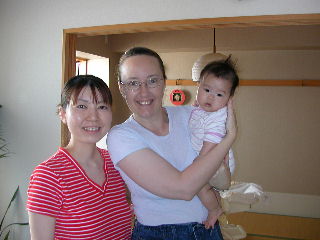
My own personal slip in this area has been an overenthusiastic greeting of a young male Japanese friend who I had not seen for three years. My reunion hug and kiss in public, which would normally not raise a glance back home, produced a number of unabashed stares and for my poor friend Hayata, a bright red blush!
Hayata is a fashionable young Japanese man, who laments his employer’s rule that he must not add highlights to his jet black hair, as it is the rage amongst the 20-something age group in Japan at present. He is an employee of Tokyo Disneyland, where he must ensure all is picture perfect “on stage” for the enthusiastic Japanese tourists who visit. I have also played tourist at this Japanese version of the Magic Kingdom.
As a previous visitor to the California original, I was able to revisit some of my favorite attractions, but with a Japanese twist. To hear the “Pirates of the Caribbean” speak in their same gruff pirate accent as in the American version, but in Japanese was both bizarre and humorous. However, the main attraction for me was the Japanese tourists themselves. Their fascination with all things Disney saw adults gleefully line up to be photographed with their favorite character and stake out prime stops on the parade route hours before the event.
Signs of a failing Japanese economy are invisible in the countless souvenir stores at Tokyo Disneyland, where visitors crowd in to load their shopping baskets full of official Disney products. My new buddy Sinji is an example of a Japanese Disney devotee. When I admired his Mickey Mouse motif curtains in his living room, I was told that one was missing, a result of an untimely gust of wind when it was being aired on the apartment balcony. The loss of this favored furnishing was considered significant enough for Sinji to report it to the local police, in the hope that it may be spotted on their rounds!
But it is not just Japanese/American amusement parks that have grabbed my attention as a tourist. On weekends and public holidays, I have joined the human sea on the trains and buses to pay visits to various temples, shrines, parks and gardens of this country. While these places can also be bustling and crowded, they do evoke a peace and tranquility over visitors that make the crowds less apparent.
For the ultimate in tranquility, a visit to a Japanese Onsen is a must. My Japanese colleagues are surprised by my willingness to visit these spas, as the “naked” requirement is a classic Japanese custom. It is an absolute rule and applies to everyone ― even to a shy Australian like myself who prefers the modesty of a swimsuit. The “no exceptions” component of this rule was relayed to me by a smiling but insistent attendant who politely requested I remove my Speedo, much to the amusement of my fellow spa companions.
One of my few refuges from Japanese rules and customs is the simple act of running. This is a pastime that I have always enjoyed as an escape from pressures and a chance to clear my head. However the nature of my running in Japan pretty much represents what my life here resembles. My course is tightly compacted, a repetitive loop course in a small park area that requires me to dodge and maneuver around countless obstacles and individuals.
As a new resident, I have found my life so far in Japan to be similar to a puzzle needing to be solved. When I work out which piece goes where, life becomes easier, however it is the process of working out the solution that sometimes drives me to escape to the nearest Starbucks or Mac Donald’s for some relief!
Oh, before I forget. My answer to the initial two questions: Do I like living in Japan?” and “How am I coping with life in Japan?” is of course a resounding: “I love it!” and “Better, every day!
- Latest Posts
- Discover the Hidden Charm of Extremadura in Spain - April 20, 2024
- Life of a Champion: Exploring the Muhammad Ali Center in Louisville - April 19, 2024
- What It’s Like to Live as an Expat: Lake Chapala, Mexico - April 18, 2024
Leave a Reply Cancel reply
Your email address will not be published. Required fields are marked *
- Itineraries
- Tours and Activities
- Travel Guides
- Best of Japan
JRailPass.com » Japan Travel Blog » Why travel to Japan? 20 best reasons to visit it
Why travel to Japan? 20 best reasons to visit it
June 15, 2022
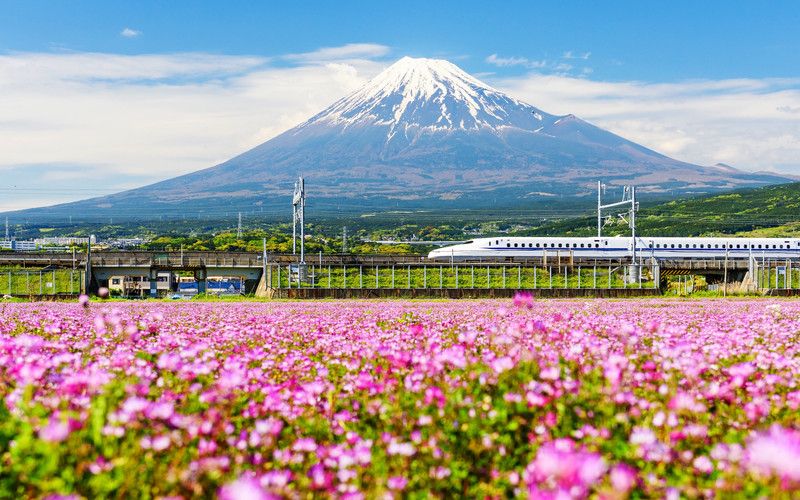
There are a endless number of reasons to visit Japan , as the country has something to entice almost every kind of traveler.
Whether you’re dying to explore Japanese history and culture at the variety of UNESCO World Heritage Sites in the country, indulge in diverse Japanese cuisine, or experience a ride on the lighting-fast Shinkansen trains, a trip to Japanese promises adventure around every corner.
From the chance to visit some of the many impressive temples and castles around the country, to the opportunity to take a dip in an Onsen hot spring, below you’ll find the 20 best reasons why you should visit Japan .
It’s easy to get around on public transportation
Japan has one of the most efficient and reliable public transport systems in the world, with a wide range of travel options including bus, train, and subway services across the country.
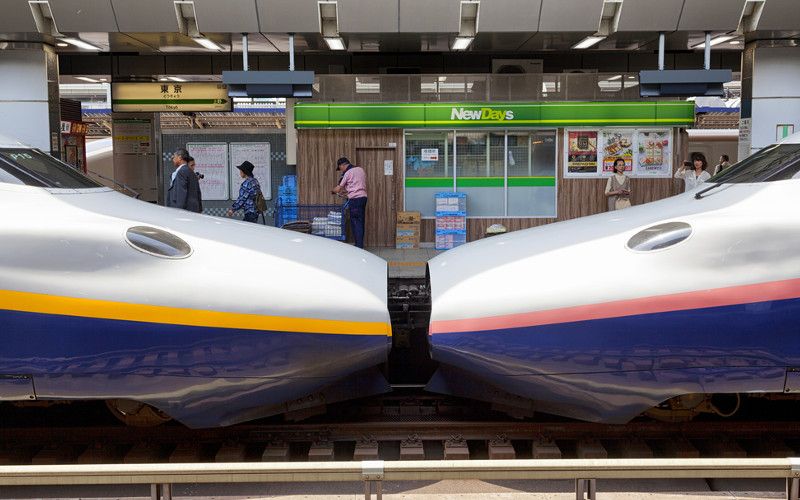
One of the best ways to get between cities is to ride the Shinkansen bullet trains , which can reach a speed of up to 300 km/h and boast a range of luxury services onboard. The most cost-efficient way to travel by Shinkansen is to buy a JR Pass online before traveling to Japan.
[banner-en]
Japan is very clean
The Japanese really pride themselves on their cleanliness , and upon first arrival in the country you may be surprised by how sparkling clean the streets are.
Hotels and restaurants tend to be absolutely spotless , filled with pleasant smells, and regularly and efficiently cleaned. One downside is that there tends to be a total absence of trash cans in public spaces. However, you can just follow the Japanese example and carry garbage with you until you find a place to get rid of it later on.
Japanese people are polite and friendly
The Japanese have a worldwide reputation for being uncommonly polite, friendly, and welcoming. Although the language barrier may prove a challenge at times, people in Japan usually try to be as helpful as possible if you ask anything of them.
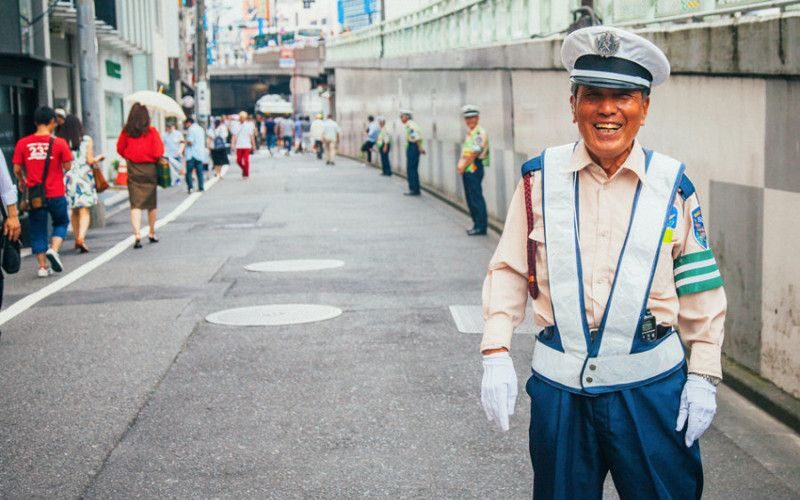
It’s a good idea to brush up on Japanese etiquette tips before traveling: locals will appreciate your efforts to respect local customs!
The incredible natural landscapes
Although Japan is perhaps best known internationally for its technologically advanced cities, the majority of the country is actually taken up by a vast expanse of forested hills and mountains , and there is lots of nature to explore.
One of the most obvious beauty spots to visit is the iconic Mount Fuji , but you shouldn’t rule out a visit to lesser known natural gems such as the Arashiyama bamboo forest or the Ritsurin landscape gardens on Shikoku Island .
The large number of UNESCO sites
Japan boasts a total of 21 World Heritage Sites , including 17 cultural monuments and 4 natural landscapes, and there are currently 8 more sites pending UNESCO classification.
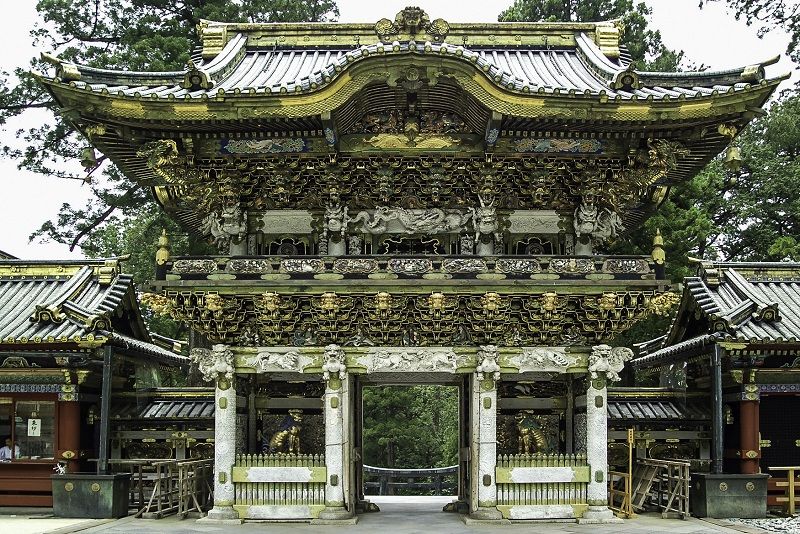
Travelers interested in Japanese history should definitely pay a visit to the Hiroshima Peace Memorial , which commemorates the victims of the 1945 atomic bomb, as well as Shirakawago and Gokayama , historic villages which feature unique thatched-roof dwellings.
The majestic temples in Japan
There are number of stunning historic temples and shrines in almost every town and city in Japan, while larger cultural centers can have up to 1,000 temples within their municipality.
One of the most impressive temples in Japan is the Byodoin Buddhist temple in Uji, a UNESCO World Heritage Site that dates back over a thousand years. The Toji temple in Kyoto , which boasts the tallest wooden pagoda in Japan and an extensive garden full of cherry trees, is also well worth visiting.
The unique castles
Visitors to Japan can dig deep into the country’s history by exploring the elegant architecture and fascinating family legacies of Japanese castles.
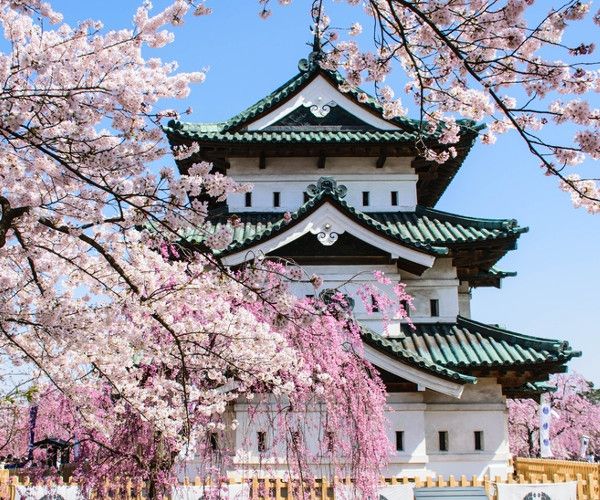
Primarily serving as the homes for local feudal lords and their family during the Sengoku period of Japanese history, the castles in Japan are defined by their elegant façades and interiors, as well as extensive defensive features.
Some of the most impressive castles in Japan include the well-preserved Hikone castle , which dates back to 1622, and the castle in Himeji .
The spectacular cherry blossom season
Japan is one of the best places in the world to view the spring cherry blossom and attend a Cherry blossom festival.
Once the cherry blossom season peaks in April , locals and visitors alike flock to Japanese parks and gardens to engage in hanami (picnics beneath the cherry trees). Some of the best places to experience the blooming flowers include Hirosaki Castle Park and Shinjuku Gyoen, located in the heart of Tokyo.
The exciting summer festivals
If you’re visiting Japan during the summer months, you should plan to experience some of the colourful Matsuri festivals which take place all over the country.
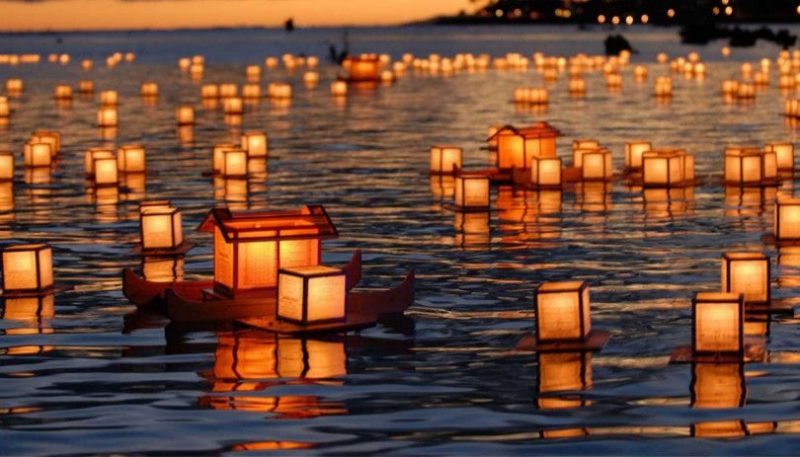
These traditional celebrations pay tribute to legendary historical events and different deities connected to an individual shrine in the towns where they take place. Many Matsuri festivals feature processions of enormous floats , colorful parades, and spectacular fireworks shows.
Christmas in Japan is magical
Spending in Christmas in Japan is worth the effort just to experience the range of extravagant winter illuminations that saturate the city streets during the festive period.
Those planning to spend winter in Japan are also advised to visit the Sapporo snow festival in Hokkaido, where you can see a range of incredible ice sculptures , many based on well-known pop culture characters.
The world-class powder snow
Winter sports enthusiasts shouldn’t miss the chance to go snowboarding and skiing in Japan at one of the many resorts across the country, as Japanese powder snow is considered some of the best in the world.
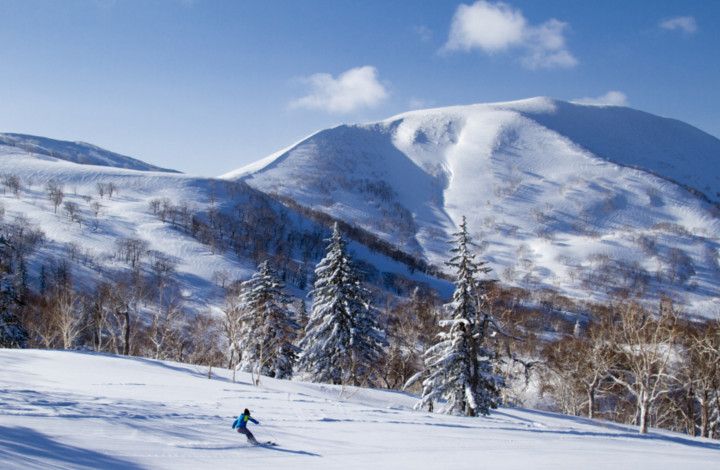
Many of the best ski resorts in Japan are located on the northernmost island of Hokkaido, such as Furano, Rusutsu, and Niseko, as well as in the Japanese Alps on Honshu.
The chance to bathe in a natural hot spring
Onsens are Japanese hot spring baths filled with mineral-rich spring water heated by geothermal forces , somewhat like a natural Jacuzzi.
Onsen baths have been present all over Japan since at least the 8th Century , when the belief that hot springs had curative and rejuvenating powers was at its height. Taking a bath in an onsen is an incredibly relaxing experience , and popular with both Japanese locals and tourists.
The superb Japanese cuisine
Food is incredibly important in Japanese culture , and while in the country you’ll be able to sample a huge range of the many delicious dishes that make up Japanese cuisine.
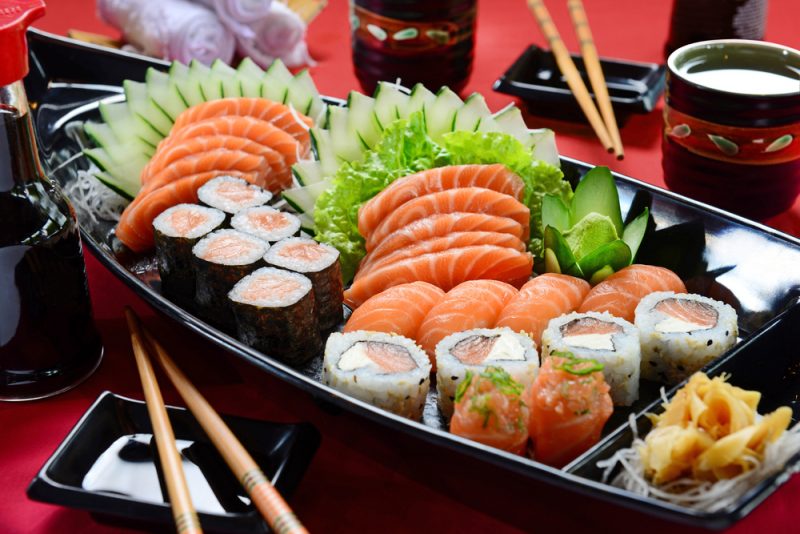
From worldwide favorites like sushi and ramen , to Sukiyaki (beef hot pot) and Yakiniku (Japanese barbeque), there are an endless number of dishes in Japan guaranteed to make your mouth water.
Japan is also the country with the most 3-star Michelin restaurants in the world , and there are are also a number of Matsuri food and drink festivals you can experience during your trip.
The fantastic architecture
You’ll be able to take in some incredible modern architecture while in the major Japanese cities, such as the Tokyo Skytree , the tallest building in the capital.
You can also find some exquisite examples of traditional Japanese architecture all over the country, such as the majestic Ise shrines on the Shima Peninsula.
The advanced technology
From futuristic capsule hotels with complimentary tablets, to high-tech public toilets , advanced technology is in full display in every corner of Japan’s cities.
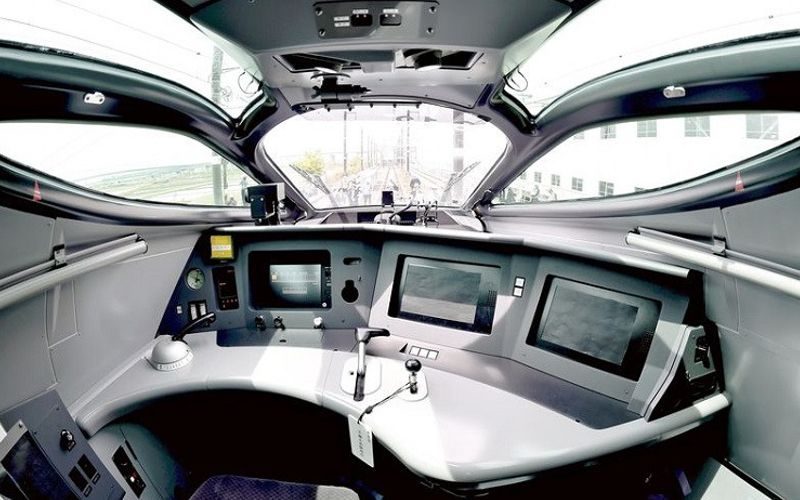
If you feel like getting an inside look at technological advancements in Japan, pay a visit to the permanent robotics exhibitions at Miraikan – The National Museum of Emerging Science and Innovation in Tokyo’s Odaiba district .
Japan is a Mecca for manga and anime lovers
If you first fell in love with Japan through manga and anime , you’re bound to be in heaven during a visit to Tokyo, which boasts a number of anime-themed experiences .
Visit J-World Tokyo , an indoor amusement park based around popular manga characters, the One Piece Tower, or the Pokémon Mega Center Tokyo , a huge store which offers a range of Pokémon merchandise exclusive to Japan.
It’s the home of Studio Ghibli
Fans of classic Japanese animation films like Princess Mononoke (1997) and Spirited Away (2001) shouldn’t miss the chance to see some of celebrated director Hayao Miyazaki’s creations at the Studio Ghibli museum in Mitaka .
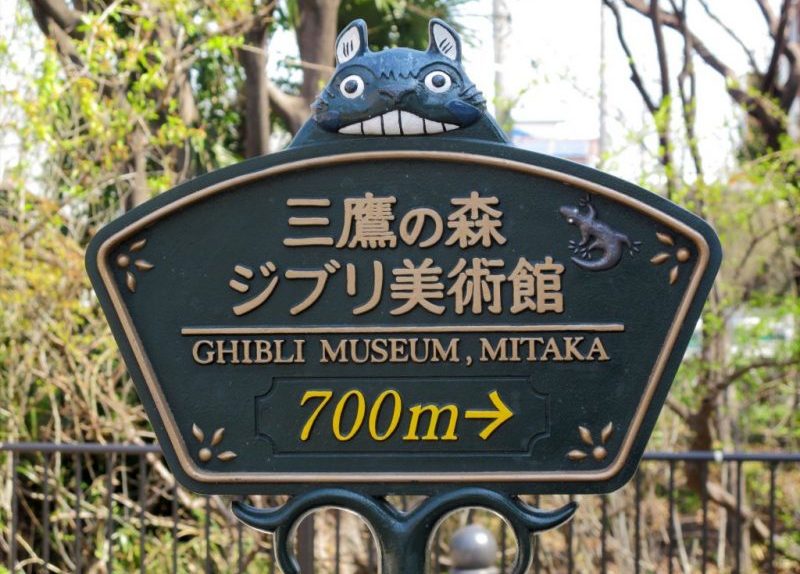
Children can play on a huge replica of the Catbus from My Neighbor Totoro (1988) and watch animated shorts exclusive to the museum. There is also an ever-changing range of exhibitions exploring Ghibli’s creative process.
Japan is the birthplace of karaoke
If you love belting out your favorite songs, whether in front of a small group of friends or a crowd of random strangers, then you’ll want to take advantage of the huge karaoke culture while in Japan.
You might not be aware that Karaoke actually originated in Japan and continues to be incredibly popular: there are currently around 100,000 karaoke boxes and bars across the country.
The fashion
Fashion lovers arriving in Japan should head directly to Tokyo’s most stylish area , Harajuku , where most of the biggest Japanese trendsetters set up shop.
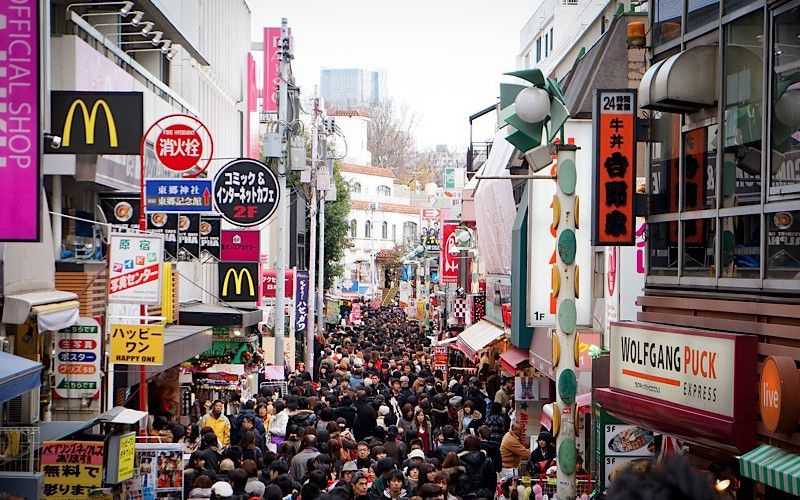
Those more interested in traditional Japanese fashion may want to pay a visit to Kyoto and try on one of the elegant kimonos or yukatas the city is famous for.
Japan is very safe
Japan is considered to be one of the safest countries in the world, and has one of the lowest global crime rates .
Japanese people often leave their doors unlocked, children are perfectly safe traveling on the subway by themselves , and visitors are able to walk around the cities at night without having to worry.
Nevertheless,as when traveling to any foreign destination, visitors to Japan should still exercise caution in crowded places and use common sense.
Related posts
Related tours & activities.
Travel Essay: We’ll always have Japan
On June 8, we embarked on a journey like no other: first to the ancient city of Seattle and then, to our final destination, Japan.
Forgoing the land of horses and tumbleweeds, we each prepared ourselves for an immediate culture shock.
Arriving at 12:44 p.m. (Tokyo time), we got our first taste of life in Japan, no cell phone signal. Fortunately, many of us had planned for this eventuality and purchased a “pocket WiFi,” a small wireless router that we could connect to for our internet needs.
After touching down in Tokyo, I was tired, surprisingly not hungry from the amount of food made available to us on the flight, and desperately wanted a shower.
Arriving at our hotel, Hotel Mystays Ochanomizu, we checked in and struggled to use the elevator which required us to insert our room key right side up before pressing the appropriate floor button.
“We’re really in Japan right now, Dylan,” I said to my roommate before bed.
“Yeah, man, we were really over part of the Pacific Ocean for about nine and a half hours,” Dylan replied.
Jet lagged, but starving, we woke up to get to our second meal in the country: breakfast!
As soon as I gave my breakfast ticket to the hotel staff member, I saw two things that immediately grabbed my attention: perch, spaghetti and a salad medley.
Opting for a more traditional breakfast experience, I made a beeline for what looked like Greek yogurt and granola.
Like most days on the trip, after breakfast we met in the lobby where Gilbert D. Martinez, our program director, and our local guide for the day, told us what the plan was for the rest of the day.
Visits for the day included trips to the Tsukiji Outer Market, Meiji Shrine and Takeshita Street, and a welcome dinner sponsored by the Asia Institute, which had helped coordinate and plan the trip.
Slightly sleep deprived and not yet prepared for the amount of walking we would do per day yet, we took a train to the market and walked a few blocks to the actual beginning of the square-like market.
The group window shopped and “ooohed” and “ahhhed” at the wide array of seafood available in the market and sampled octopi and other seemingly “other worldly” delicacies.
I was literally living in the future, 15 hours ahead of my friends and family in the U.S. The thing that made me snap back to reality each time were my classmates; just as perplexed and curious as I was of our new surroundings. We each took turns pinching each other to make sure it was not all a dream.
Before I turned the lights out for bed that night following the dinner, I turned to Dylan and recounted my excitement which exuded throughout my mannerisms during the day.
“Man, we really are in Japan right now,” I said. “Isn’t that wild?”
Tuckered out from our first full day, all I got was a snore and shifting body weight as a reply, but that was good enough for me.

Post navigation
Previous post.
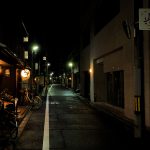
No comments yet. Why don’t you start the discussion?
Leave a Reply Cancel reply
Your email address will not be published. Required fields are marked *
Notify me of followup comments via e-mail
Save my name, email, and website in this browser for the next time I comment.

A complete 7 day itinerary for Japan
Japan is a country I have long wanted to visit, with incredible mountain scenery, one of the world’s most chaotic & quirky cities (Tokyo), a long history of culture & tradition, and of course incredible cuisine with authentic sushi on offer everywhere you turn.
I have been asked many times over the past few years of blogging why I have not yet been to Japan, with the answer being that I was just waiting for a time that was right. This is a country I wanted to see as a whole over at least 2 weeks, instead of just flying in for a quick city trip to Tokyo or a ski trip in one of Japan’s famous ski resorts.
When I came across the Splendours of Japan Tour with Trafalgar (who I have travelled with previously in Peru ), it seemed like a great opportunity to take one of my parents overseas to visit Japan, as I knew either of them would appreciate the culture and history unlike anyone else I knew – so I booked my dad a plane ticket, told him to pack his bags, and we were off!
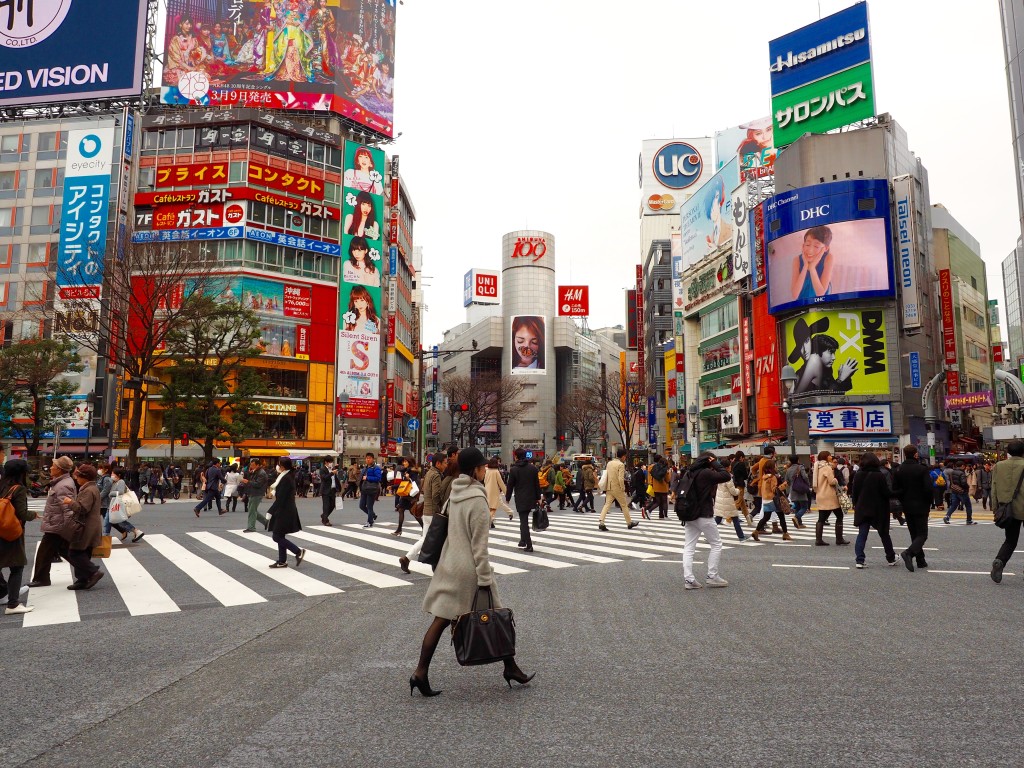
My Trip to Japan: Tokyo
Japan’s capital Tokyo is weird, wonderful, and at time completely whacky – but that is precisely what makes it such a sought after city for international visitors.
Our trip started in Tokyo as it is the main gateway to Japan and a great city to spend a few days discovering its many pockets – from the hustle and bustle of Shibuya & Shinjuku, over to the quiet peace and serenity of Japan’s public parks, and all the way through to Tokyo’s gaming district; Akihabara.
Be sure to allow yourself at least 3-5 days in this city as there is much to see and do – including tourist hot spots like the Mieji Shrine; Sensō-ji temple; Ueno Park for remarkable cherry blossom viewing in Spring; Harajuku for young fashion, nearby Omotesando for grown-up fashion, Tokyo Tower for impressive views at sunset, and if you have more time, day trips to Tokyo Disneyland, Disney Sea, or nearby Mt. Fuji.
For our Tokyo hotel we stayed at New Hotel Otani and I would highly recommend it, though for location I would have preferred to be position in Shibuya or Shinjuku.
Further reading:
A Quick Guide to Tokyo
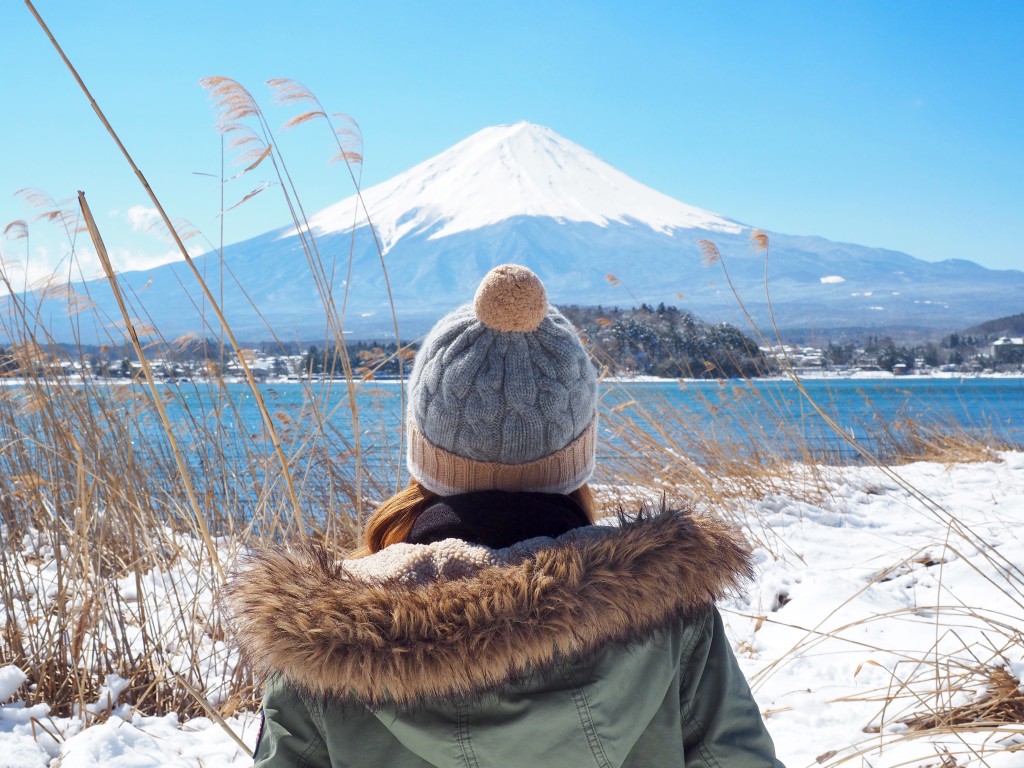
Mt. Fuji Day Trip
After enjoying all of the chaos and craziness that is Tokyo, allow yourself one day to get out of the hustle and bustle and escape to nearby Mt. Fuji to view the impressive mountain where many Japanese and foreign guests make their climb to the summit each year.
Whilst here enjoy great views (weather dependent) from Lake Kawaguchi and enjoy a delightful blueberry + vanilla soft serve from the gift store.
Onwards from Mt. Fuji we proceeded to visit Hakone, a small village on lake Ashi, which also offers great views of Mt. Fuji from afar by taking the cable car to the viewing platform.
Further Reading:
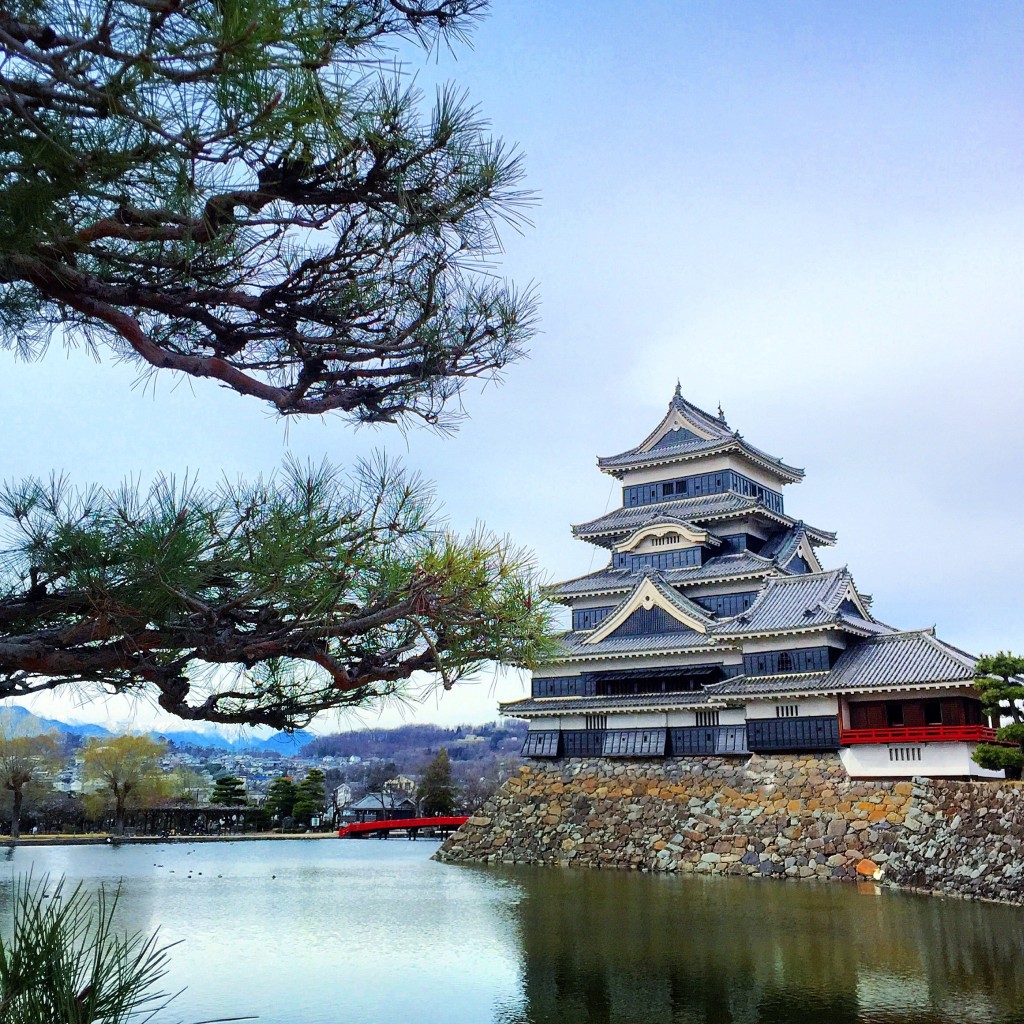
Matsumoto Castle (En route to Takayama)
After 3 nights in Tokyo (I would suggest booking at least 1-2 more nights to allow time to see/do everything in Tokyo), we made our way by bus to Takayama via Matsumoto Castle – one of Japan’s most picturesque castle. Also known as crow’s castle due to its black exterior, this castle is entirely built of wood and as per Japanese tradition, built completely without nails (it pieces together like a jigsaw puzzle and can be entirely pulled apart and put back together).
There isn’t a great deal to see beyond the castle, so after a quick look inside and walk around the grounds, it was onwards to Takayama in the same day!
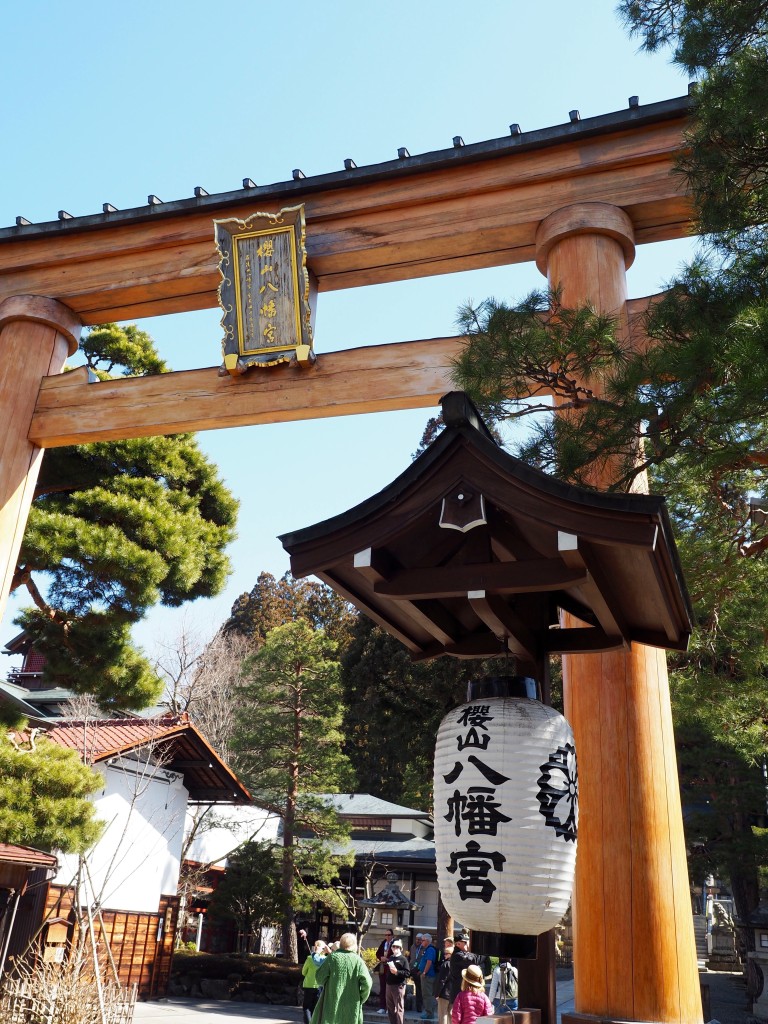
This gorgeous little city known as Takayama is the gateway to the Hida region. One day to explore this city is enough time to see most points of interest, though if time is on your side this would be a great town to slow down and spend a couple days immersed in Japanese culture and traditions.
Soft serve ice cream plays a big role in Takayama with many flavours available on the many street – don’t be afraid to try them all! There are also some great Izakaya restaurants here (casual Japanese food), offering a great chance to try regional food.
For our hotel in Takayama we stayed at the three-star Hida Plaza Hotel . I wouldn’t particularly recommend it and I believe Takayama is a great location to try a traditional Ryokan whilst in Japan.
A Quick Guide to Takayama
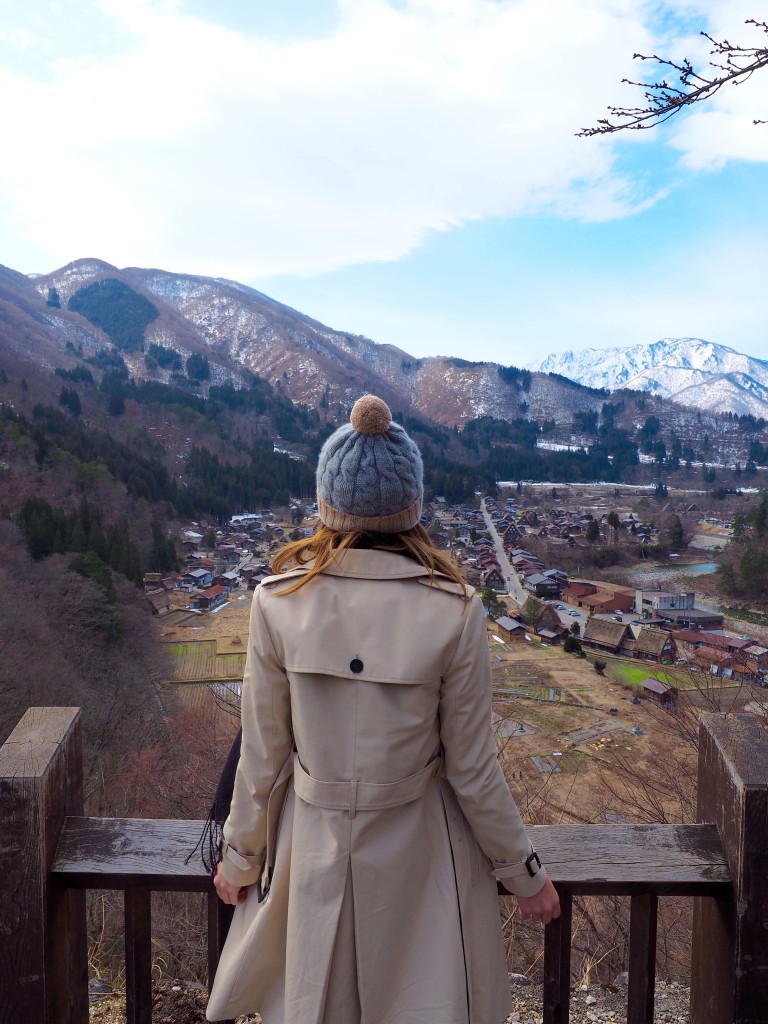
Gokoyama & Shirakawago
After two nights in Takayama, we made our way through countryside villages toward the busy city of Kanazawa – but as is often the case, today was all about the journey to get there.
En route we stopped at two traditional villages – characterised by thatched roofs and traditional wooden houses. These two villages are UNESCO World Heritage listed as they portray Japanese traditional in its truest form – so be sure to take plenty of photos!
Onwards we stopped at a Nomura House, a traditional samurai house where we learned the history of the local region, ongoing traditions and the history of the samurai.
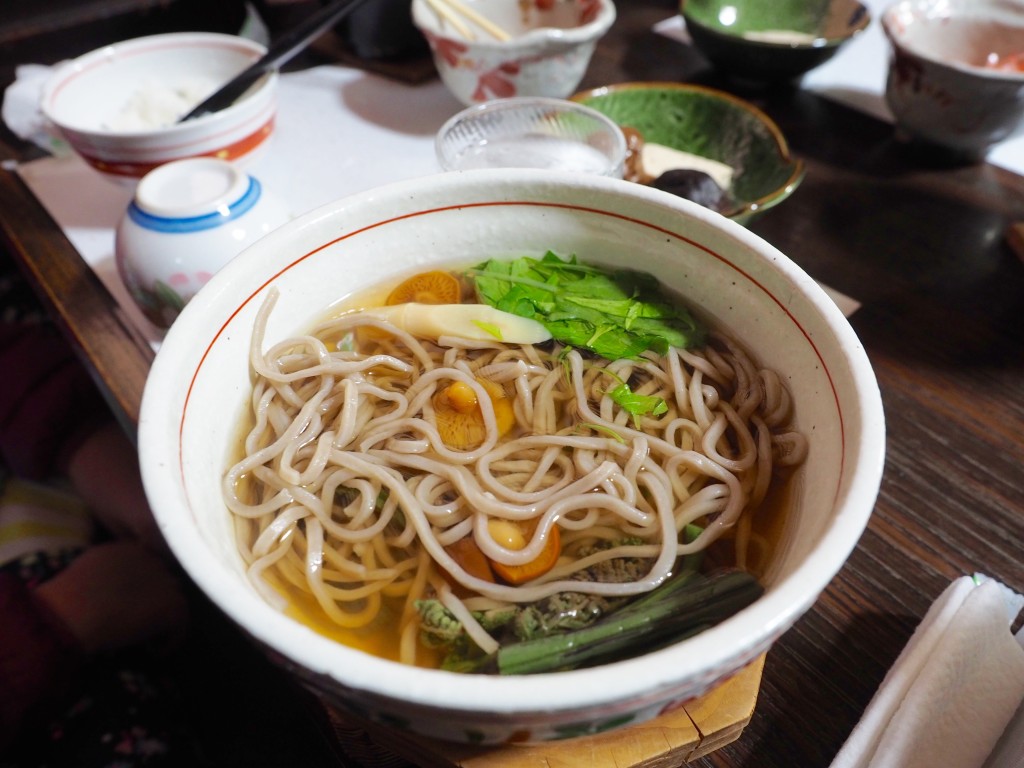
Sadly I have only a couple of rainy, not-so-clear photos to show from our time in Kanazawa, as we experience rained for the two days we were though and thus mostly stayed indoors.
Should you be received in Kanazawa with sunshine, be sure to visit Kenroku-en, regarded as one of Japan’s three most beautiful gardens and just next door is Kanazawa castle, which is also worthy of a visit.
Kanazawa is a larger city (with multiple Starbucks and McDonalds if that gives any indication!), so I would recommend just one day to explore here, to allow for more time in the countryside or cities that have more to offer in terms of sightseeing and culture – like the next stop; Kyoto!
For our hotel in Kanazawa we stayed at the Kanazawa Tokyu Hotel , which I would highly recommend for both location & a fantastic buffet breakfast!
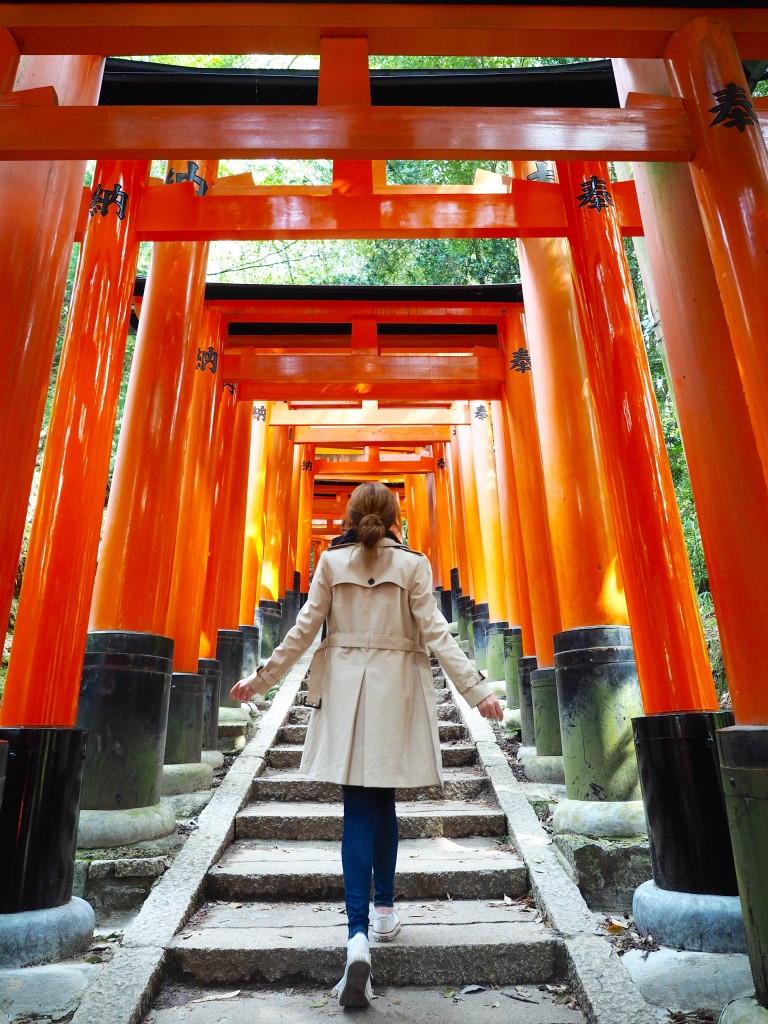
Once the capital of Japan, Kyoto is as idyllic as one could ever imagine Japan to be. Although the charm of Kyoto lies beneath the bustling city that it is today, when you take the back streets you soon begin to discover the history, culture and traditions that live on in Japan to this day.
Be sure to wander through Gion, Kyoto’s most renowned Geisha district and an absolute mecca for green tea (matcha) lovers! Here green tea comes in any and all forms – ice cream, parfaits, frappes, hot lattes and more!
Kyoto is also home to the famous Fushimi Inari Taira – an incredible shrine of thousands of red torii gates that line the 4 kilometre stretch to the sacred Mt. Inari. Nature lovers will enjoy the bamboo groves, whilst those looking for a city escape can always make a quick trip to Osaka – just a 30 minute express train ride away!
For our hotel in Kyoto we stayed at the Hotel Nikko Princess which I would highly recommend due to the large rooms, amazing service (particularly from the concierge), great location and a great breakfast buffet.
A Quick Guide to Kyoto
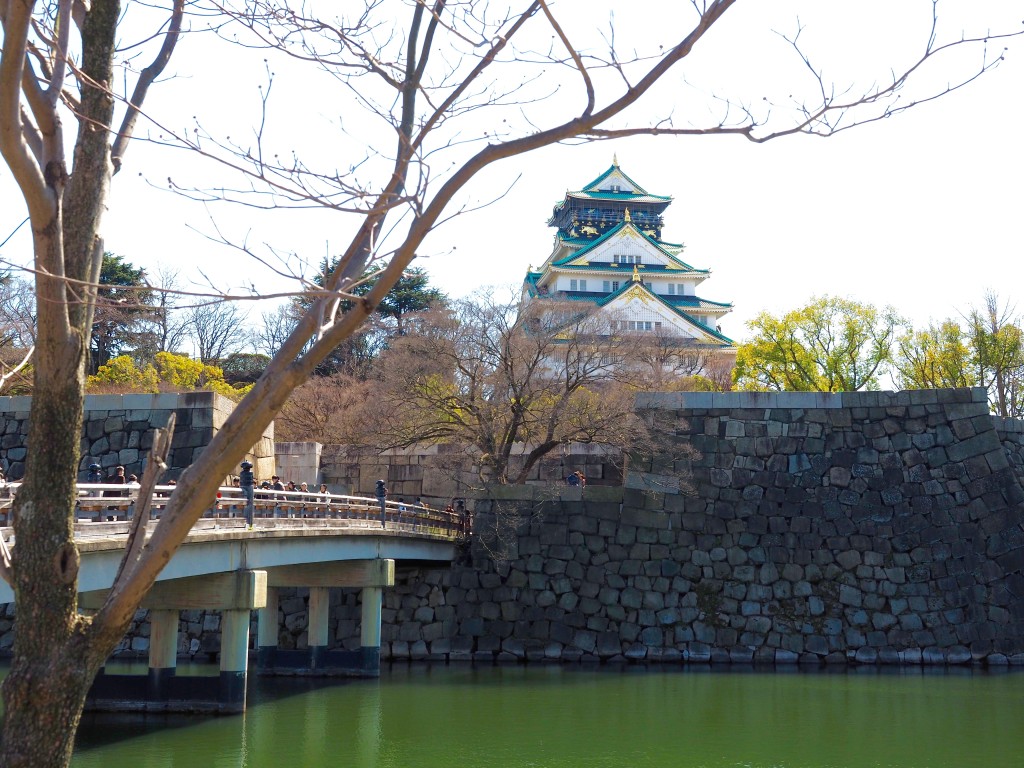
Although Osaka wasn’t on our itinerary for the tour, we had an extended stay at the end in Kyoto, which allowed for a spontaneous trip to nearby Osaka (30 minutes by express train from Kyoto). The trip happened completely by chance, as we were sat in our hotel room making a plan for the following two days, deciding when would be best to visit each location for less crowds, particularly as it was a public holiday that day. All of a sudden we made the decision to head out of Kyoto to nearby Osaka and experience the hustle and bustle of now my absolute favourite city in Japan.
My favourite areas to explore in Osaka were Shinsekai and Dotonbori. Shinsekai felt like a time warp as you quite literally step back in time to a Japan that time forgot, but of course with the added colour and livelihood of the 21st Century! Dotonbori is the main tourist thoroughfare in Osaka which is also home to the best street food in Osaka (and some of the best in Japan), whilst allowing plenty of opportunities to spend some cash.
A Quick Guide to Osaka
World of Wanderlust experience the Splendours of Japan Tour as a guest, however my opinions and oodles of photos are all my own!
Brooke Saward founded World of Wanderlust as a place to share inspiration from her travels and to inspire others to see our world. She now divides her time between adventures abroad and adventures in the kitchen, with a particular weakness for French pastries.
Find me on: Twitter | Instagram | Facebook
Incredible places would be great for students to visit in their winter vacations. Students will get to learn many things about these places.
*early next year
Hi Brooke! I love your Japan travel blog! Planning to go there early next week. Btw, may I ask what camera do you use? Your photos are fantastic!
Great post, japan is so calming even though i haven’t been there by reading your post i feels like i was also there. hope i can visit there soon and try alot of ramen, thankyou!
Great blog! Thanks for sharing informative and complete japan itinerary.
Japan always make me dream…and you made that too with your post and pictures!! I really can’t wait for restrictions to go away, the first place i’m gonna visit are Gokoyama e Shirakawago for sure!

Los Angeles
Plan a trip
First trip solo
Packing guide
20 Best Places for Solo Female Travel
Travel after a break up
20 Places in your 20’s
WAYS TO TRAVEL
Solo travel
Adventure travel
Luxury travel
Learn a language
Become a blogger
20 Reasons Why You Should Visit Japan
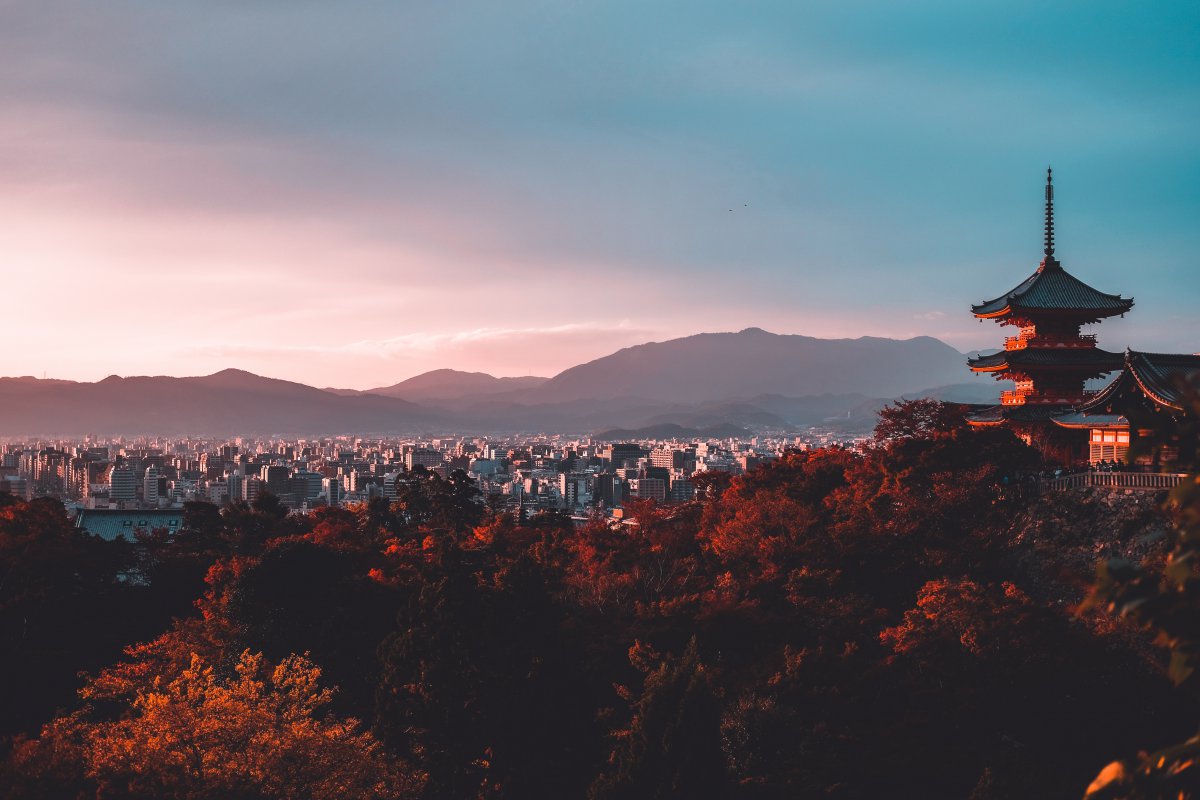
Japan is the most amazing tourist destination and it offers many unique experiences that you cannot find in any other part of the world. The culture of this country is an interesting blend of Eastern traditions and Western modernity that can be seen everywhere. Japan is one of the oldest civilizations and has a beautiful and diverse history. The stunning, diverse scenery with mountains and breathtaking views, which are much appreciated by the Japanese, offers so many different experiences that attract tourists from all corners of the world. In this article we give you our best reasons why you should make a trip to this amazing country at least once in your lifetime.

1. Pristine natural scenery
2. mount fuji , 4. incredible food, 5. beautiful temples, shrines, and zen gardens, 6. friendly people, 7. efficient public transportation, 8. thrilling experiences , 9. festivals/matsuri, 10. clean country, 11. shopper’s paradise, 12. weird stuff, 13. sakura (cherry blossoms), 15. onsen & sento , 16. unesco world heritage sites, 17. japanese castles , 18. sumo & sport events, 19. traditional arts and crafts, 20. unique accommodation, tour packages, other articles you might like.
The first reason to visit is obviously the natural beauty of the country. Even though many people think of Japan as a highly modern country with flashy neon lights and advanced technology, shopping malls and high-end stores, there are many ways in which Japan is a nature lover’s paradise as well!
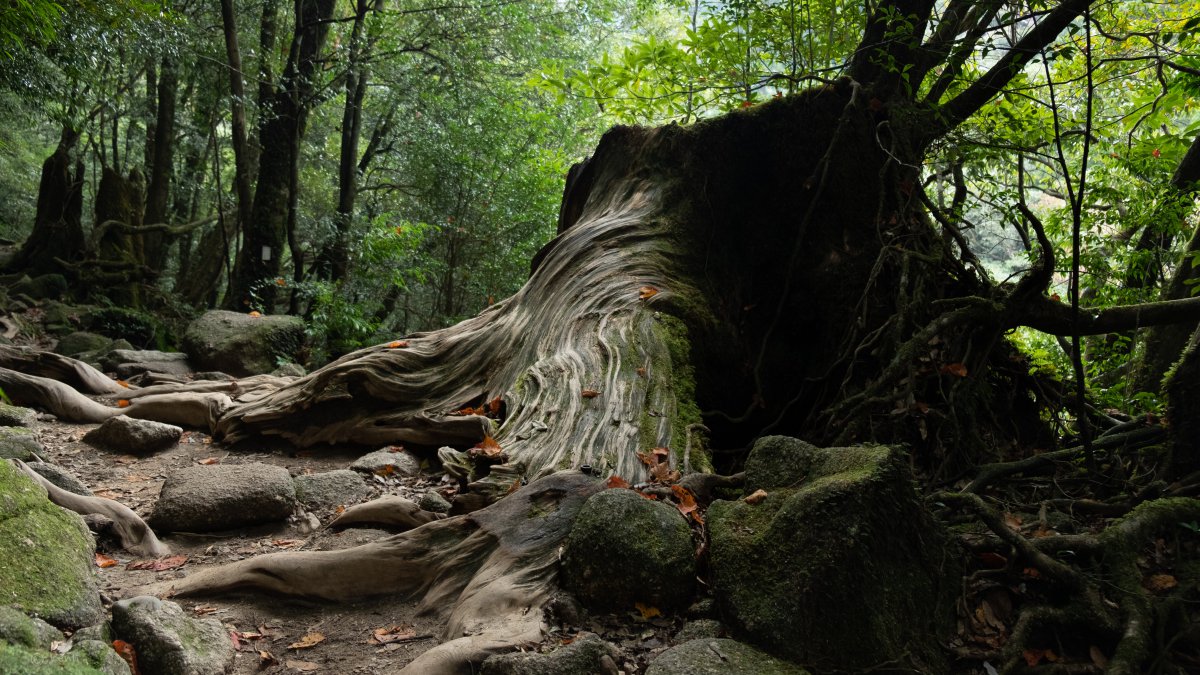
As soon as you travel outside of the big and modern cities you will discover that the country is home to some of the best natural scenery in the world . From the wilderness in Hokkaido to the white pristine beaches of Okinawa , Japan’s nature is incredibly diverse. The rugged mountains, rocky coastlines, pristine white beaches, bamboo forests and some of the world’s most beautiful waterfalls are just some of the natural beauty to be enjoyed all year round.

Mount Fuji is famous all over the world as a place to visit during any season of the year. But the majestic Fujisan is not ‘just a mountain’ as it takes a very special, sacred place in the Japanese culture. Since the 7th century it has been a sacred site for Shintoism, the indigenous religion of Japan . Japanese people have always held Mount Fuji close to their heart and Mount Fuji is displayed in many artistic outings, including (ancient) pottery, calligraphy, ukiyo-e paintings and woodblock prints.
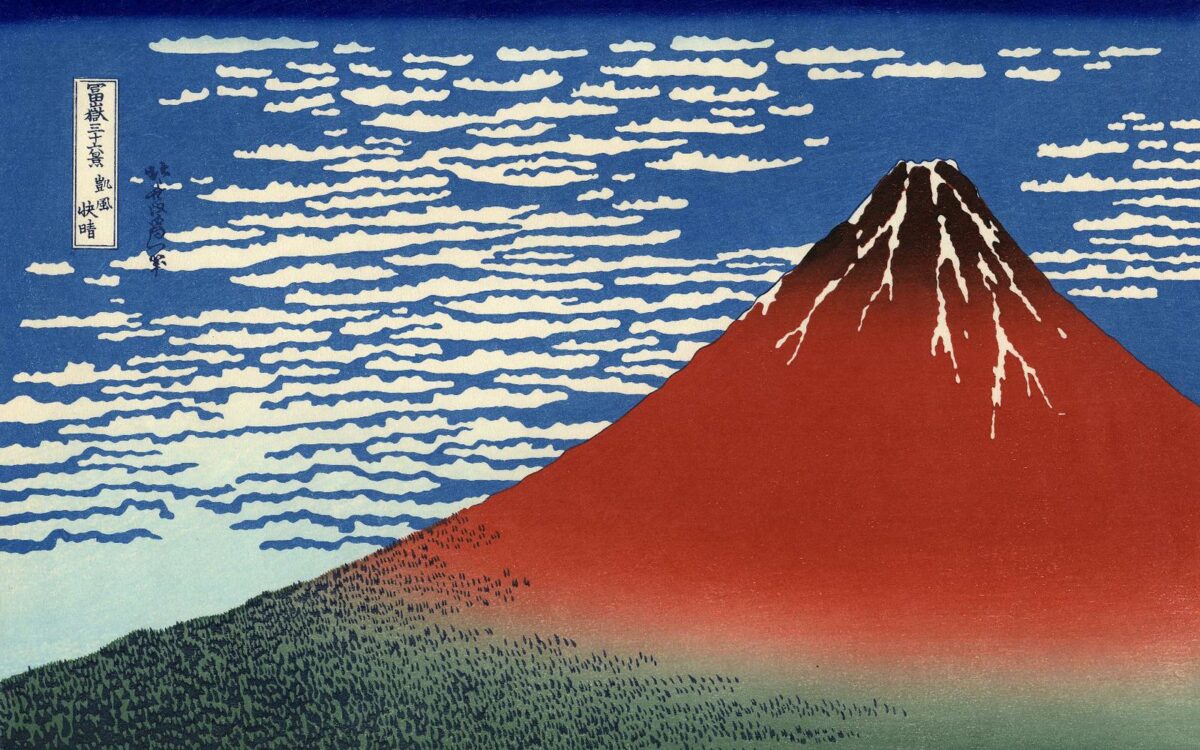
Climbing Mount Fuji is at the top of many people’s bucket list and an estimated 400,000 people climb the volcano each year. The climbing season of the highest peak (3,776 m) in Japan lasts from early July to early September. Though, even if you are not keen on making your way to the summit, Mount Fuji is a sight to behold .
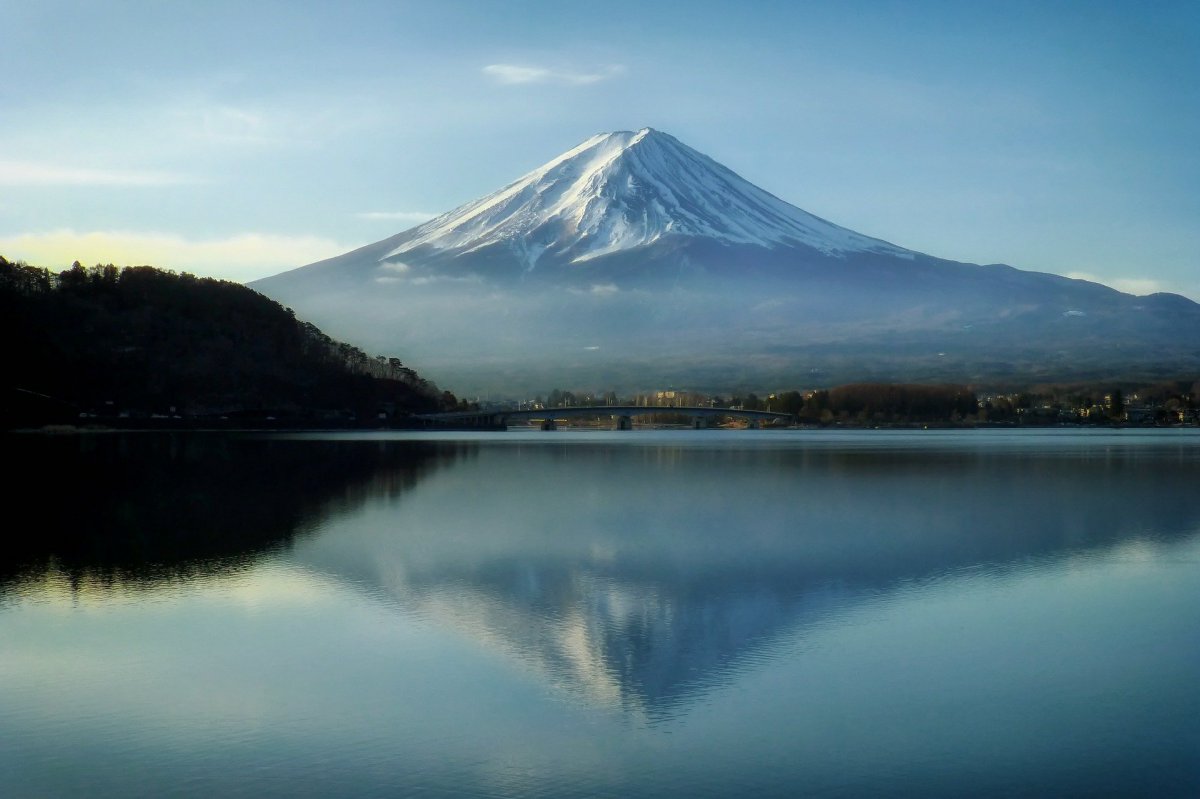
▼Book our tour to the 5th station of Mt. Fuji!
Japan is amongst the safest countries in the world , with an extremely low crime rate. This is something the Japanese are, understandably, quite proud of. Japanese people often leave their doors unlocked, children are perfectly safe traveling on the subway by themselves, and visitors are able to walk around the cities at night without having to worry. Japan’s low crime rate is partly due to the cultural belief in Japan where they always prioritize the common good above their own needs. You will likely come across some situations that you might think of as dangerous or stupid behaviour, but are perfectly normal in Japan. Japan is so safe, you can fall asleep on the train in Tokyo, the world’s biggest city, and wake up with your wallet and phone still in your possession. Or even on the street, you might see some salaryman passed out after 1 or 2 drinks too many but they won’t be robbed of their valuables. When you do forget something in a restaurant or on the train, always try to go back, it is highly likely that someone kept it for you or brought it to the police!
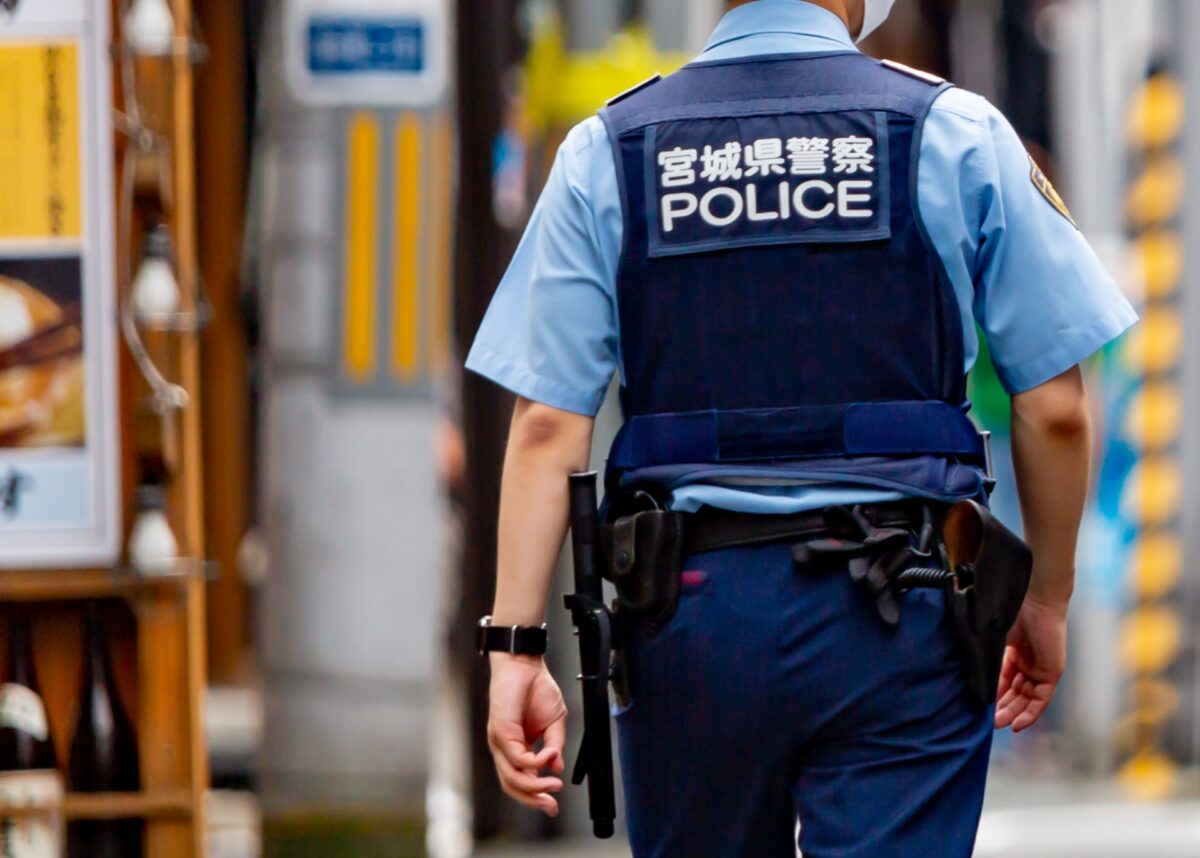
Even though Japanese cuisine is available around the world, the country attracts millions of tourists every year just to experience authentic Japanese food . Some of the usual experiences are the sushi conveyor belt and sake bars and don’t forget to try some fresh sushi at Tsukiji Fish Market or the delicious street food like takoyaki in Osaka.
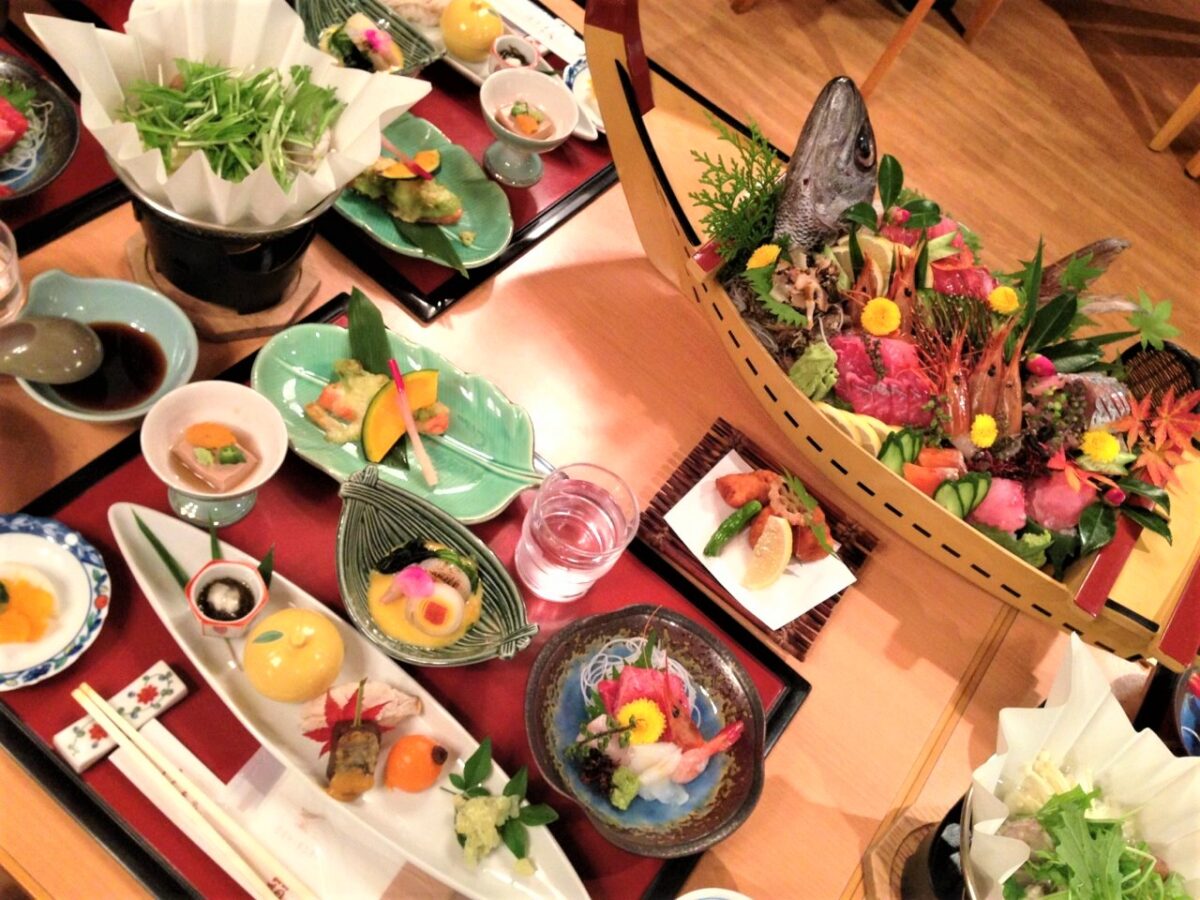
For many visitors, a trip to Japan provides the opportunity to indulge in some authentic Kaiseki food. Kaiseki is a traditional form of cuisine that has evolved over a period of thousands of years, using ingredients that are hardly found in any other part of the world. Any random, shady looking place makes the best sushi, ramen or tempura. Even the konbini food is tasty and freshly prepared on a daily basis. Tokyo has more Michelin stars than any other city in the world , with also the most three-star restaurants (12) in the world! Add to it a variety of traditional Japanese drinks and you have an experience of a lifetime waiting for you!
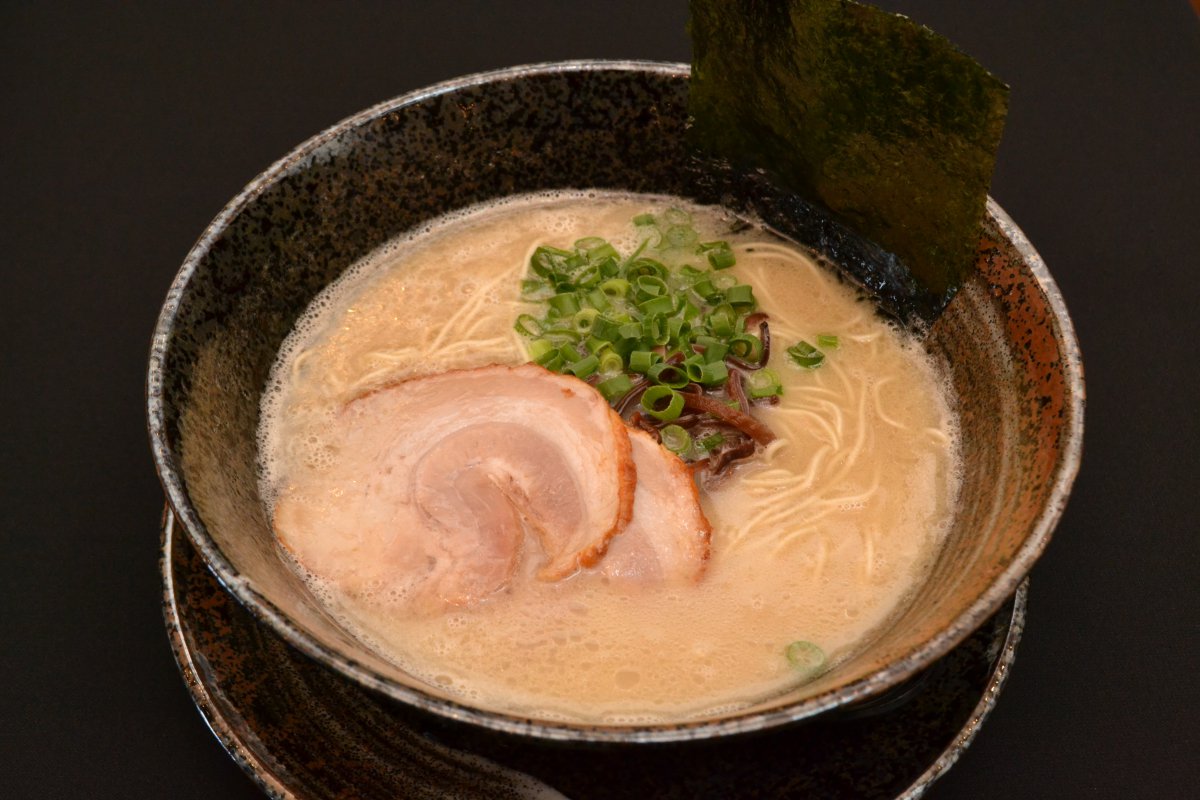
Are you hoping to try all the best food in Japan but don’t know where to start? Don’t worry, you can book a fun and delicious food and drink tour with us! We will assure that you will hit all the best spots that you would never normally stumble upon.
There are an estimated 80,000 temples and shrines in Japan of all sizes and some are over 1,000 years old! The Buddhist temples and zen gardens are incredibly beautiful and if you enter them you really can experience how peaceful and magical these places actually are.
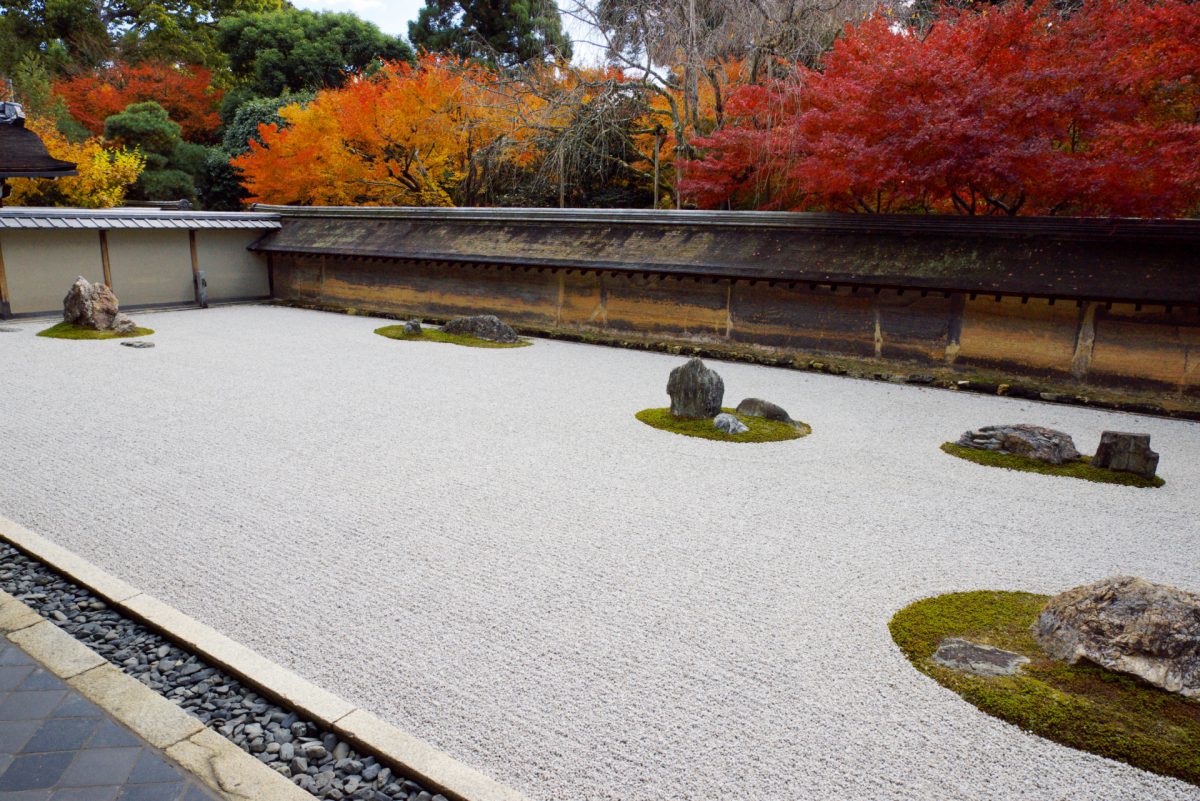
Inari Shrines are the most familiar Shinto shrines to Japanese people and they are also known as “o-inari-san”. Thousands of them are spread all over the country. One of the most important Inari Shrine is Fushimi Inari in Kyoto, which is dedicated to Inari, the Shinto god of rice. It is famous for its thousands of vermilion Torii gates and definitely something you have to see with your own eyes.
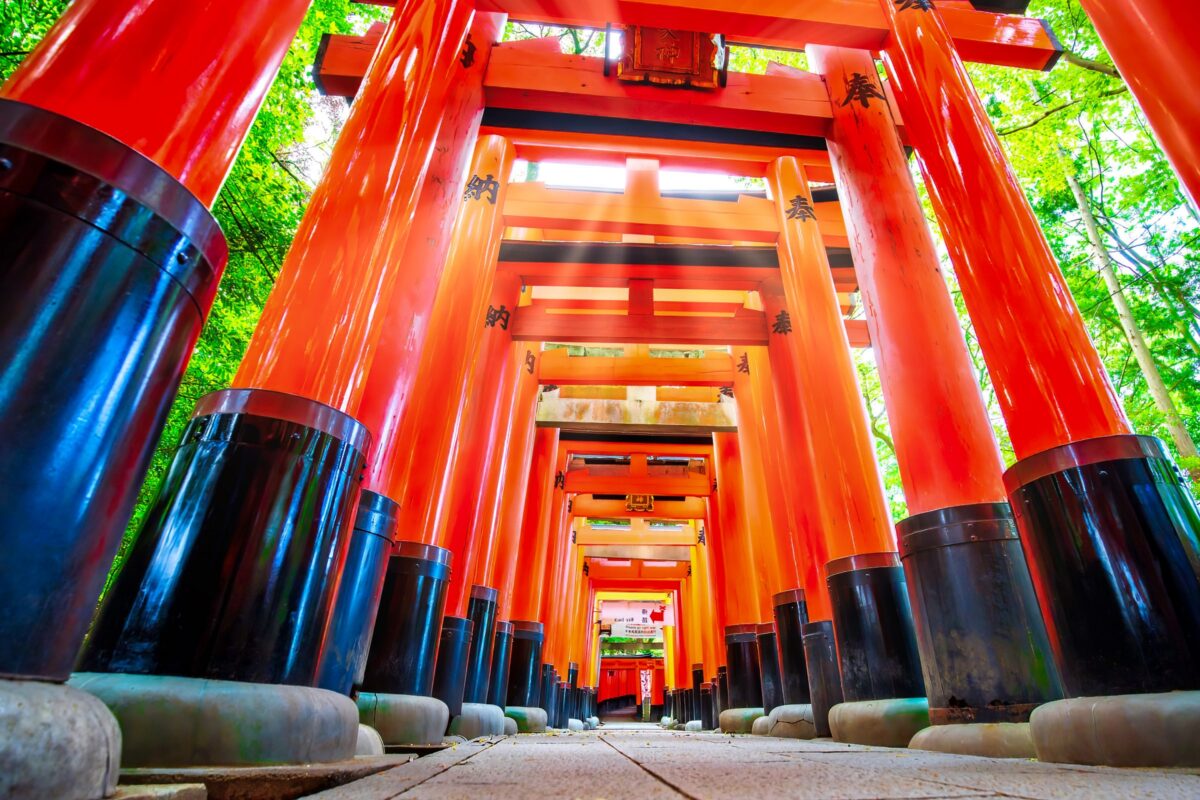
Even if you are not visiting Kyoto, you will have the opportunity to visit shrines with rows of torii gates throughout the country , even in the centre of Tokyo!
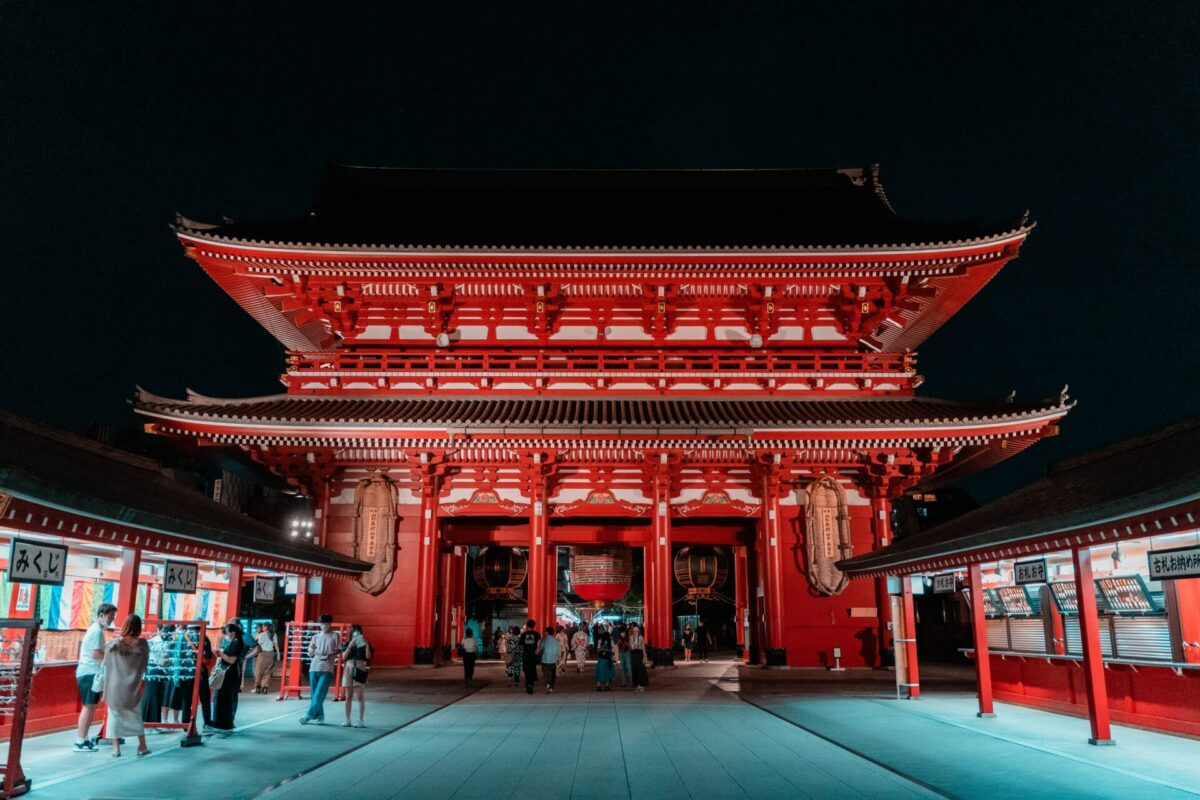
When you’re visiting Japan you will quickly find out that Japanese behavior is completely different to how people behave in Western countries. People in japan have the attitude to bother the people in their environment as little as possible. You will notice it as soon as you enter the train because it is amazing how silent it is in the train! Everyone is as respectful as possible and also incredibly helpful. If you have a question or seem to be confused about something you will always find someone who can help you! The language barrier is difficult at times, but Japanese people will always try to help you. It is difficult to describe a feeling like this with words so you should definitely experience on your own.
Recommended article: Why You Should Learn Japanese

The public transportation network in Japan is simply amazing . Especially when you are in the bigger cities, the system is just incredible. With trains or metro’s departing every few minutes (during the day) it is amazing how fast you can commute from one part of the city to another part within a short period of time.

The famous shinkansen, also known as the bullet train, takes you to all parts of the country. The extensive high-speed train network in Japan, connecting Hokkaido, Honshu and Kyushu, is extremely reliable with frequent departures throughout the day. The Tokaido Shinkansen line, connecting Tokyo, Osaka and Kyoto, is Japan’s busiest and most popular line with 370 departures each day! As a tourist it is definitely the most convenient, reliable, fastest way of discovering Japan . The best part for international tourists is that they can purchase a Japan Rail Pass that will give them unlimited travel for a designated period of time throughout the country!
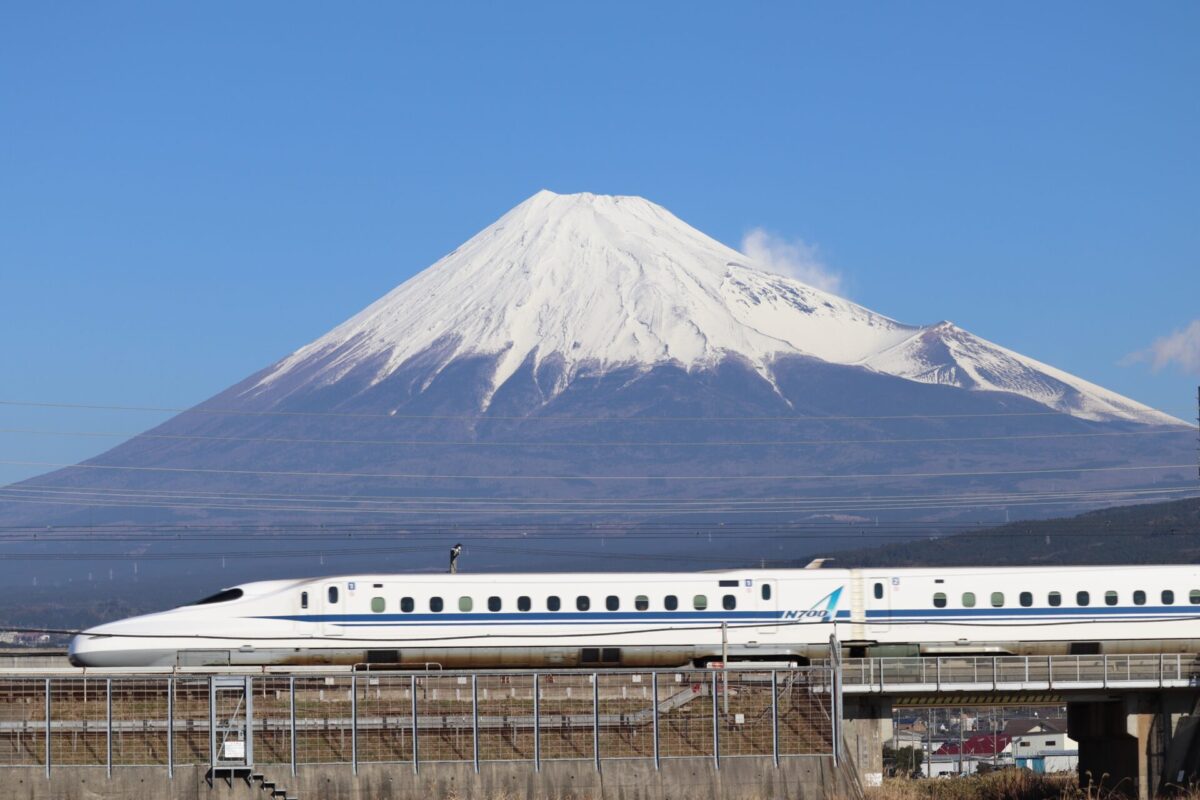
Adventure tourism is not something that one would associate with Japan, but the truth is that you can find many exciting experiences in this country. Whether it is snowboarding or skiing in Hokkaido or Nagano , or cycling along the Seto Inland Sea , catching a glimpse of Mount Fuji from the rollercoasters of FujiQ Highlands or sand-boarding in Japan’s desert of Tottori , the options for thrill-seekers are endless.
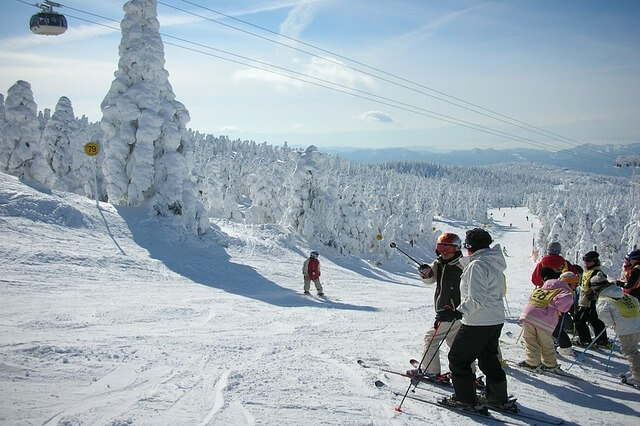
With about 75% of Japan covered in mountainous landscape you can embark on some amazing multi-day hikes or walk the steps of ancient pilgrimage routes like the Kumano Kodo Trail or the Shikoku 88 Temples Pilgrimage and witness the perfect mixture of nature and culture. At many tourist spots like Arashiyama or Asakusa you can also actively explore the area while riding a traditional Japanese rickshaw.

At any time of the year, Japan hosts a number of events and matsuri for anyone to enjoy . Matsuri are traditional Japanese events where often floats, called mikoshi, are carried around between temples and shrines. They often take place in the summer and attract thousands or even millions of visitors with their energetic atmosphere, and amazing street food activities for everyone to enjoy.
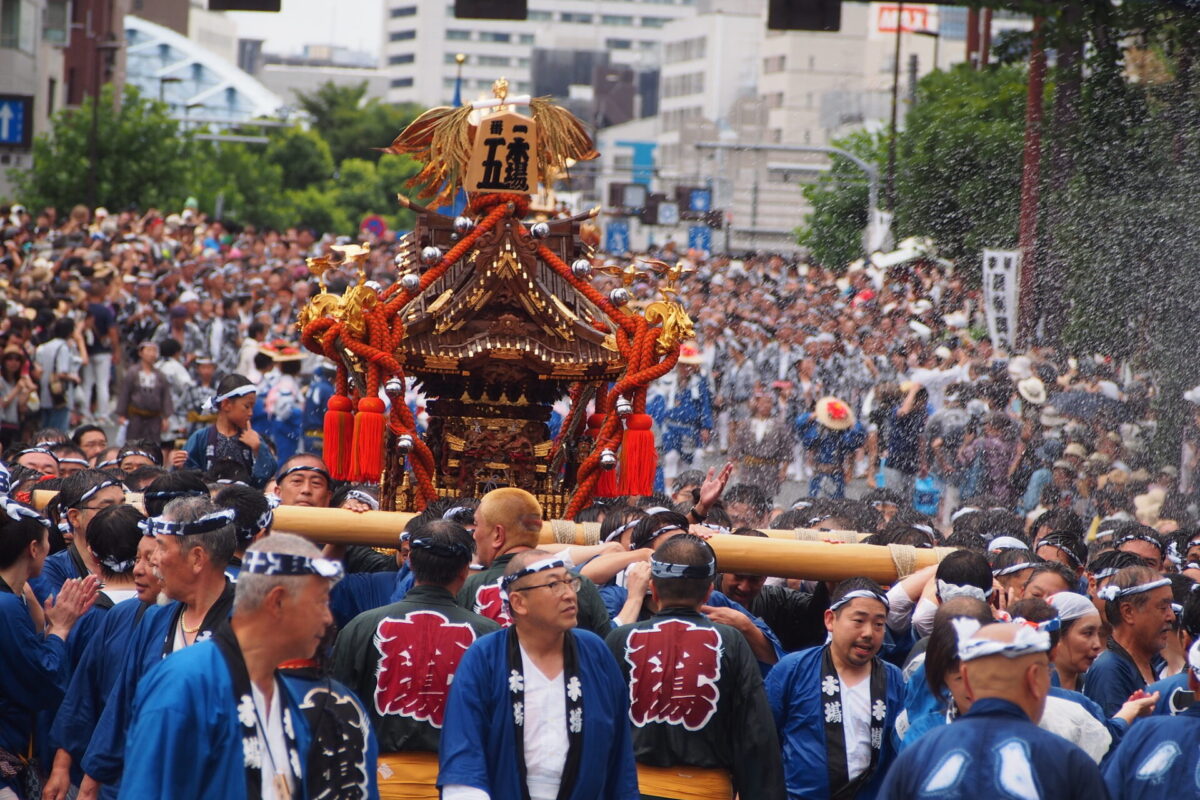
In wintertime you will find some unique and great festivals too, like the Kamakura snow hut festivals that are held around the country. There are also several illumination festivals with spectacular light shows and decorations, some only over the Christmas period where others last well into spring. Another world famous festival is Sapporo’s Snow Festival that attracts millions of visitors each year with spectacular ice sculptures and cozy winter scenes.

Something that you will soon notice after your arrival; Japan is extremely clean ! Even in the metropole of Tokyo you will not often see trash laying around, no cigarette butts on the curbs and streets smell nice. The lack of garbage bins available in the cities might make you wonder how is this even possible? The answer is simple, Japanese people respect their surroundings, clean up after themselves and take their trash home. A cultural principle that is highly valued in the Japanese society is mottainai , which can be freely translated as nothing goes to waste. When something is broken, it is not immediately replaced but often repaired and re-used.
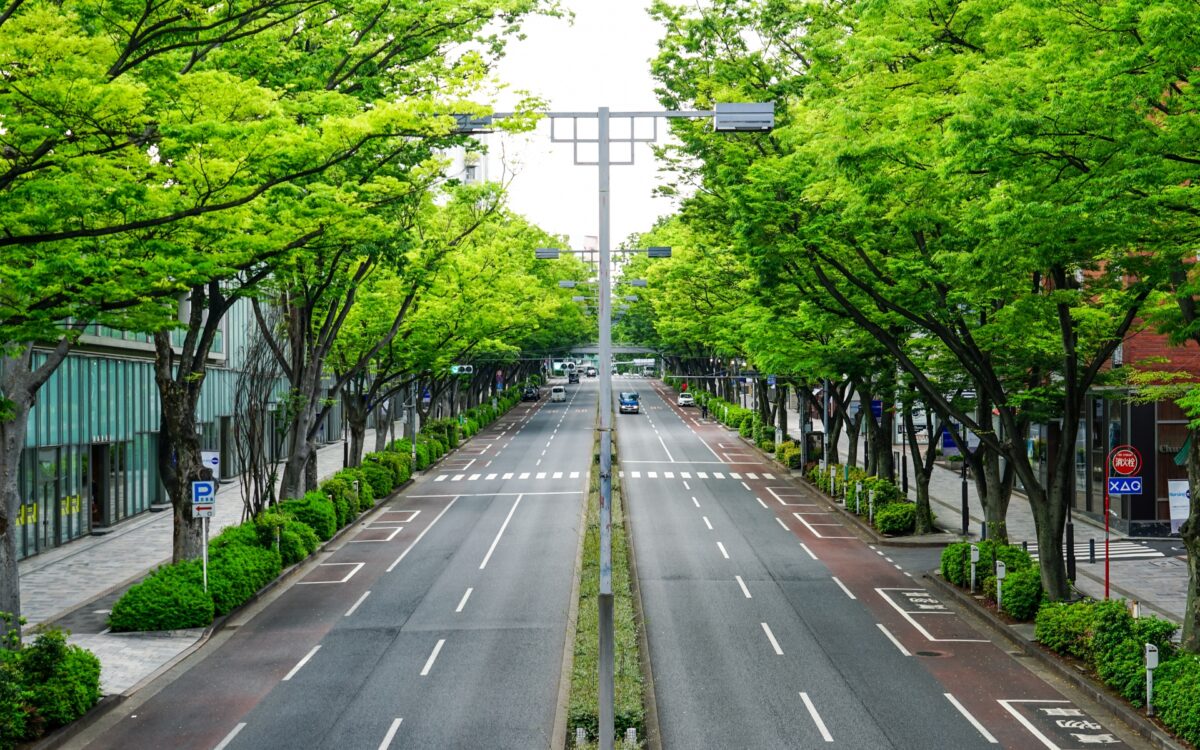
Shopping is another reason why you should visit Japan, more so for the local brands than for the international ones. Tokyo and other major cities have world-class shopping centers as well as traditional markets where you can shop for local handicrafts and souvenirs. Often cities, small or big, have their own local shopping street.
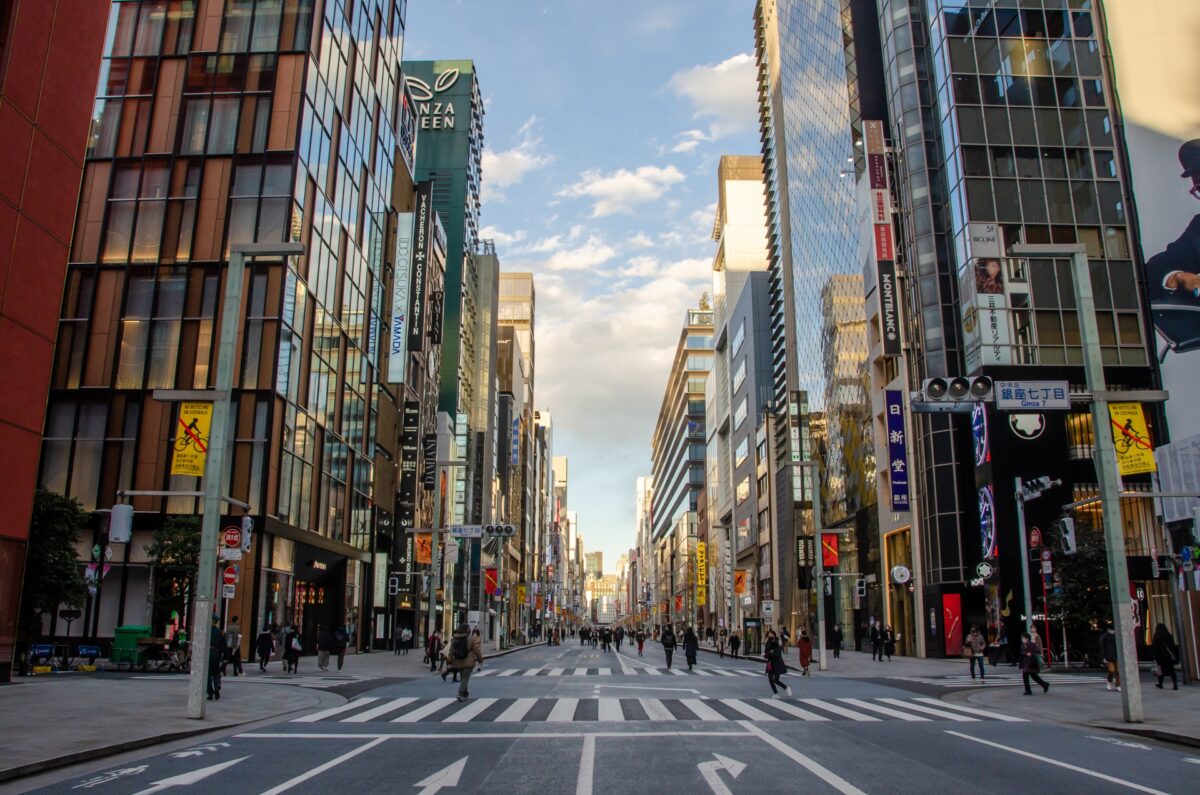
These shopping streets full of small stalls and local vendors are known as a Shotengai. If you are travelling to Tokyo, then you should visit the popular areas in Harajuku, Ginza and Akihabara. If you go to Osaka, Umeda and Shinsaibashi are also popular shopping destinations. For gaming and anime lovers, shopping in Tokyo will be an unforgettable experience, Nakano would be the best destination for you .
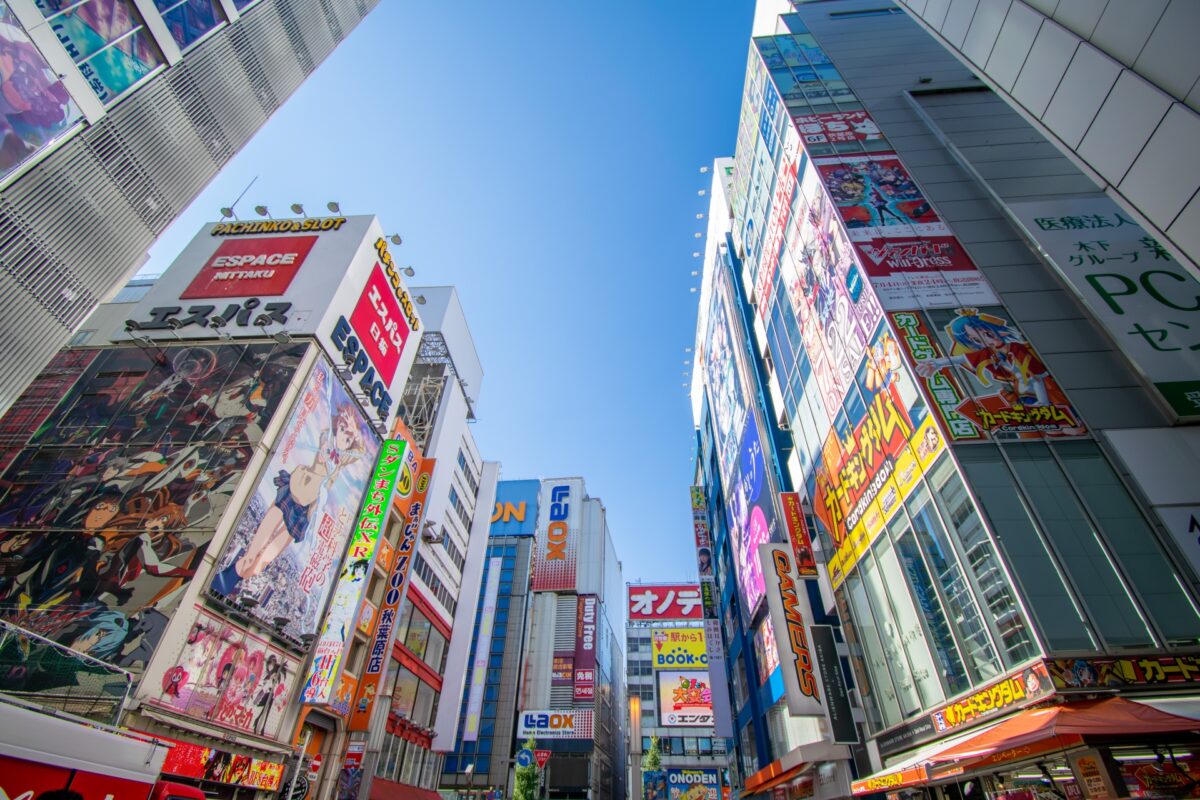
Square watermelons, washing toilets that blow-dry and play music, plastic food menus, cartoon versions and mascottes of everything, maid cafe etc, Japan has all kinds of unique things.
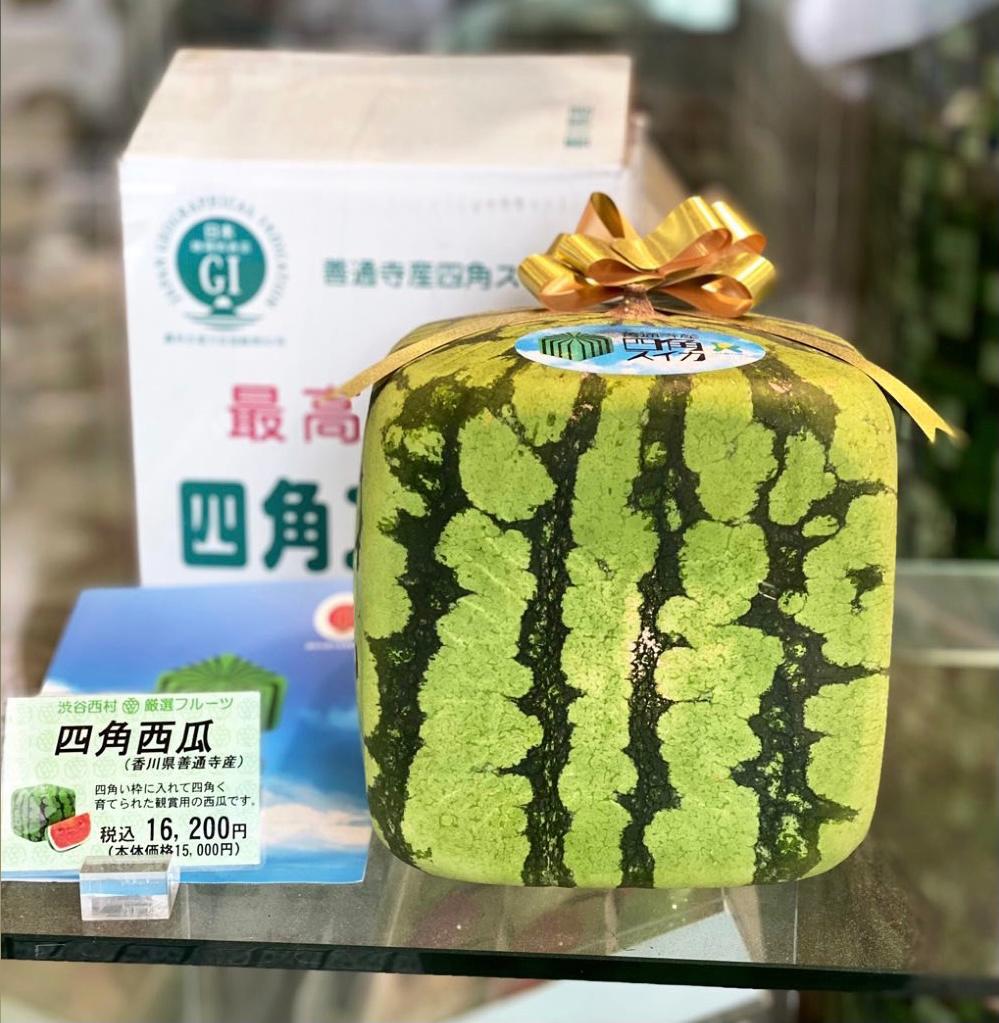
Walk around in Harajuku to experience the famous Japanese kawaii culture , it is literally everywhere! Cute girls, kawaii food, mascottes, the kawaiiness in Japan knows no limits! Another unique popular culture is Japan’s otaku or geek culture. Otaku refers to pop culture fans who are obsessed with manga or anime. Best places to experience some of Japan’s otaku culture are Akihabara and Nakano in Tokyo.
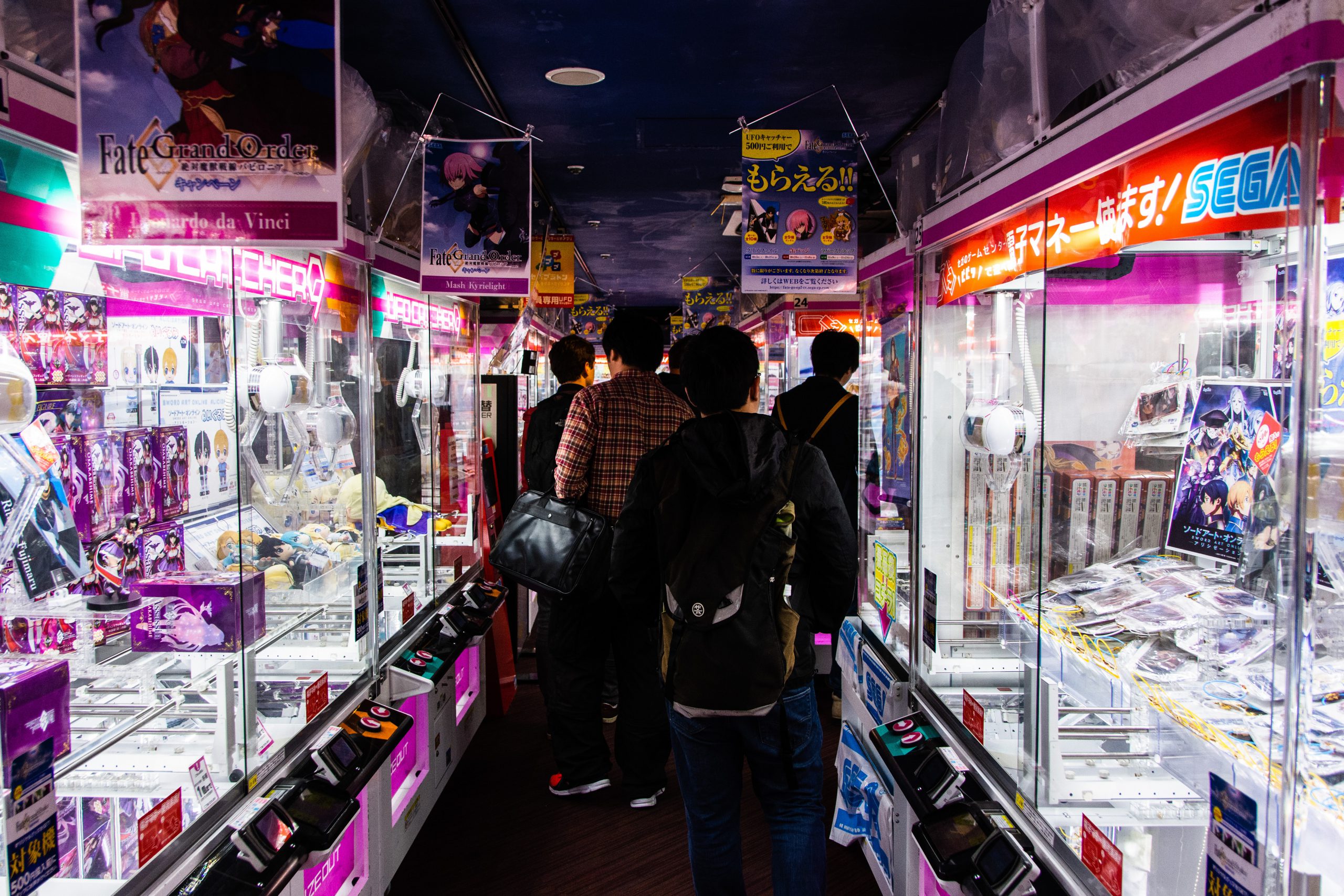
▼Explore all the weird that Harajuku has to offer with the tour below!
No visit to Japan in spring is complete without sakura. For two weeks, everyone and everything in the spirit of the beautiful flowers. Everyone wants to see this million dollar view and hanami (blossom viewing parties) are everywhere. Japan is very passionate about picnicking under the cherry trees in full blossom.

Sakura presents the arrival of spring, a time for renewal and optimism and because of the short blooming season (about two weeks), the cherry blossoms also symbolize the transience of life, a major theme in Buddhism. During the sakura season you will see limited edition sakura (flavoured) treats and souvenirs everywhere.
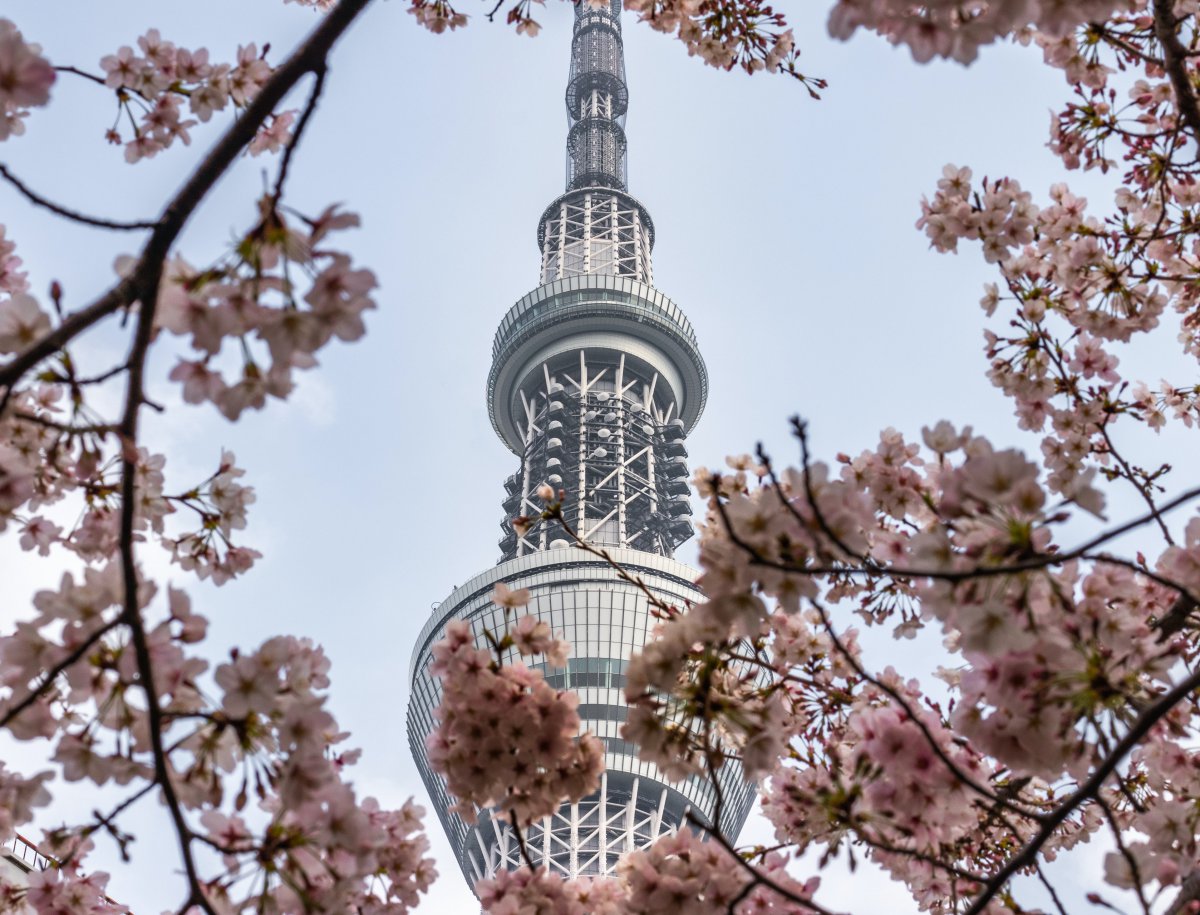
One of the biggest contributors to Japan’s famous anime culture is the Ghibli movies. Have you ever seen My Neighbor Totoro or Spirited Away? They are some of the world’s most famous anime movies produced by the renowned Studio Ghibli, the animation and art producer founded by Hayao Miyazaki. In Tokyo, you can visit the Ghibli Museum , home to drawings of Studio Ghibli movies, models of how animations are made, and a small theater showing a special short film. Also, Japan opened the Ghibli-themed park in Aichi prefecture in 2022. A must visit if you are a Ghibli fan! If you want something extra, you may want to visit some of the locations which were used in Ghibli movies !
When asked about their favourite thing in Japan, many people will (amongst others) answer onsen. Taking an onsen, a hot spring filled with mineral-rich spring water heated by geothermal forces that contains several minerals beneficial to the body, is a must-try activity for tourists as it is completely different from taking a bath in other countries around the world. It is also a big part of the Japanese culture and the ultimate activity to relax after a day filled with discovering the nature and culture of Japan. There are several written and unwritten rules to respect when taking an onsen, a ritual that dates back to at least the 8th century. Famous onsen destinations are Kusatsu Onsen, Hakone Onsen and Beppu Onsen .
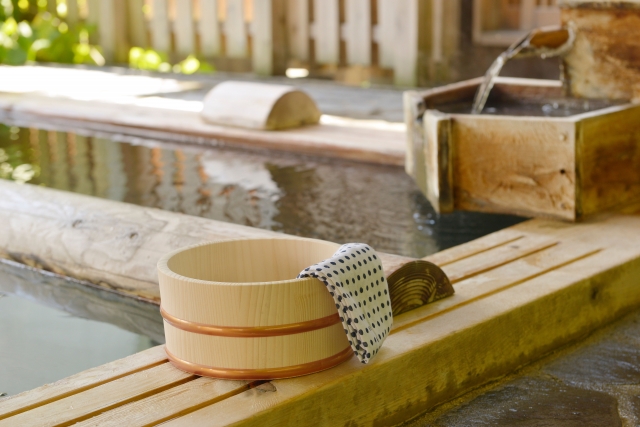
Sento are communal bath houses where people pay for their entrance. These bath houses were traditionally used by households that did not have their own bath and could be found in big cities and small villages. Today, the number of sento is decreasing as the number of houses with bathing facilities is increasing.
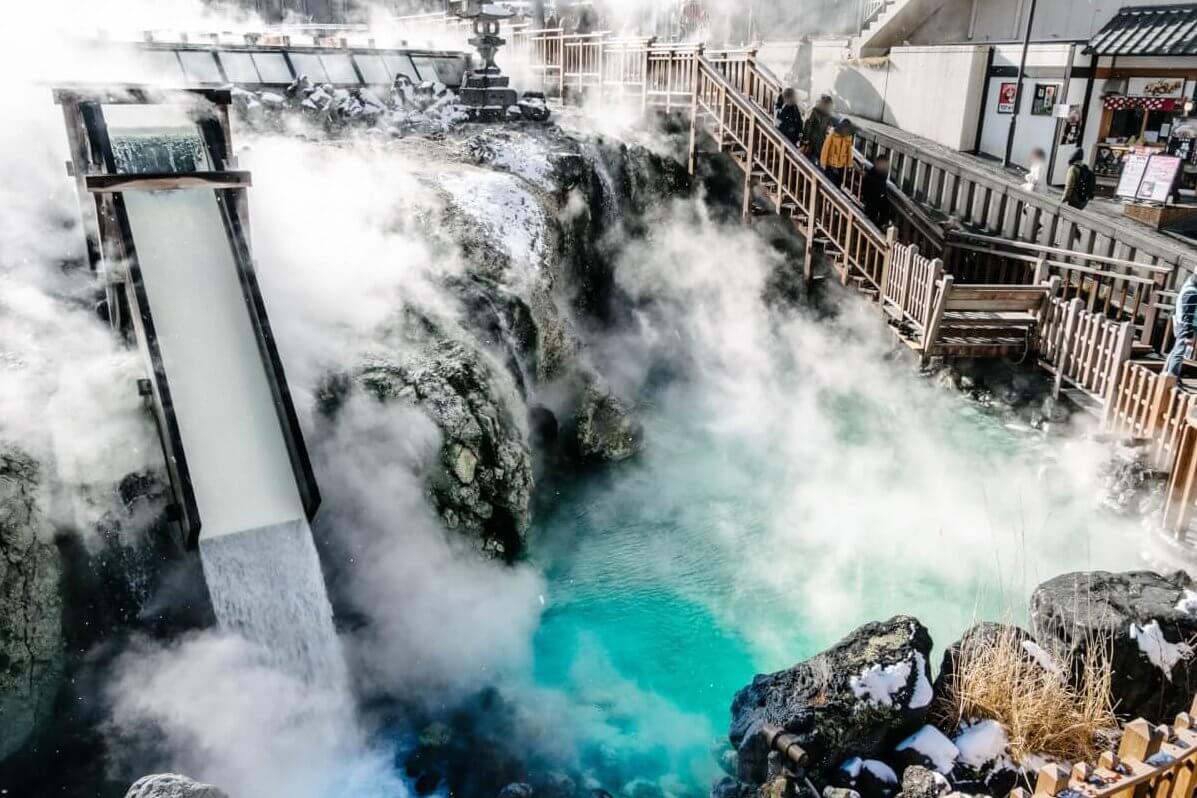
By now you should know Japan is home to some of the world’s most picturesque places, a rich culture and a long history. Indeed, Japan is home to no less than 23 UNESCO World Heritage Sites ; 19 Cultural Heritage Sites and 4 Natural Heritage Sites. Ranging from historically important shrines like Itsukushima Shinto Shrine on Miyajima to unique natural ecological treasures like Mount Fuji or Shiretoko National Park.
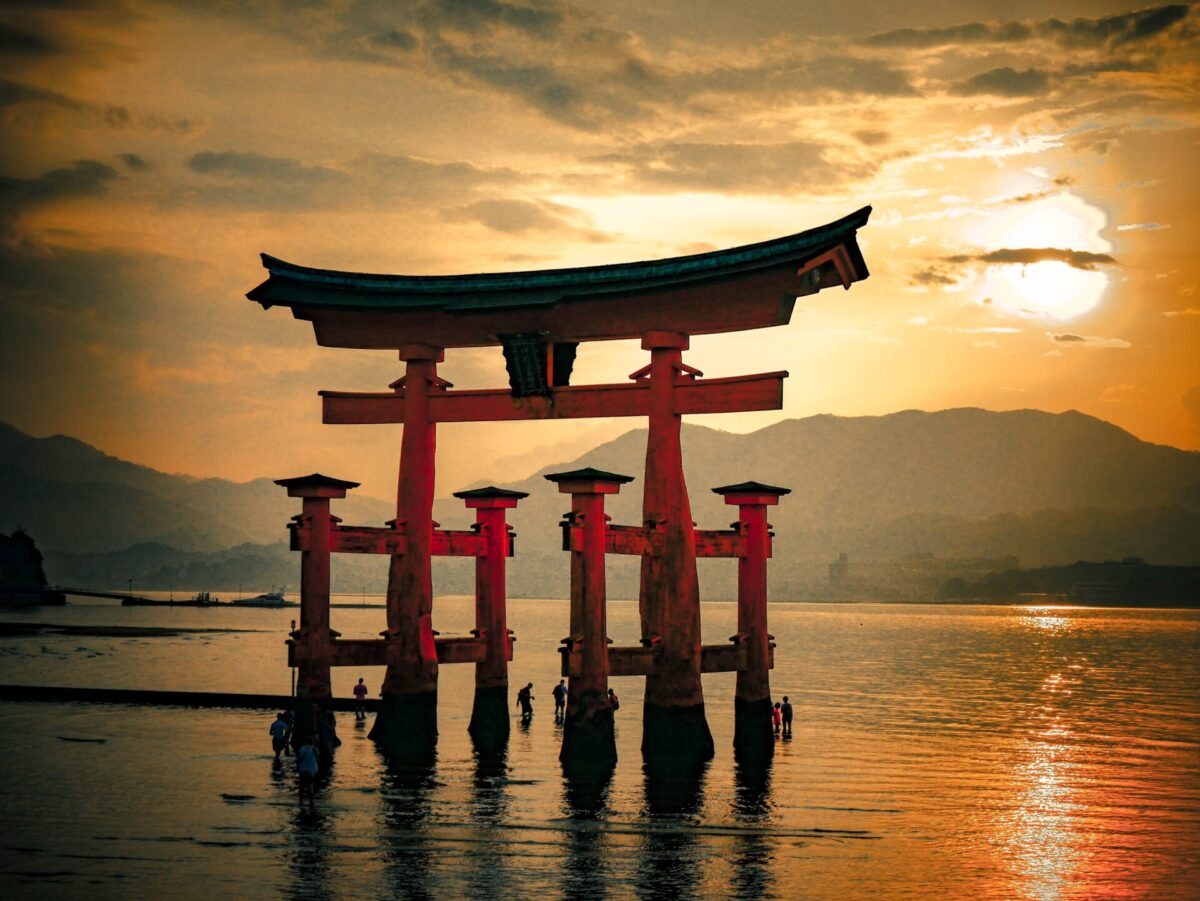
In the history of Japan, a large number of castles were built, many of which were destroyed during the many battles or natural disasters like earthquakes. But there are some beautiful castles in Japan that still exist and can be visited, some of which are also designated UNESCO sites. A total number of 12 original castles , meaning they have a castle tower (or main keep) that was built during the Edo period or earlier, are located around the country.
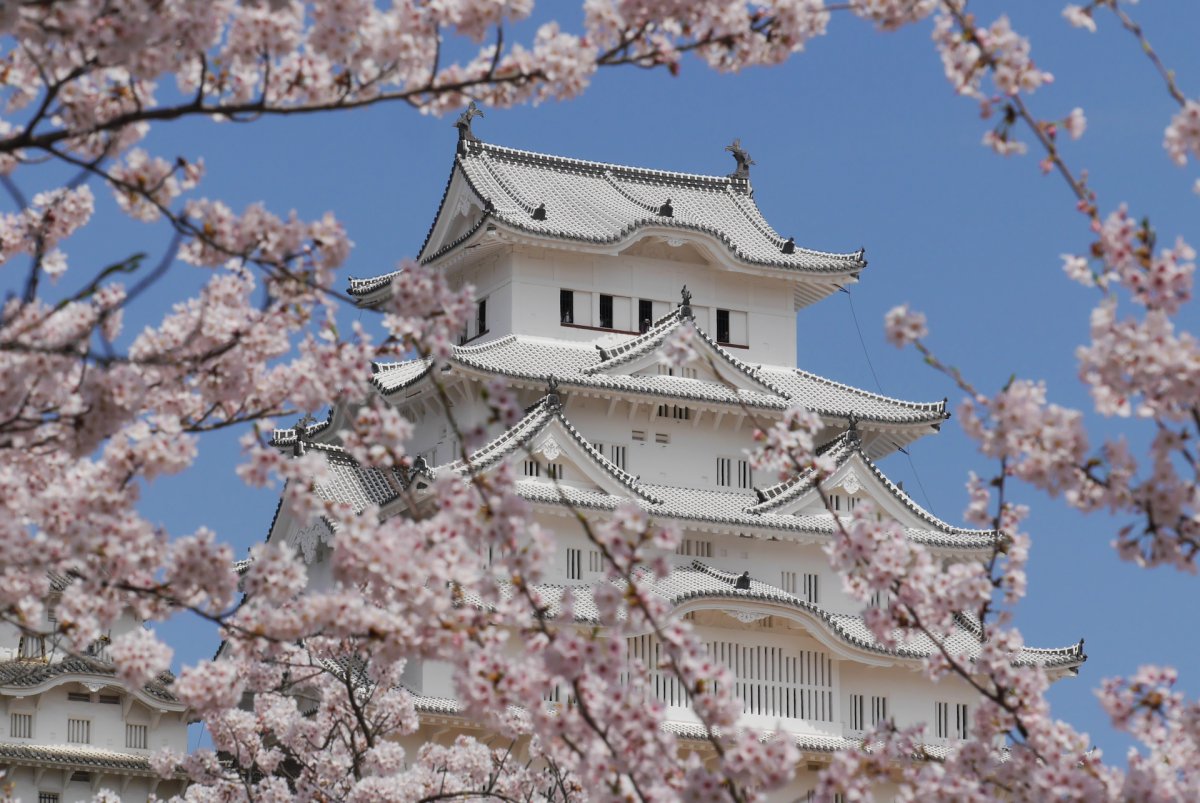
Another type of unique cultural event are the Grand Sumo Tournaments that take place at each odd-numbered month and last for two weeks. Sumo is Japan’s national sport, but not just a sport. In act, sumo is full of shinto rituals and watching a sumo match with a guide will help you to understand this ancient sport even better. Watching a sumo game is definitely an experience you should have at least once in your life!
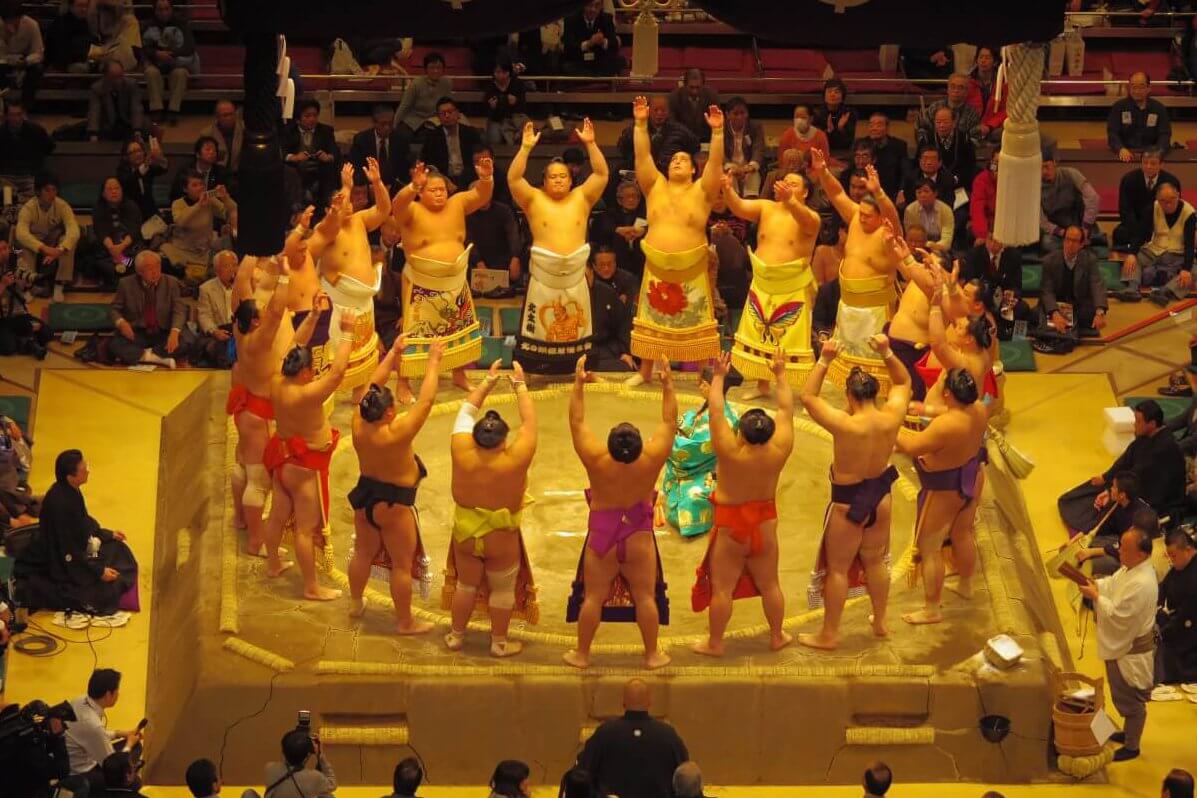
Baseball is Japan’s most popular sport, first introduced in 1872 by an American college professor. Whether you are a baseball fan or not, watching a baseball game will be an exciting experience for anyone ! It is good fun to join the Japanese baseball spectators and cheer on the teams. The games usually start from 2pm or 6pm and last for about 3.5 hrs.
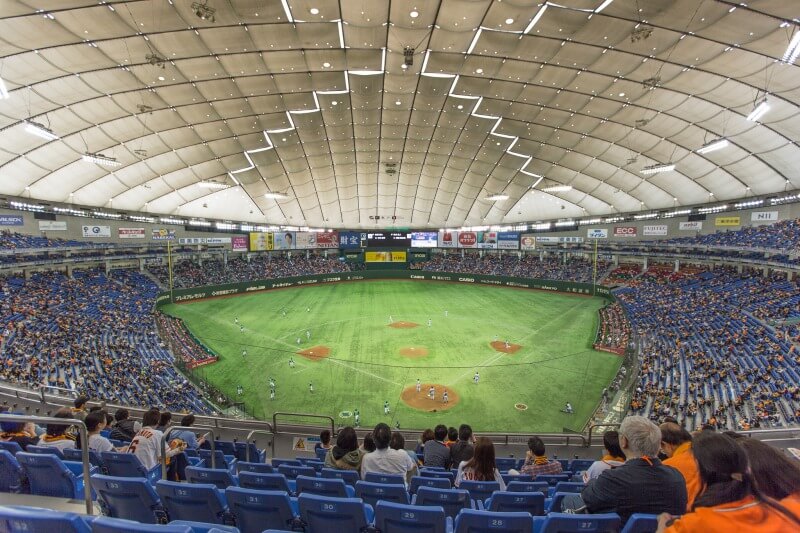
Craft in Japan has a long history and has played an important role in the Japanese culture. From the more famous ones such as knives, pottery, kimono, yukata, and tatami, to lesser-known ones such as kokeshi dolls, fireworks, kendama, origami, daruma dolls , Woodblock Prints , Nambu Ironware, and rounded and folding fans, there is a large list of traditional japanese crafts. Each region has its own local specialties. Some of the craft and art is more valuable in price since they are handmade by professional craftsmen but all make for a great souvenir to take home ! There are many places that offer craft and art experiences like pottery workshops and tea ceremonies.
Purchase your own beautiful Japanese crafts here!
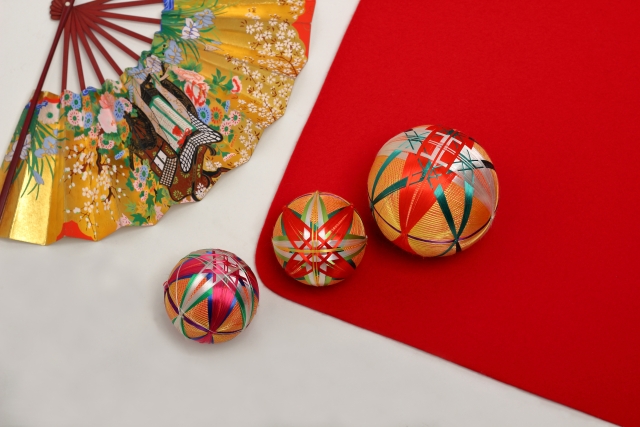
Japan is home to a large number of Western-style hotels, but something that you should not miss out on is staying at the traditional Japanese ryokan. A ryokan is a type of Japanese inn that has been around since the 8th century. It often features tatami-floor rooms, onsen, and other public areas where visitors wear yukata, the traditional more casual kimono. Often an overnight stay comes with a delicious, large, Japanese dinner and breakfast made from seasonal and locally produced products. Staying at a ryokan is a great place to enjoy onsen (privately) and experience some of the traditional elements of Japanese culture.
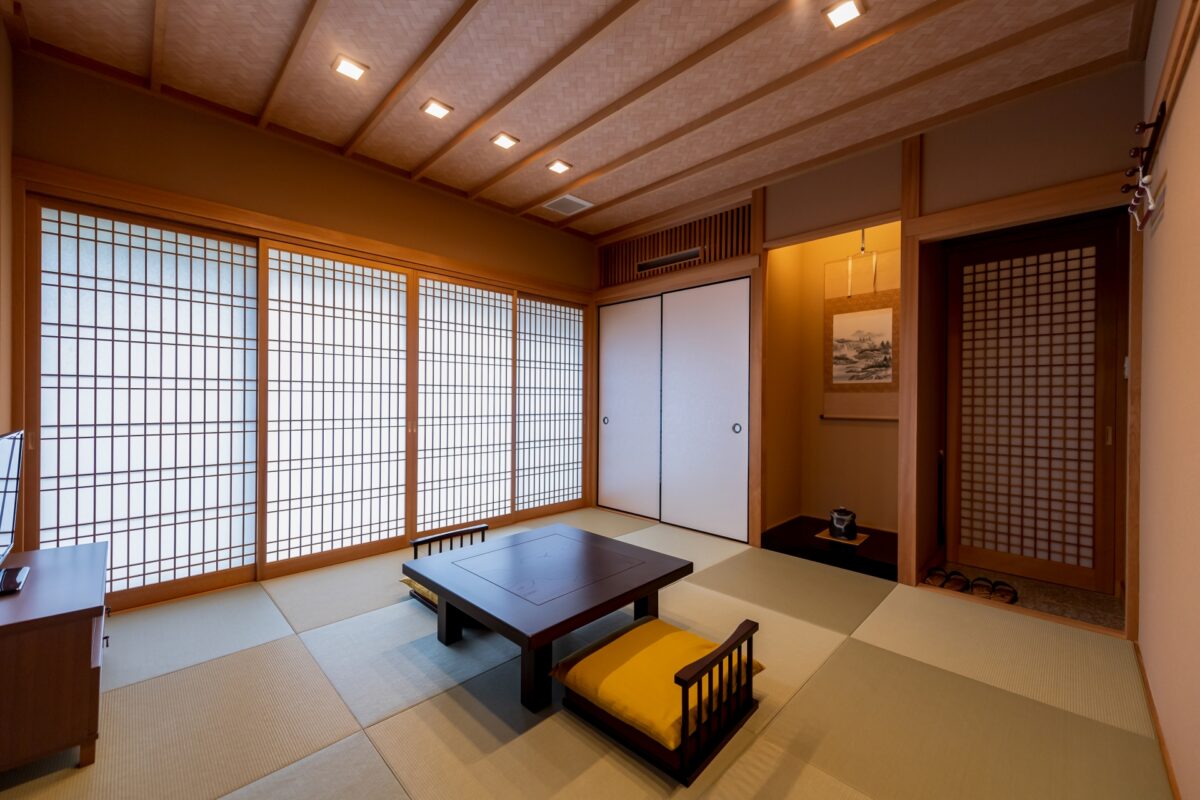
If you are interested in experiencing the simple and traditional lifestyle of Buddhist monks, temple lodging known as shukubo is an excellent option. Shukubo literally means “sleeping with the monks” and besides a great night’s rest and delicious shojin-ryori, the Buddhist vegan cuisine, you can join the monks for morning prayers.
Originating in Osaka, capsule hotels have made their advance in Japan. These hotels, usually found in the larger cities, originally targeted individuals looking for a cheaper alternative for single nights stay. Recently there are also more luxurious alternatives of the pod hotel that are more comfortable, though not as cheap as you might think.

These are just 20 reasons why you should visit Japan, but the list is endless. We haven’t even talked about the beautiful autumn colors, the cute deers, animal cafes, and love hotels amongst other things. Nowhere else on earth will you find a country like Japan, with its unique blend of long standing traditions and modern rituals, century old buildings and peaceful gardens sandwiched between the city’s modern highrises. Incredible fresh food, domestic drinks, sake and local specialties that you can get from any hole in the wall spot. Friendly people that will go out of their way to make you comfortable and require as much as a simple thank you. Reliable and punctual public transportation in a country that is among the safest in the world. The list of reasons for you to come to Japan is simply endless. Conclusion: plan your trip to Japan as soon as possible, you are in for a treat!
Japan Wonder Travel Tours
Japan Wonder Travel is a travel agency that offers guided tours throughout Japan. From private walking tours to delicious Food and Drink tours, we can help you organize the best tours just for you! If you want to explore Japan and learn more about the history and backstories of each area you are visiting, our knowledgeable and friendly English speaking guides will happily take you to the best spots! In addition, we can provide you with any assistance you may need for your upcoming trip to Japan, so please feel free to contact us if yu have any questions or need some help!
▶ Tokyo Tsukiji Fish Market Food and Drink Tour Explore the most lively and popular fish market in Tokyo and try some of the local’s favorite street foods and sake with one of our friendly and knowledgeable English speaking guides!

▶ Tokyo 1–Day Highlights Private Walking Tour (8 Hours) There’s no better way to explore an area than taking a tour with a knowledgeable local guide. You will have the chance to learn about the history and interesting background stories of Tokyo, as well as discover some hidden gems which can be hard to do without a guide.

▶ Mt. Fuji Day Trip Bus Tour from Tokyo Experience the breathtaking views of Mt. Fuji by visiting the highlights of the area on our guided sightseeing bus tour! Departing from Shinjuku in central Tokyo, you can travel comfortably to all of the best spots in the area by bus.

If you want to make travel easier, click here to find the best tour package from various operators!
These are just 20 reasons why you should visit Japan, but the list is endless. We haven’t even talked about the beautiful autumn colors, the cute deers, animal cafes, and love hotels amongst other things. Nowhere else on earth you will find a country like Japan, the unique blend of long standing traditions and modern rituals, century old buildings and peaceful gardens sandwiched between the city’s present-time highrise. Incredible fresh food, domestic drinks, sake and local specialties that you can get from any hole in the wall place. Friendly people that will go out of their way to make you comfortable and require as much as a simple thank you. Reliable and punctual public transportation in a country that is among the safest in the world. The list of reasons for you to come to Japan is simply endless. Conclusion: plan your trip to Japan as soon as possible, you are in for a treat!
Follow us on Instagram , Facebook and Twitter for more travel inspiration. Or tag us to get featured!
Happy traveling!
Stay informed of the best travel tips to Japan, the most exciting things to do and see, and the top experiences to have with the Japan Wonder Travel Newsletter. Once every two weeks we will introduce you to our latest content.

- Popular destinations
- Hidden places in Japan
- Tours and workshop
- Food and drink in Japan
- Itinerary in Japan
- Places to visit in Tokyo
- Food and drink in Tokyo
- Seasonal events
- Tours & workshops
- Tokyo This Week
- Day trip from Tokyo
- Itinerary in Tokyo
- Places to visit in Kyoto
- Food and drink in Kyoto
- Itinerary in Kyoto
- Day trip from Kyoto
- Travel tips
- Accommodation
- Cultural tips
- Transportation
- Tokyo Tours
- Kyoto Tours
- Kimono Rental
- Fukushima Tours
- Mount Fuji Tours
- Tour Package
- Media Kit(English/日本語)

Persuasive Essay Travel To Japan
Persuasive Essay Have you ever wanted to travel to the land of sushi, sumo, and technology? Japan has everything from futuristic technology to temples and shrines dating back from more than thirteen centuries! I think that everyone should have a chance to experience and travel to Japan. Japan is so different from where we are. Most of what we do, we see as “normal” but to a Japanese person it is “different” or “unusual.” “You can read about history in a book, or you can actually experience it.” This quote is very important. What if Lewis and Clark never explored the west? Or Christopher Columbus never discovered North America? What would happen? My first reason for going to Japan is learning. Traveling improves your brain health. It also expands your mind, you adapt to new situations, and are more globally and culturally aware. If you travel to Japan you also get to learn their cultures, religion, customs, and ways of life. Japan is very religious and formal. Going to Japan can teach you manners and politeness. They respect their elders very much. Wisdom in their community or family is very highly valued. Japanese people often bow when saying "konichiwa" (hello). This shows respect and is very common among strangers. Traveling challenges you to do different things. For example, instead of walking down the same road to the bus stop, you could take a fast and exciting Shinkansen (bullet train ) ride. Japanese people are very disciplined, have very good work ethic, and are
Persuasive Essay On Vacation Or Travel
Traveling always force ladies to dwell on their monthly menstrual cycle. It at times becomes very challenging and exasperating if you know that your periods are coming close to your traveling dates and you cannot alter or reschedule your travel dates. Because of lengthy hours of journey, frenzied traveling schedule and restricted time at the disposal could cause tiredness, frustration, which might cause menstrual period to come early or even befall irregular bleeding.
Essay about A History of Japan
Japans history dates back almost 53,000 years and is filled with interesting and fascinating events. Most of Japans actions have left the major world powers in the world stunned. The base of this amazing country is astonishing just by itself. The base is a bunch of active and large under water volcanoes. Japans uniqueness from the rest of the world ranges from its culture to its very interesting history to the change in government every few hundred years and their trading dilemma with petroleum and their assortment of fish that they export. Japan as a country is so very appealing and kind compared to the rest of the world its no wonder that it’s geographically separate from the rest of the world.
Persuasive Essay For Study Abroad
When in Rome! I chose to pick a study abroad program because I want to explore the world. I think it is a perfect idea to get a chance to travel to another country and earn college credits. I chose Rome because that is where I think I will be more comfortable to visit while in college. It is full of culture, fashion, great cuisines, art, and many more! It has always been on my bucket list to go to Italy. It is the perfect opportunity to visit the country especially while I am in college. I remember watching Lizzie McGuire as a child and she went to Rome and impersonated an Italian pop star, Isabella. She met this handsome man who took her to tour the city. Everyone eventually realized he was using her to ruin Isabella, but it was still a happy ending for Lizzie McGuire. I wanted that happy ending it looked like so much fun running around Rome. The expenses are outstanding for the trip, but at least I have an agenda all laid out by the program.
Social And Economic Effects Of The Middle Ages
Both Europe and Japan were primitive countries so they had various similitudes of resemblance, one of them being trading. The merchants stood lower in rank in Japan yet they could buy what they need and offer what they didn't to have a content with living. Religion wasn't as wide-ranging to Japan as it was in Europe yet the ruler implemented Buddhism. They soon found Zen and that was used to make a huge impact on the warriors by showing the way that it endorsed extraordinary behavior. Zen extremely transformed the human experience and culture of Japan.
Western Influence On John Hersey's Characters
Japan is a country of many cultures. Japan’s most renowned is the art of the samurai and currently, urbanization. Due to the American occupation in the pacific, Japanese moved from a cultural masterpiece, to an eastern constitutional monarchy. Which is generally effected by a western influence.
Ancient Japan Research Paper
The small island of japan is greatly known for its culture that has been practiced for over a thousand years. Japan has many different types of food and entertainment and religion. The most popular religion is Buddhism and Shintoism.
The United States And Japan
In today world, the United States and Japan have a strong political, economic and military relationship. The United States considers Japan to be one of its closest allies and partners. Both countries are strong economic and political superpowers that help run the world. Both countries also support the preservation of political and economic freedoms as well as the support of human rights. However, despite modernization and American influence, the Japanese way of life is still vastly different than that of America. Although both countries operate and function in similar ways the overall foundation of both countries is different.
Japanese Culture Vs American Culture
I am going to Japan soon. I have been thinking about the things that I am going to see and how life could be different. The culture, food and the other activities that I would do. Everything is different there. Even school.
Tale Of Genji By Lady Murasaki Shikibu
I have learned so much in Japan, from their religion, to art, to literature. Noh Theater is one of the first forms of theater in the world. The movements are precise and the actors wear rigid masks. Zen Buddhism is very popular here in Japan. Zen Buddhism is about enlightenment through personal meditation. A novel written by Lady Murasaki Shikibu, titled Tale of Genji, talks about high courtiers in Japan.
Compare And Contrast Essay On Japan And Ww2
Prior to World War Two Japan had been going through an economic crisis and was having issues with its government. The Japanese society was very militaristic and prideful making it a key power in world affairs. Their people have a strong and deep seated loyalty to their country.
Persuasive Essay Travel To Mexico
Traveling, in general, makes people healthier. Occasional travelers report lower stress levels and lower risks of heart attacks. These benefits even stay awhile after the trip has ended. According to Larry Alton, “traveling has been scientifically proven to lower stress levels.” (NBC News) This is because traveling is like taking a break from one’s hectic life. One gets to think about themselves and relax. People feel less anxious and tend to forget about problems that usually bother them. In a way, they disconnect from their busy lives.
Prejudice In Mark Twain 'The Innocents Abroad'
Travelling is important as it can remove the unintended prejudice that individuals carry out rashly. Sometimes, people unconsciously treat others differently solely based on their own beliefs. Since their judgement is based only on opinion, therefore it may be inaccurate to use when addressing the persons around them. However, exploring the world may lessen your tendency to be prejudice as you will gain detailed insights to the way others think, the way others see, and the way others live. Thus, this will allow you to not make foolhardy assumptions when being in contact with a society or community as you will be more knowledgeable to understand why they are the way they are. Removing prejudice from our lifestyle is very important to us as open-thinkers as we often make many mistakes in the treatment of other human beings. Prejudice is an undesirable trait to possess because
Why Do People Travel Essay
First, I just want you to ask yourself a little and simple question. Why do you travel? Have you answered it? I sincerely want you to answer it before I do so, that will help you understand with more ease. The first one I thought of was to learn. Many people, in fact, love to travel to get to know a country’s culture, food, language and landmarks. This will help people be more culturally diverse, open-minded and usually more balanced people. The second reason I thought of was to have an adventure. Naturally, some people are more adventurous than others so they prefer doing something they have never done before. For instance, people who live near the ocean have the tendency to visit more mountainous places so they can have new experiences and do more radical activities. Another obvious reason is to spend some quality time with your family. Nowadays people work during most of their days and go back home already tired, meaning they have less time for their families and people they love than before. Thus, they often go for a journey together during holidays and sometimes even weekends. The final reason I have got is quite different
Japan and the United States: Different but Alike!
The culture of a place is an integral part of its society whether that place is a remote Indian village in Brazil or a highly industrialized city in Western Europe. The culture of Japan fascinates people in the United States because, at first glance, it seems so different. Everything that characterizes the United States--newness, racial heterogeneity, vast territory, informality, and an ethic of individualism-- is absent in Japan. There, one finds an ancient and homogeneous society, an ethic that emphasizes the importance of groups, and a tradition of formal behavior governing every aspect of daily living, from drinking tea to saying hello. On the surface at least, U.S. and Japanese
Essay on Traditional Shinto & Modern Japanese Business
- 5 Works Cited
The nation of Japan, even more so than other countries, has a long, long history behind it. It's a country dating back as far as the B.C. Era, and that has experienced various powerful events that has shaped the country since its birth. As with other nations, an important part of their past lies in their religion. Before they were introduced to Buddhism and other outside religions, which had a large impact on their society, the Japanese followed something known as Shinto. As the one religion that can truly be called “Japanese,” it follows that its influences would still remain in the eyes of the people and only aided by a traditionally xenophobic view of the world.
Related Topics
- Japanese people
- Ainu people
- Train station

What’s it Like to Travel in Japan?
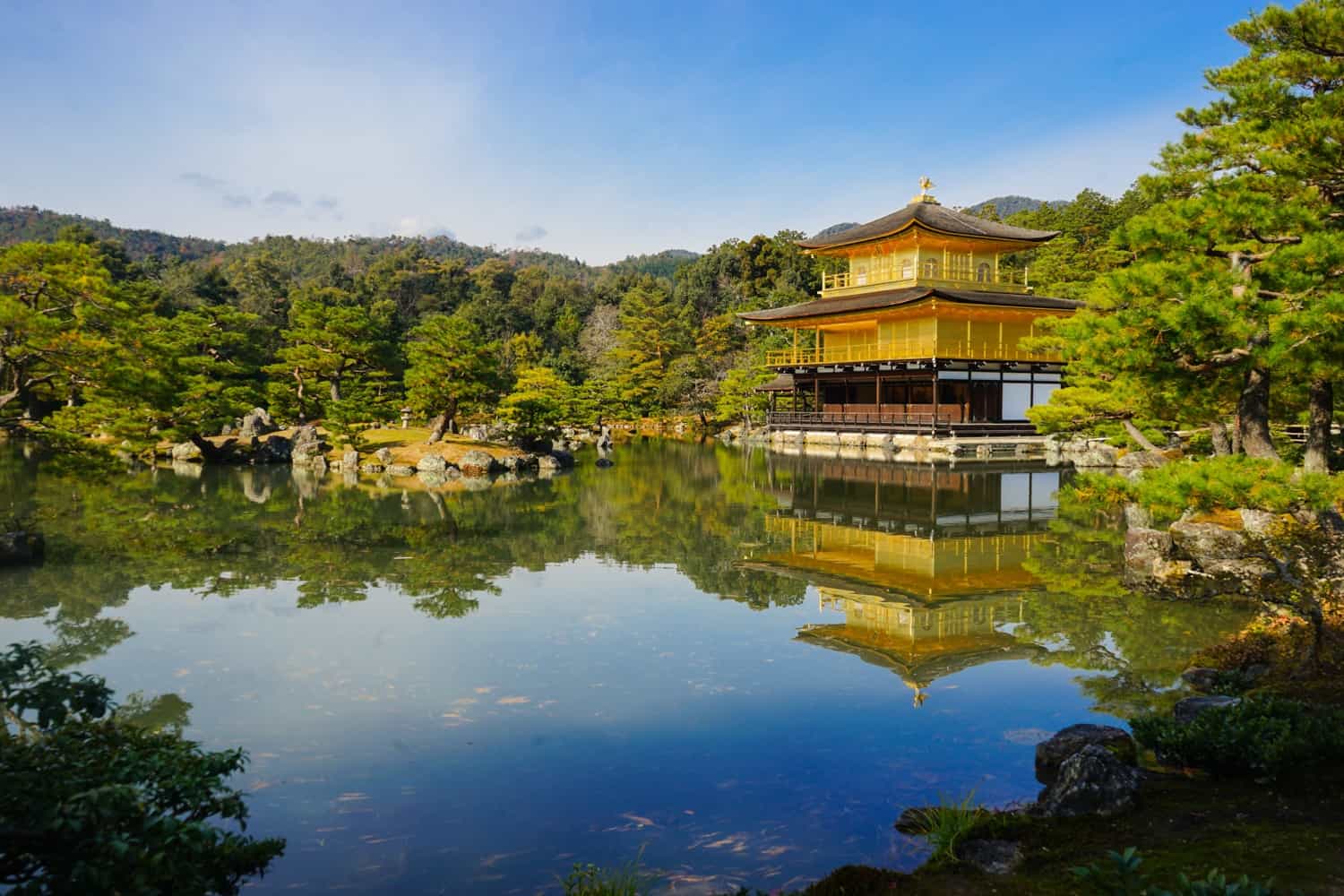
I thought I had finished writing about Japan, but it turns out I was wrong.
My posts about Japan have quickly become my most-read of all time and I’m now starting to receive a hell of a lot of questions about how to make the most of a trip to this wonderful country. I’m diving back into my time in the Land of the Rising Sun , then, and planning on sharing a ton of resources over the next couple of weeks.
Up first: what it’s like to travel in Japan! These are my favourite type of blog posts to write — you can browse my growing collection of them on my What’s It Like to Travel In? page — as they allow me to blend a detailed travel guide with random observations, fun stories, and first impressions.
Let’s get stuck in!
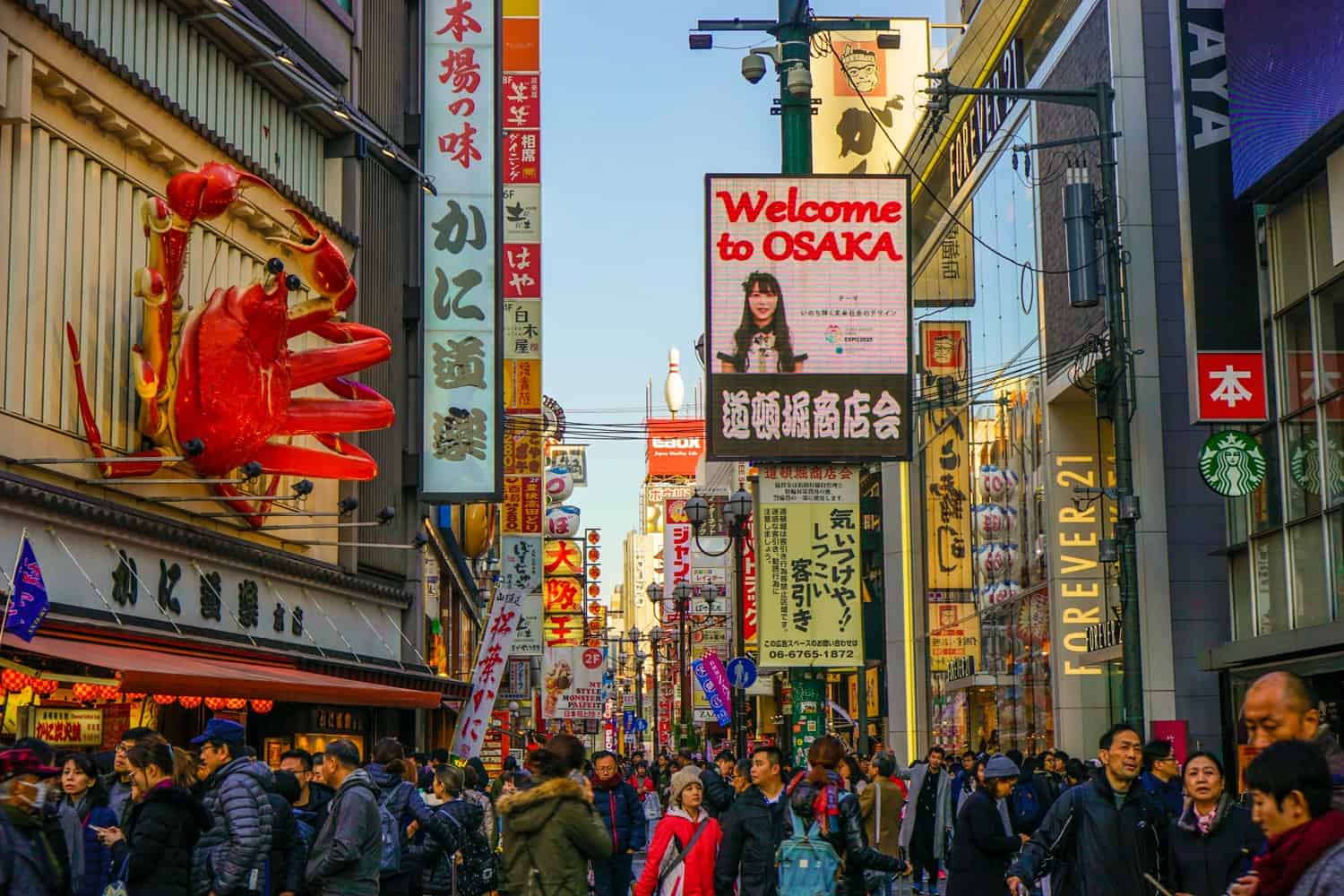
It’s Going to Be Overwhelming for the First Few Days
Does that photo make you feel like having a panic attack and hiding away from the world? Me too.
Most people kick off their Japan adventure in Tokyo or Osaka, both of which are large cities full of bright lights, flashing signs, loud noises, unfamiliar smells, crowds of people, and plenty of chaos. When you throw a hefty case of jetlag into the mix, visitors often end up feeling as though they’re walking around in a bubble, unable to process what on earth is going on.
Arriving in Japan is culture shock to the extreme. I’ve been to 80-odd countries and I’ve never experienced it to the extent that I did here.
But the good news is that the sensory overload doesn’t last for long.
While you’ll never fully understand what’s happening as you travel around the country, the differences become less overwhelming and you quickly learn to embrace Japan’s unique mix of order and chaos.
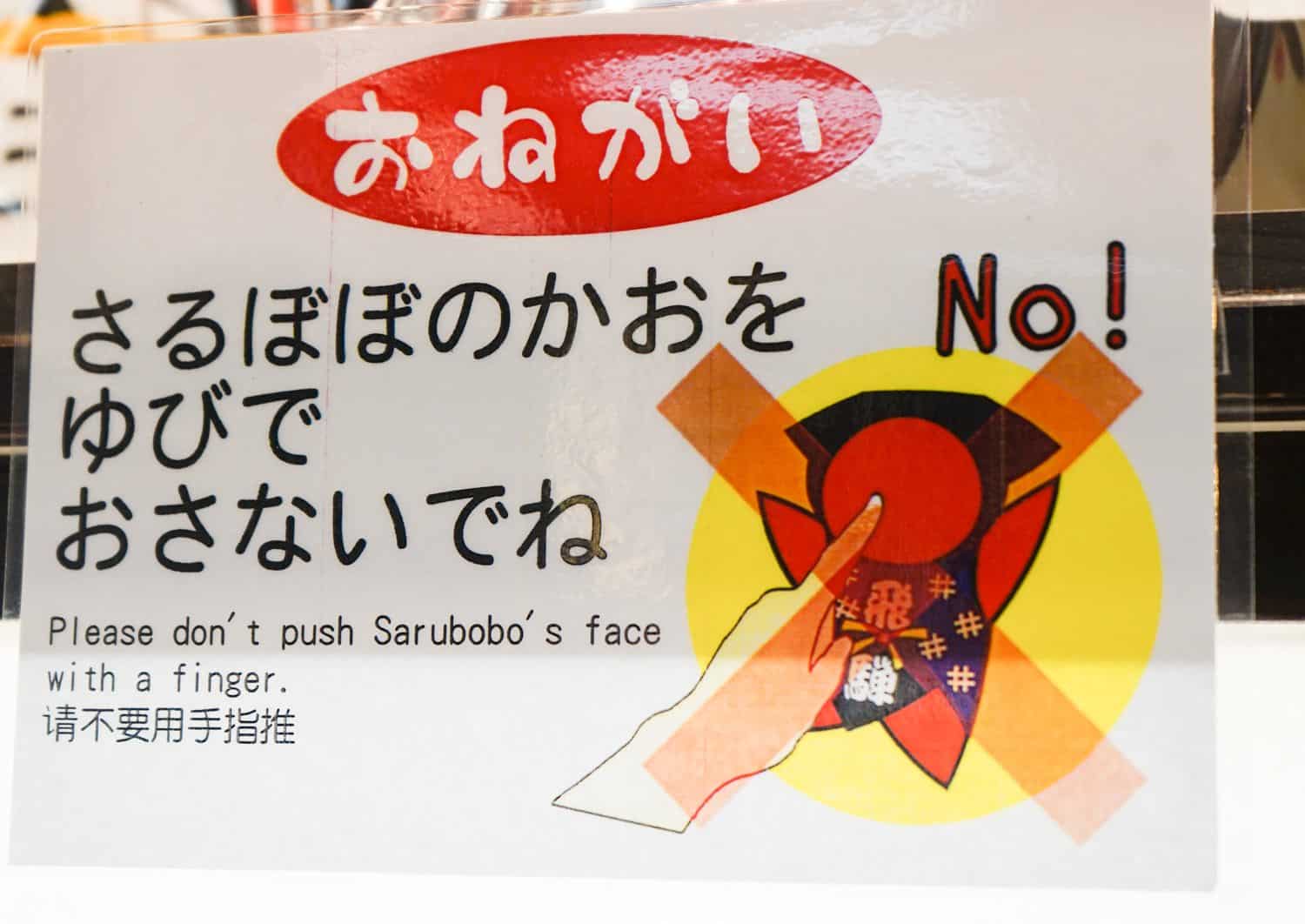
But it Really Wasn’t That Weird?
Now, I don’t know about you, but when I first started planning my trip to Japan, I prepared myself to see things . Strange things. Unexplainable things. Extraordinary things.
And… I didn’t.
I arrived in Tokyo, fully expecting to hit the ground and start taking photos of a thousand peculiar sights. I planned on barely sleeping during my trip, because I thought there’d be so much unfamiliarity to absorb.
Nope.
I landed in Tokyo and it felt like a big city. A regular city. A familiar city.
Which isn’t to say it wasn’t special — I adored Tokyo — but just that it felt like a normal city filled with normal people. I didn’t run into people cosplaying on the streets, I wasn’t served by robots in restaurants, I wasn’t surrounded by outlandish fashion choices, I didn’t spot vending machines filled with used underwear on every street.
My preconceived notions of Japan were based on bad stereotypes that have been perpetuated by Western society and I felt like a dumbass for buying into them.
Japan was no more “weird” than any other country I’ve been to. It has its quirks, sure, but what country doesn’t?
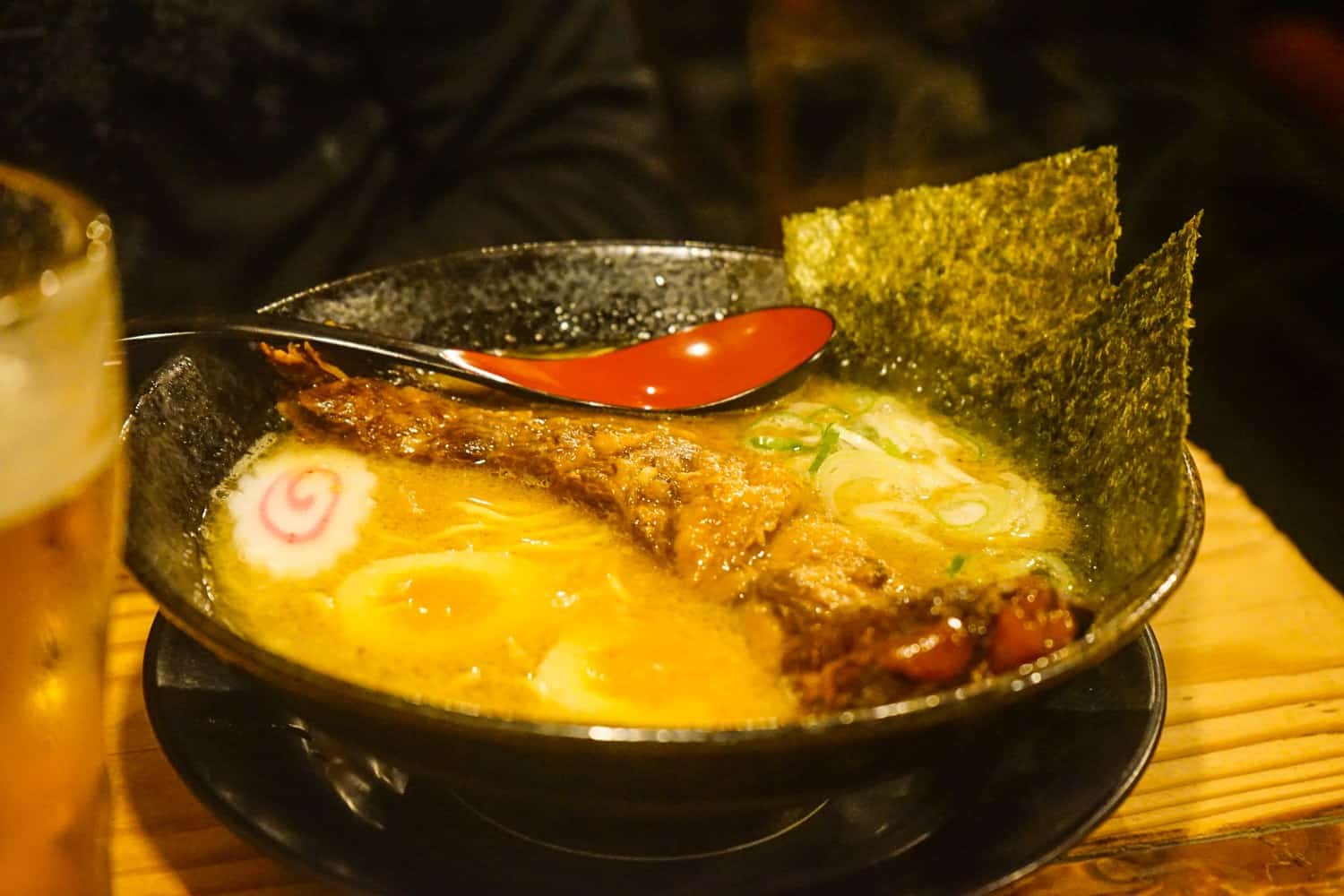
The Food is Going to Blow Your Mind
I’m still talking about the incredible meals I devoured in Japan!
Whether it was the pork rib ramen in Osaka, the crispy takoyaki in Tokyo, or the fresh as hell sushi in Kyoto, I couldn’t get enough of the food in Japan. There was plenty of interesting foods to try for the first time, like pufferfish jerky and pickled quail eggs, and experiencing my first kaiseki (a traditional multi-course Japanese meal) was one of the highlights of my entire trip.
After visiting Japan, I can easily place Japanese food in my top 5 cuisines in the world, along with Mexican, Vietnamese, Greek, and Spanish. I even wrote a blog post about my favourite meals in Japan because I was so enamoured with the food.
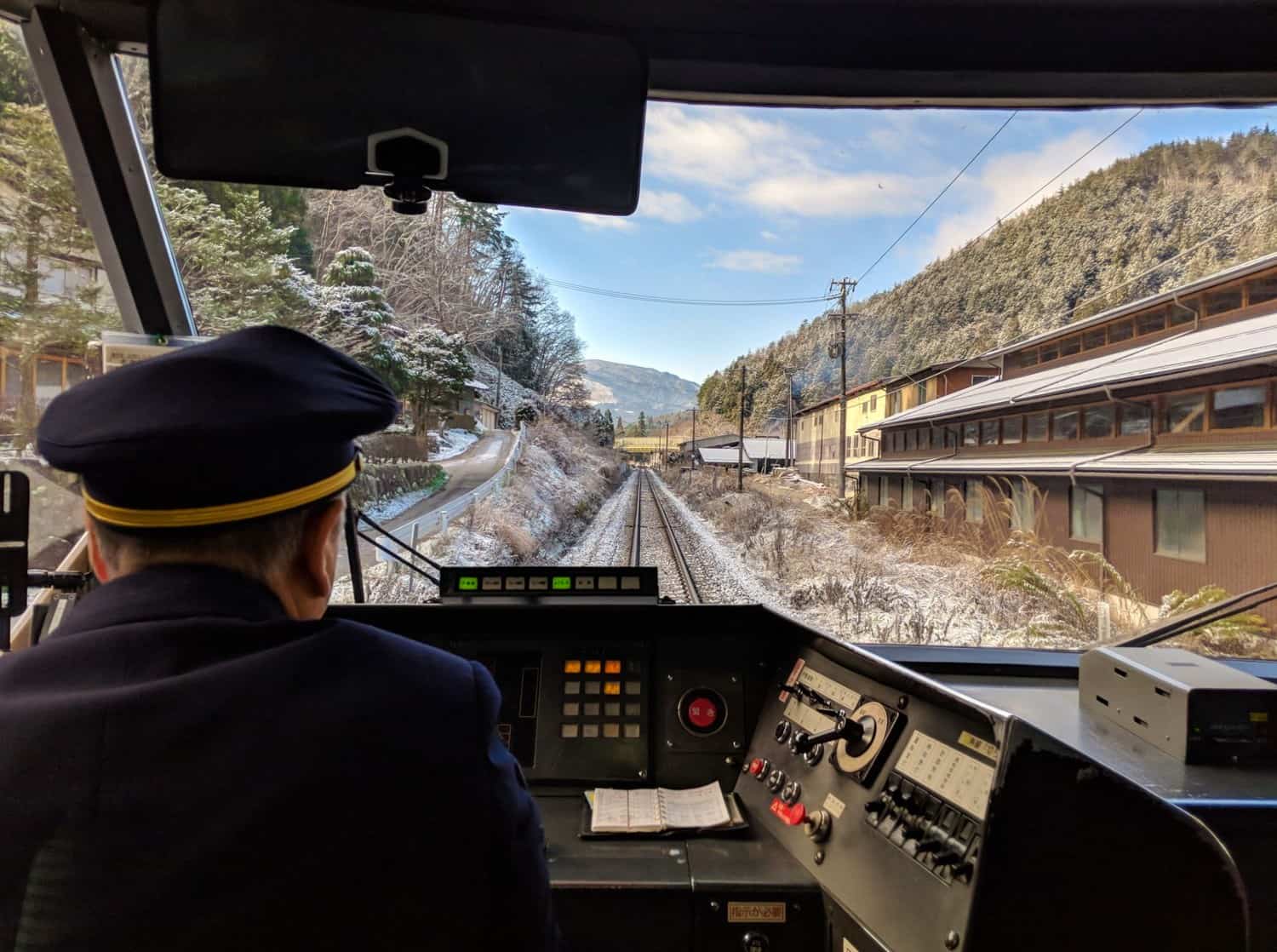
Train is the Best Way to See the Country
If you’re planning a trip to Japan, the first thing you should be doing is buying a Japan Rail Pass .
While the rail passes seem like a fairly large expense to pay up-front (I paid $420 for my two-week pass), they’ll more than likely save you money on your trip.
I’ll confess I was skeptical the passes would be as much of a necessity as people said, so picked one up then made a note of the cost of every train we took in the country. It turned out that my 14-day JR pass saved me a whopping ¥19,000/$175! That’s a huge amount of money, so I’m firmly of the belief that this is an investment you’ll want to make.
Travelling by train across Japan is such an iconic experience, too. The trains are incredibly fast and punctual, the rail network is extensive, and it’s altogether a comfortable and convenient way to get around. It’s a huge expense if you’re going to be travelling in Japan on a budget, but I think it’s a cultural experience that’s worth splurging for.
Confession: I Was Baffled by Tokyo’s Metro
On our first day in Japan, my partner tweeted: “If you think you’re a competent traveller and would like to be very humbled, can I suggest trying to figure out the Tokyo metro?”
I’ve muddled my way around a hell of a lot of subway systems around the world, but Tokyo’s was the first to leave me well and truly flummoxed.
To start with, the stations are enormous. I was staying beside Shibuya station and it would regularly take me a solid 30-60 minutes to figure out where on earth my platform was even located. It was just as complicated trying to find the right exit!
The stations are hyper-busy, too. The top 20 busiest train stations in the world are all found in Japan. Shinjuku station — the busiest — sees 3.6 million people transiting through it every single day . I can’t even comprehend that many people passing through a single building, let alone every day!
Oh, and here’s a map of the Tokyo metro and train lines:
For some reason, buying the correct ticket seemed to be impossible for us to do correctly! The Tokyo subway system is operated by three separate companies, and you’ll need different tickets for the lines that each company owns.
If our route required us to change stations, we simply could not buy the right ticket. I don’t think we succeeded even once! Even when we were convinced we finally understood where we were going, our ticket would invariably fail in the machines when we went to change lines and we’d need to find help from a member of staff. It’s probably no great surprise that we ended up walking around Tokyo for most of our time there and only used the subway three times.
What we should have done, however, was buy a SUICA card, rather than bothering with single tickets. It’s a rechargeable travel card that’s valid on all of the metro and train lines across Japan, and it would have saved us a hell of a lot of time, confusion, and hassle.
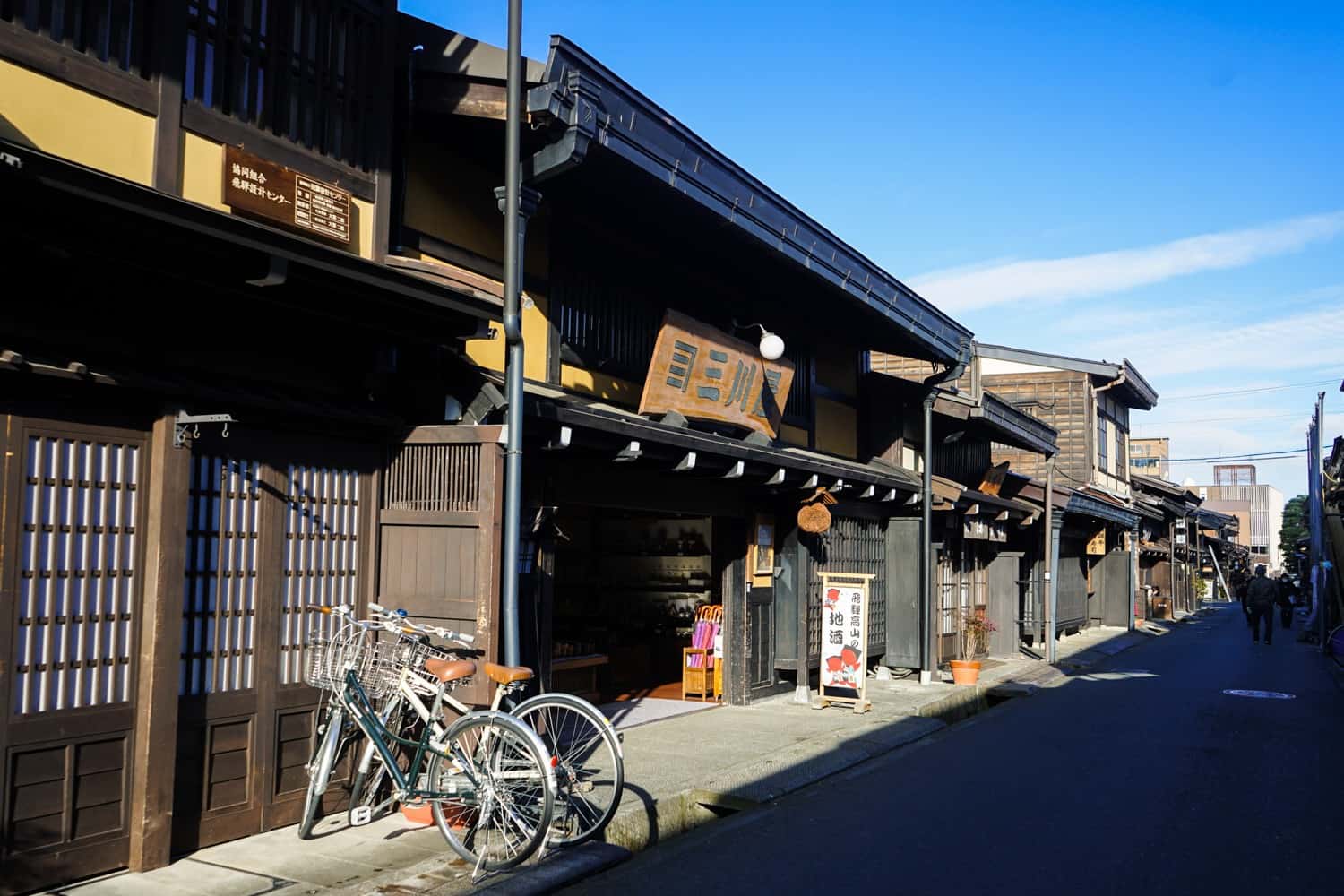
It’s Worth Getting Out of the Main Cities While You’re There
A lot of people devise an itinerary that’ll take them to the three big hitters in Japan tourism: Tokyo, Kyoto, and Osaka. And while those cities are undoubtedly most popular for a reason, I found myself really enjoying the lesser-known spots just as much.
Wandering around the town of Yamanouchi in freshly-fallen snow was a wonderful experience, Takayama was the perfect place to learn about traditional Japanese architecture, and beautiful Miyajima Island was the most relaxing stop on my trip.
Even if you don’t have a huge amount of time in Japan, I’d still recommend jumping on a day trip or two to explore outside of the huge cities. Hit up Nara as a day trip from Kyoto, head to Hakone to see Mount Fuji as a day trip from Tokyo, or set off for Myajima Island for some respite on a day trip from Hiroshima.
During my next visit to Japan, I’d like to get further away from the beaten track and explore a bunch of places I haven’t even heard of right now. Which, yes, is essentially me admitting to being too lazy to research lesser-known places in Japan to include here.

There’s a Lot of Animal Attractions… Most of Which Exhibit Dubious Ethics
Japan is the land of animals being treated badly, unfortunately.
As you travel across the country, you’ll be struck by how many animal cafes you can visit. There’s hedgehog cafes, otter cafes, owl cafes, alpaca cafes, ferret cafes, penguin bars, and the vast majority of them are not doing great things for the animals’ health.
In Japan, owl cafes offer the chance to sit beside a tethered owl that’s been forcibly domesticated and will never be allowed the opportunity to fly. In 2016, a cat cafe in Tokyo was shut down after it was discovered owners were keeping 60 cats within a 30 square metre rom. The penguin bar in Tokyo keeps four penguins captive in a tiny enclosure at the back of a smoky bar.
I went to a hedgehog cafe in Tokyo and came away feeling conflicted by the ethics of me having done so, and decided I wouldn’t repeat the experience.
Even the snow monkeys ended up being a disappointment for me. The animals were herded towards tourists by staff, fed in order to keep them from leaving the hot springs, encouraged to fight with each other, and generally seemed to be distressed that they couldn’t get away.
And this was just what I personally experienced. Japan has also experienced international condemnation for a whole host of animal welfare violations, from whaling to the Taiji dolphin hunt.
If in doubt, steer clear of any animal-based attractions in Japan.
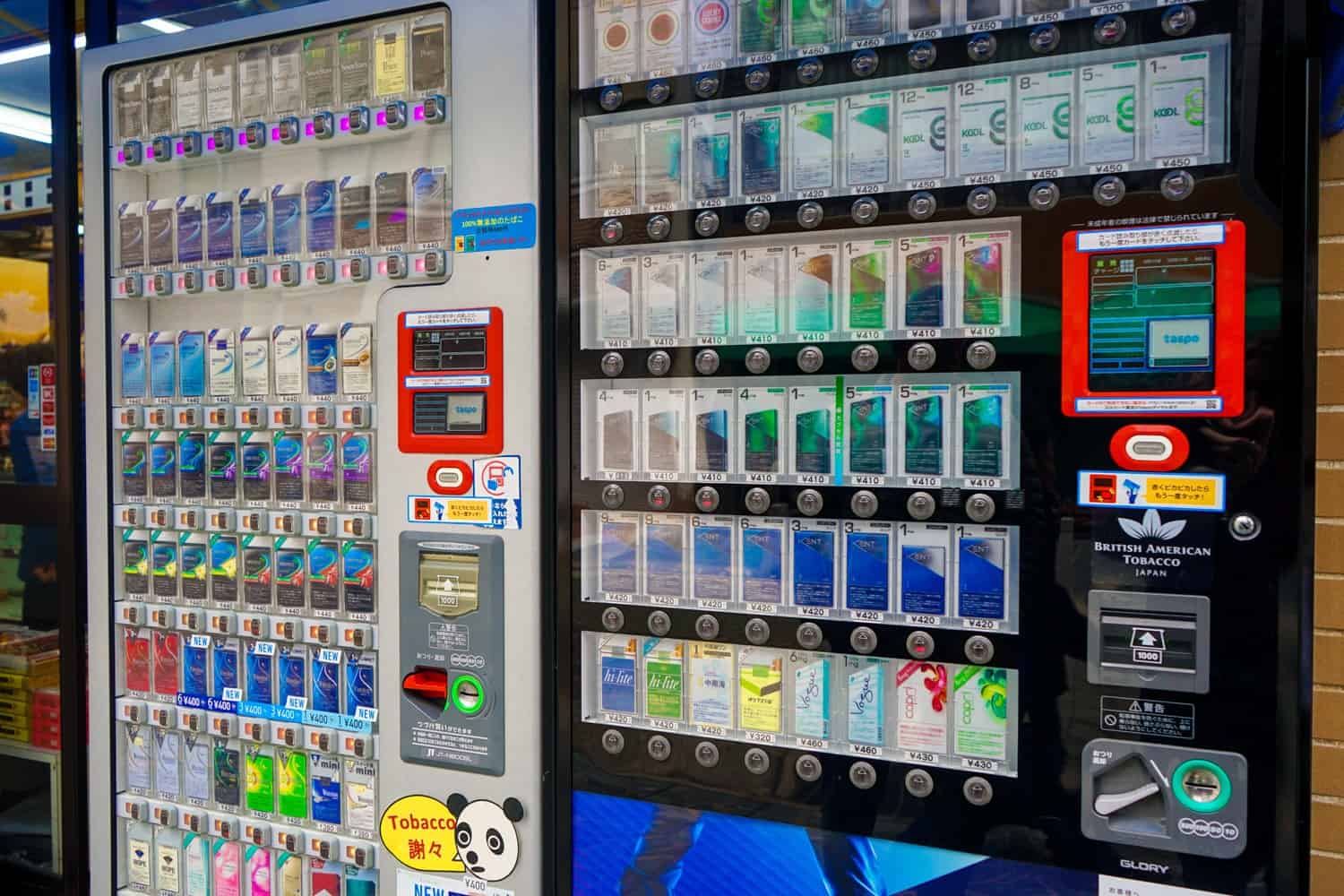
Japan’s Vending Machines are the Bomb
I loved the vending machines in Japan! They’re everywhere, sometimes dozens of them in a row, and they’re standing on practically every street. There’s over 5 million of them — one for every 23 people in the country — and they’ll be one of the first things you notice when you first arrive.
The vast majority of them sell drinks — hundreds of varieties, from the delicious-but-gross-sounding electrolyte-filled Pocari Sweat to hot coffee in a can — and they’re a fantastic way to stay refreshed while you’re exploring
And, of course, there’s a whole bunch of unusual stuff you can buy from them, too, like actual puppies, live lobsters and beetles, a Coke that freezes into a slushy when you open it, umbrellas, surgical masks, mystery boxes, pizzas, ties, wigs for dogs, origami, and yes, used women’s underwear. I even ordered several meals from a vending machine in Japan!
And You’ll Probably Get Weirdly Excited Over the Toilets
Everybody falls in love with Japanese toilets! I feel like such a predictable beast for even including this in my post, but let’s face it: Japan’s toilets are in a whole other league.
So what’s so life-changing about them? They have so many features! As someone who visited the country during winter, I loved that there was a seat warmer. On top of that, there’s a built-in bidet that self-cleans between each use and a blow-dryer for afterwards. You can adjust where the water sprays, the temperature of it, and the amount of pressure it applies. You can even play music from the toilet if you don’t want anybody to hear what you’re doing in there, and some feature a deodoriser, too.
The buttons on the toilet are fairly self-explanatory, but every one I used had a slightly different design and set of features, which kept things fun. Mystery toilet!
As I begin contemplating buying a house within the next couple of years, let me tell you that I’m already thinking about how I’m going to get myself a Japanese toilet for it!
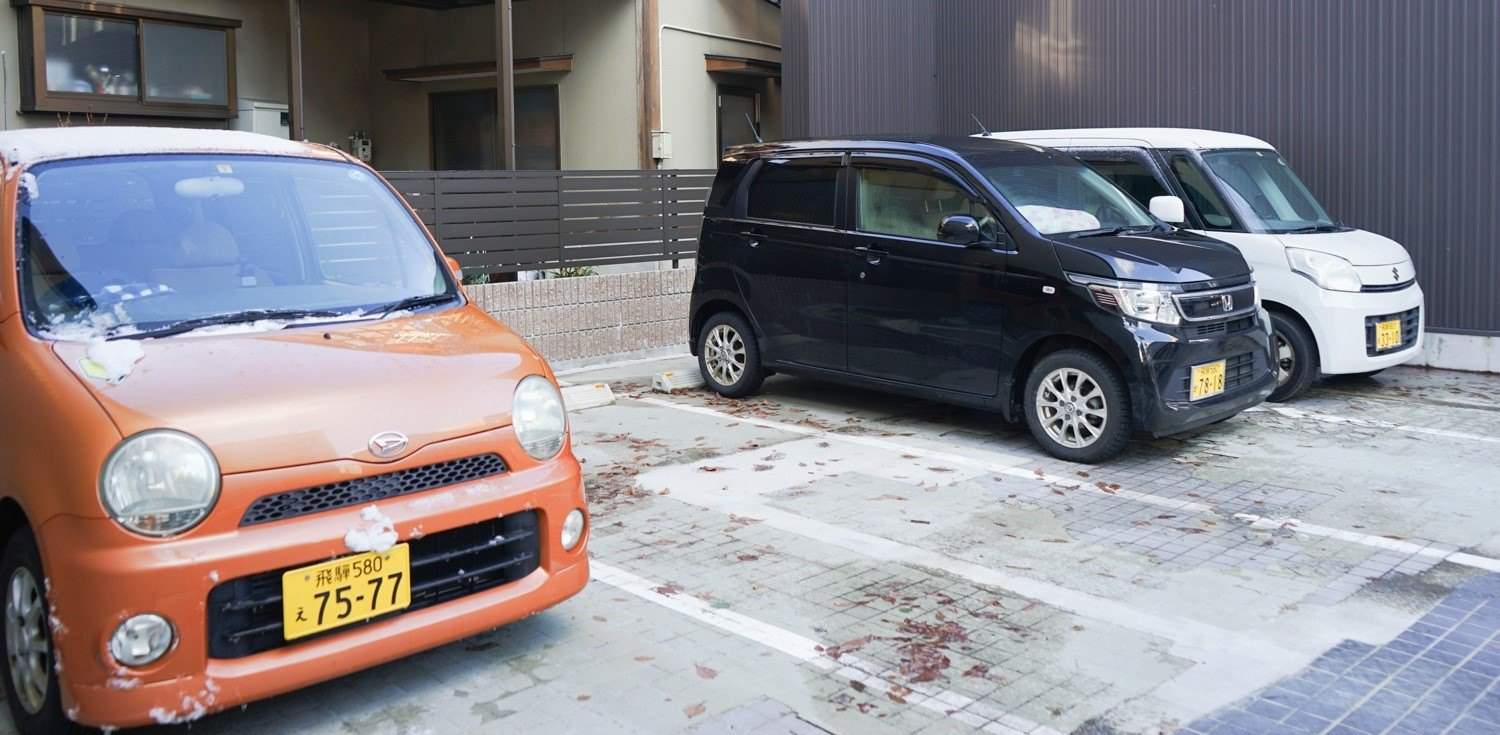
Why Are There So Many Ugly Cars?
Why are the cars in Japan so squished and blocky?!
One of the first things I noticed after arriving in the country was how many odd-looking cars there were. There were so many that looked like this photo: like they’d been plopped into a car crusher for a second, then removed and placed on the streets.
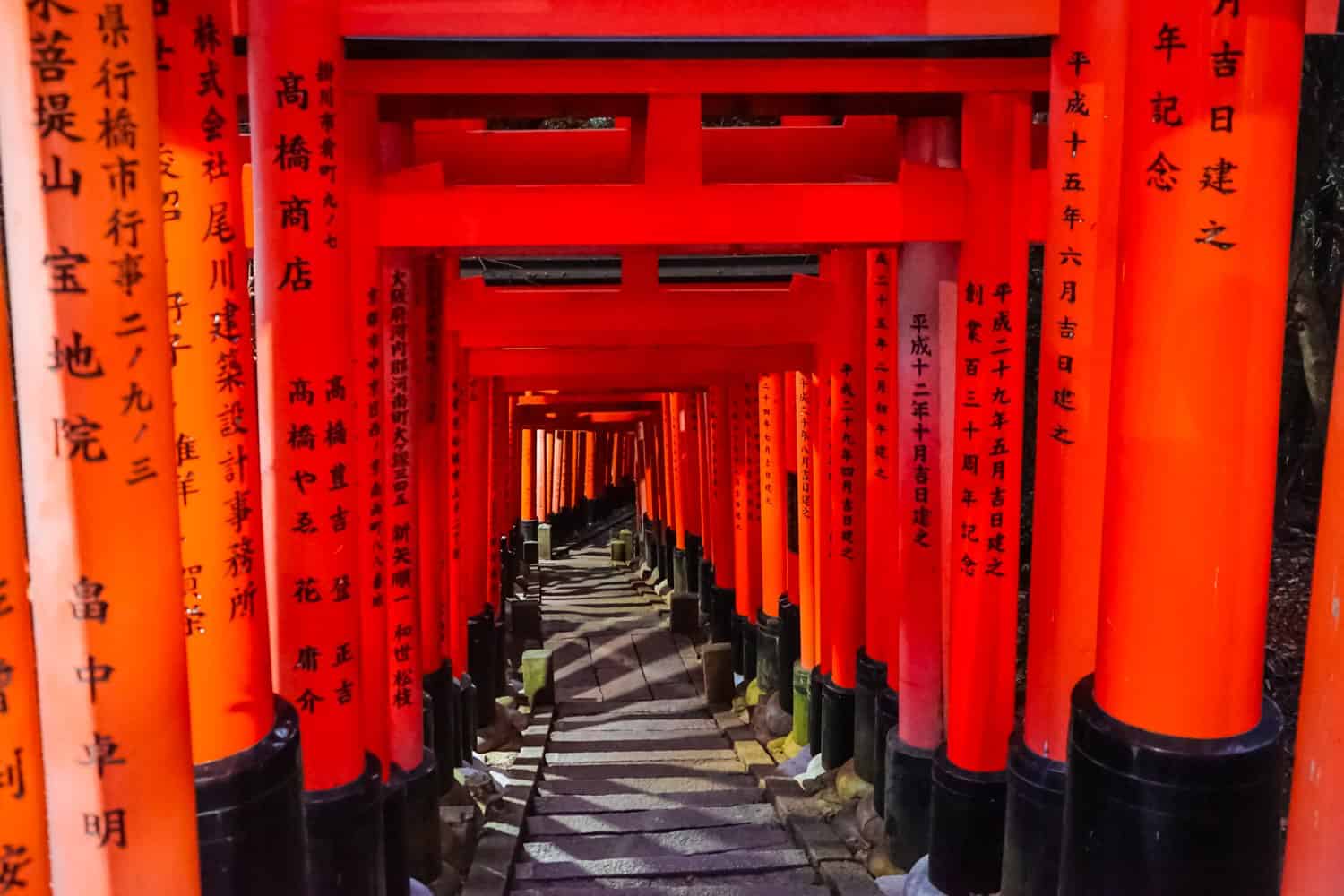
Yeah, It’s Fairly Expensive, But Also Not That Expensive
I put off travelling to Japan for years due to one simple reason: I didn’t think I could afford it.
To my great surprise, it ended up being much more affordable than I expected! In total, I paid just under $100 a day while travelling as part of a couple on a mid-range budget. That included my rail pass, accommodation in hotels and guesthouses, entrance tickets to temples and attractions, food and drink, and travel insurance. I’ve definitely visited more expensive countries in the world.
For more information on my expenses, check out my detailed guide on how much it costs to travel in Japan .
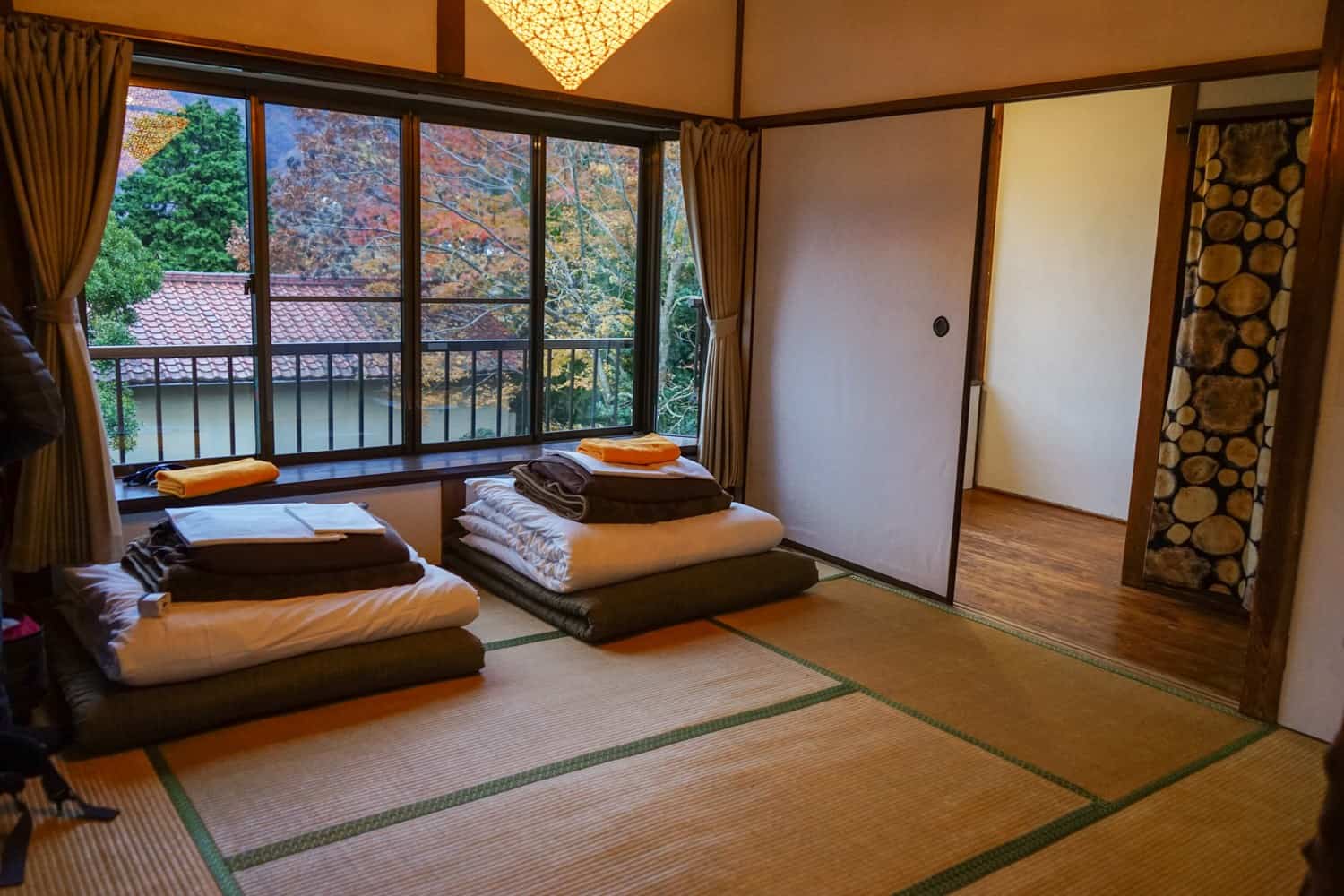
There Are So Many Different Types of Accommodation
One aspect I loved about Japan travel is how many different types of accommodation there are to stay in. I tried to check out as many of them as possible.
I stayed in a capsule hotel, spent a night in a ryokan, slept on a tatami mat floor, hung out in family-run guesthouses, and checked out some pretty hipster hostels.
My biggest surprise was learning that sleeping on a tatami mat was so comfortable! I often opted for the tatami mat rooms over Western-style bedrooms, as they’re usually a couple of dollars cheaper, and they worked out to be just as comfortable. I actually found it super cool to be staying in a minimalist room without any furniture! My only complaint was the smell of the tatami mats — most people love it, but I just couldn’t get used to it.
Staying in a ryokan was another exciting accommodation experience. These Japanese inns are generally known for being super-expensive, giving you the opportunity to experience a traditional local lifestyle. You’ll stay in a tatami mat room, bathe in a communal onsen, and tuck into a kaiseki with the other guests during dinner and breakfast. It was one of the coolest experiences I had in the country.
My final accommodation standout was a capsule hotel. I stayed here more for the novelty than the comfort levels, but it ended up being surprisingly cosy. My room had around 20 beds in small pods, all packed in together, but you still had a lot of privacy. I had my own little light in my capsule, my own power sockets, temperature control, and a curtain to close to keep people from peering in. These are a great way to save money in Japan, so I’d recommend trying them out if you’re going to be visiting on a budget.
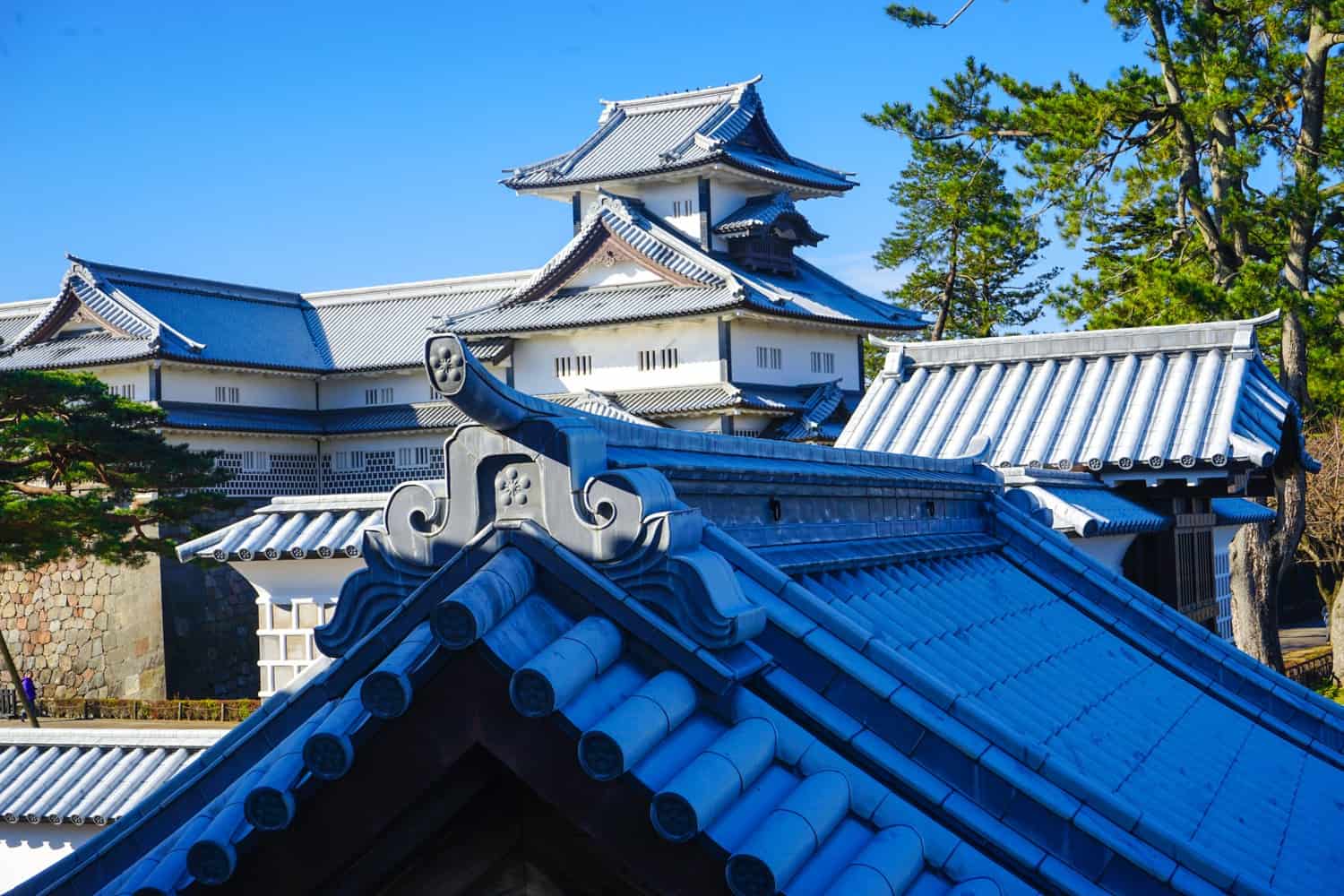
I Felt Super-Safe in Japan
Japan has a reputation for being one of the safest countries in the world, and I certainly never felt in any danger while I was there. I felt perfectly safe exploring the country alone, walking around at night on my own, sleeping on the train with my bags at my feet, and carrying my expensive camera in the open. I felt safer in Japan than anywhere else I’ve been in the world.
Still, that doesn’t mean that you should grow complacent and let your guard down. As with any country in the world, you should still keep watch over your belongings, be wary of complete strangers that are taking a sudden interest in you, and be careful with your alcohol consumption. All that good stuff.
Oh, and you should probably refresh your knowledge on what to do if there’s an earthquake before you get there. I experienced my first earthquake in Taiwan and because I grew up in the U.K., had no idea what to do. I remember feeling my bunkbed rattle beneath me as I frantically googled what to do in an earthquake. I should have been better prepared.
My fellow female travellers out there may want to utilise the women-only train carriages during peak travel times to ensure you’re away from any wandering hands — this is likely the only safety issue you’ll encounter in the country.
Keep your wits about you, take common sense safety measures, and you’ll have a wonderful time.
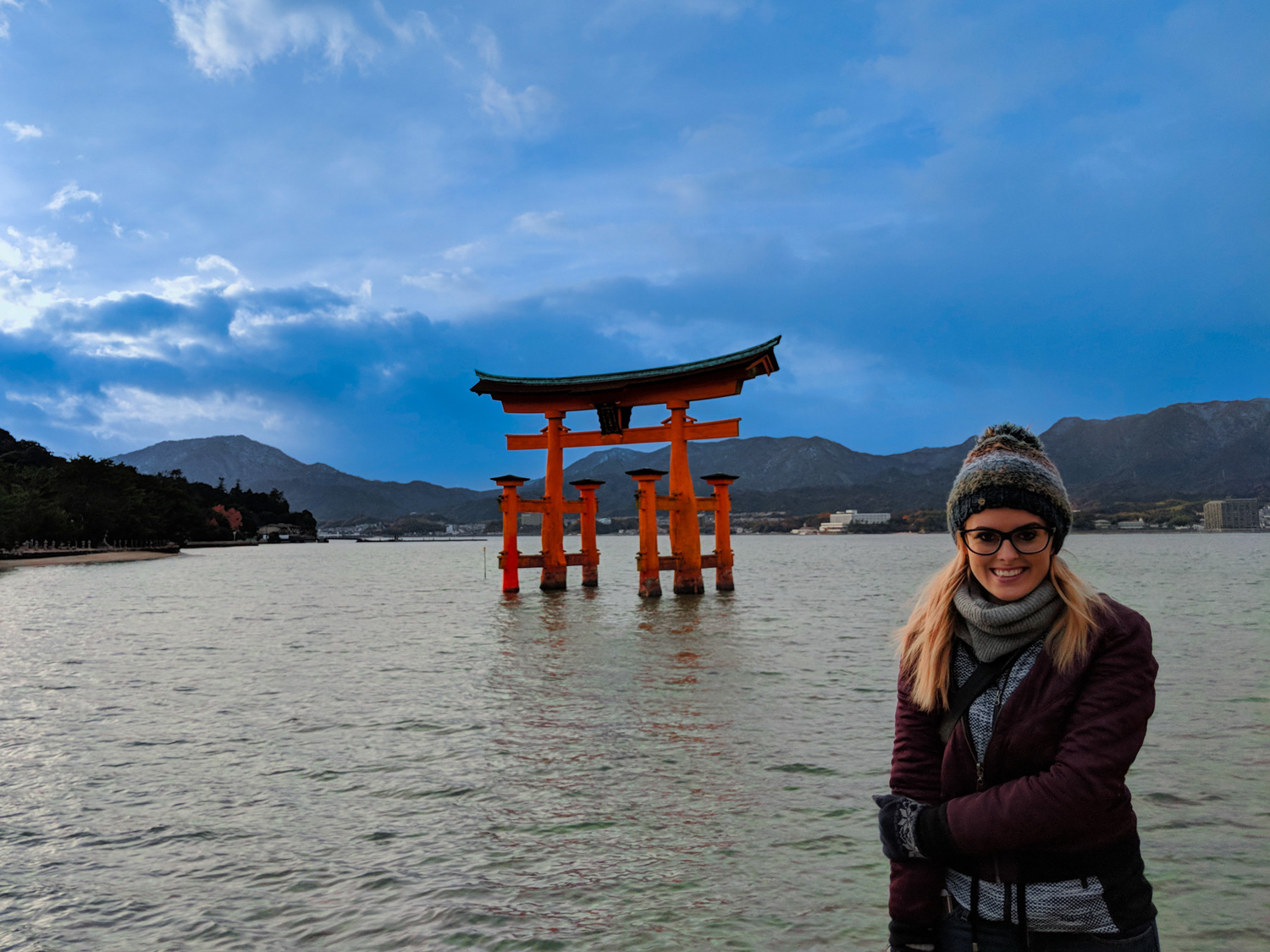
Winter is Going to Be Cold
Japan gets freezing in the winter and scorching in the summer.
I visited in December and was so cold. So much colder than I thought I would be. Although I confess to having little tolerance to the cold, so you’ll probably think I was being pathetic. Temperatures hovered around the freezing mark, and it snowed in Hiroshima and Yamanouchi. I regularly wore five layers of clothing and still spent most of my time shivering.
Visiting during summer takes you to the other end of the temperature spectrum. It gets super-hot in the summer months, with temperatures hitting as much 40 degrees (100°F) some years.
This is a destination that’s best visited in the spring or autumn.
But the Bonus with that is the Onsens!
One of the huge bonuses to visiting in the winter is getting to dive into Japan’s onsen culture. Onsen is the Japanese word for hot spring, and you’ll find them scattered all over this volcanic country. Some are outdoors, some are inside, some are found in guesthouses, ryokans, and hotels, some are in public bathhouses, some are public, some are private, some are same sex, some are mixed gender. The only rule is that you have to be naked.
I jumped in an onsen almost every night of my trip and it was so relaxing and comforting to do so. I highly recommend looking for accommodation with on-site onsens, as it allows you a little more privacy. At my hostel in Hakone and my ryokan in Yamanouchi, I got to jump in the private couples onsen with my boyfriend, which was so much fun!
In theory, you’re not supposed to use the onsens in Japan if you have tattoos, although the rules have relaxed in recent years. If you have one that can’t be covered up with a bandaid, I’d recommend checking out Tattoo Friendly , which lists hundreds of Japanese onsens you can visit if you’re inked.
And that was Japan!
This post was so much fun to write! If I’m being honest, I think I could have sat down and written another 3,000 words about my time in Japan — there’s just so much to learn from this country.
I can’t wait to return.

Have you been to Japan? If not, do you dream of visiting one day?
Related Articles on Japan 🏯 How to Spend Two Weeks in Japan: An Itinerary for First-Time Visitors 💴 The Cost of Travel in Japan: My Budget Breakdown 🍣 15 Weird and Wonderful Things to Eat in Japan 🎌 23 Incredible Things to Do in Osaka, Japan 😎 Hipster Harajuku: The Coolest Neighbourhood in Tokyo 🦔 Should You Go to a Hedgehog Cafe? My Experience in Japan 🐒 Why Seeing the Snow Monkeys in Japan Sucked
How useful was this post?
Click on a star to rate it!
Average rating 5 / 5. Vote count: 1
No votes so far! Be the first to rate this post.
Thanks so much!
You can follow along on my travels through my social media accounts below
Sorry you didn't find this article useful!
Help me improve it by leaving your comments below
All feedback is anonymous and emailed directly to me. If there's anything I can do to improve the quality of this article, please do let me know and I'll make the suggested changes within 24 hours
Lauren Juliff
Lauren Juliff is a published author and travel expert who founded Never Ending Footsteps in 2011. She has spent over 12 years travelling the world, sharing in-depth advice from more than 100 countries across six continents. Lauren's travel advice has been featured in publications like the BBC, Wall Street Journal, USA Today, and Cosmopolitan, and her work is read by 200,000 readers each month. Her travel memoir can be found in bookstores across the planet.
Related Posts

The Cost of Travel in South Korea: My 2024 Budget Breakdown

What’s it Like to Travel in Liechtenstein?

In-Depth Namibia Travel Guide: What’s it Like to Travel in Namibia?

How to Spend Three Perfect Days in Delhi: An In-Depth Itinerary

Pushkar Travel Guide: 11 Things to Do in Pushkar

The Ultimate Guide to Visiting the Taj Mahal
25 comments.
Japan sounds fascinating on so many levels. I think I would feel overwhelmed at first, but reading your post has made me think that going here is still achievable for us. I would love to experience a capsule hotel and their crazy vending machines as well as the cultural side of the country
This is a very useful post, Lauren! Elliot and I are most likely going to go to Japan next year (we’re thinking autumn), and I’m already overwhelmed thinking about planning it. So hearing helpful tips about trains (and that SUICA card!) and tattoo-friendly onsens is great!
I went to Japan last year for the first time and I feel like we barely scratched the surface! My favourite dish was pork ramen, it was the first meal I had in Kyoto and it was absolutely delicious. I can’t wait to go back!
Good point about being prepared for earthquakes. I’ve never experienced one, but if I continue traveling the way I do now, then maybe it’s just a matter of time. It makes me kind of nervous. You wrote it was your first earthquake, have you experienced many? And in that case, where? In Asia?
I never been drawn to Japan but as usual after reading your blog posts about a destination I feel an urge to go there NOW. You’re such a good writer!
Cool post Lauren. Did you take any of the high-speed trains while you were there? One of the best parts of my trip to Japan was experiencing the fast bullet trains. They go 320 km/h!
I’ve been staring at that metro map for the last 5 minutes trying to figure it out! :D Thank you for sharing this. I’m planning on heading to Japan soon, hopefully in a few months, and this definitely helps get me prepared for it, at least mentally :)
It’s true that Japan is not as expensive as everyone seems to think. Of course it’s a country with a high standard of living, but there are many ways for the budget traveler to get around that. For instance, most supermarkets have a cook preparing fresh food to sell. It’s usually quite good and way cheaper than restaurants. Plus, if you come 1 hour or so before they close, they’ll offer big discounts on the last meals available!
When is the best time to travel to Japan? You would say April/May or September/October? Which is the perfect month in your opinion?
This post really reminds me of the one have years I spent living in Japan. Japan is such a unique and special country in so many ways but it was difficult to live there.
I used to always hate Shibuya station. I don’t was trying avoid getting off there are changing there because I would inevitably get lost. One thing that I did live about Japan now is that sometimes you could find Beer vending machines I found that so cool.
Oh and then the small cars are called K cars. They have cheaper insurance. I think people like them because of the limited parking space, you even have to pay extra to park your car outside your apartment.
I really love Japan! I always make sure to eat my fave Japanese Food when I’m there and yes, the Metro gave me a headache too!
The map of local trains actually scared me haha. Surely I’d get lost in this mess. Off great post as always ;)
This is not appropriate for school children in the beginning It said a very naughty word in the very beginning I’m Offended. and It also said Dumba**
Why on earth would you think my site was written for kids?
Wow! I’m a lazy person Lauren, but you make travel seem so awesome! I love your writing- your words are clear and your voice is really articulate. You’re an image for women all around the world- follow your dreams!
The key to the Tokyo subway system is to focus on the Yamanote Line, which is the main loop around central Tokyo. From there, you can connect to other lines to take you where you want to go.
We love Tokyo and my daughter and I have even done a 72 hours in Tokyo trip! She still talks about Tokyo and a recent trip to Hong Kong was a good comparison for her, but she still likes Tokyo better.
Piss Alley was a blast – mostly Yakitori stands are what is mostly there now – but there is a good little Ramen joint, and another we really liked is gone now.
There are also a ton (no kidding!) of great sushi places – web search for cheap sushi in Tokyo for lots of options.
Another great place we loved to eat at was Pepper Lunch – they serve the food to you on a flat-iron cooker that comes straight out of the oven – and you cook your food and eat it!
Tokyo is not intimidating – it’s a great place to visit and signs are in English (mostly) and the city is pretty easy to navigate.
Thanks so much for sharing, Brent!
The picture telling people to not poke the face of Sarubobo is so typically Japan, I love it!! I recently moved to Tokyo to take a break from backpacking and I have to pinch myself every day that I get to live in this hectic and beautiful city. You’ve captured Tokyo and Japan’s quirks really well!
Good article. Visited Japan last year for ten days and absolutely loved it. Like many people, I also postponed visiting due to fears about very high cost, but once there I realize it is not that bad- how much you spend is really dependant on your tastes and how much luxury you require. It is very possible to do Japan on a budget, you just have to know ways to save money. Fore example, many corner stores sell packaged, relatively inexpensive meals that tasty and healthy for only a fraction of the price of what you would pay in a restaurant.
Hi, I enjoyed reading your article. The pics are beautiful, especially the one with the train on the bridge. I have to mention a few things that stuck with me. First…OMG! I got vertigo just by looking at the metro map. Used women’s underwear!? Really??? I laughed when I read your description of the cars “squished and blocky”. Yup! I will go to Japan just to use the toilets. LOL! Great post. Can’t wait to go there.
Hope you have a wonderful time there! :-)
I am going to Japan at the end of december, 1. I really tought it wasnt going to be that cold, but you now scare me a little :P. I live in Medellin now (70F all year) but I use to live in upstate NY, how come I can get so scare about cold? ehehe 2. I really wanted to see the snow money park. In the pictures, the mokeys look so Zen :(. But after reading your post, I am for sure not going. I love animals, but I dont want to see them being misstreated or in distress
Oh, don’t be scared of the cold in Japan! I’m super sensitive to it after spending seven-odd years travelling in mostly tropical places.
Really appreciated this post! I can’t wait to get to Japan :)
One of the best articles I’ve read on Japan that shows me exactly what to expect as a traveler.
I highly recommend using google maps while riding public transportation in Japan. With Tokyo’s subway systems, it offers detailed instruction for transferring plus giving you the exact exit numbers to use to reach your destination. One warning, Japanese people walk about twice faster than me, the estimated transfer time is usually not enough for me. However, the next one is usually minutes away. I have used it successfully in other parts of Japan with public transportation systems that will link all options in Osaka, Nara, Fukuoka and Kanazawa. I am not 100% sure about very rural area which I usually get to by car.
Leave a reply Cancel reply
Your email address will not be published. Required fields are marked *
Meet Lauren Juliff
What’s It Really Like to Travel Japan?
Adventurous Kate contains affiliate links. If you make a purchase through these links, I will earn a commission at no extra cost to you. Thanks!

How do I even begin to describe what it’s like to travel in Japan?
It is an experience . It surrounds you. Every moment of every day is filled with new discoveries and cultural difference and utter delights. I can’t describe it beyond that, but everyone who has been knows exactly what I’m talking about.
If there were a word to describe Japan as a whole, it would be reverent. This is a nation where every action displays a culture of deference, respect and obedience. It encompasses daily life.
Some examples?
Reverence of food. The food here is prepared and delivered with such deep respect and meticulous care, even in fast food joints. Anything else would be anti-Japanese. I didn’t have a single bad meal in Japan.
Reverence of manners. Japan has a longstanding reputation of politeness. One place where this was most evident was on trains. Whenever a conductor entered a car, he would enter and exit the car with an energetic yet crisp bow before attending to passengers.
Reverence of nature. Nature receives the utmost respect here, and you’ll often find that everything from architecture to food plays into an overall respect of the natural environment of Japan.
Reverence of rules. Japan is a rules-based culture. There are lots of written and unwritten rules – the Japanese wouldn’t dream of throwing recyclables in the trash, or acting rude to a stranger, or dressing like a slob. The list of taboos here is extensive.
Yes, most than anything else, it’s reverence that defines Japan. But beyond that, here are a few of the idiosyncrasies I noticed in the Land of the Rising Sun:

English is used for style, not function.
See English lettering somewhere? Chances are it’s not used for the purpose of communicating with non-Japanese speakers. Again and again, I noticed that English was used for little more than decoration.
On my first night in Tokyo, I was looking for a restaurant in a mall and I was delighted to find a pamphlet emblazoned with Mall Directory in ornate script. I opened it up…and it was all in Japanese. The English was just used for stylistic purposes.
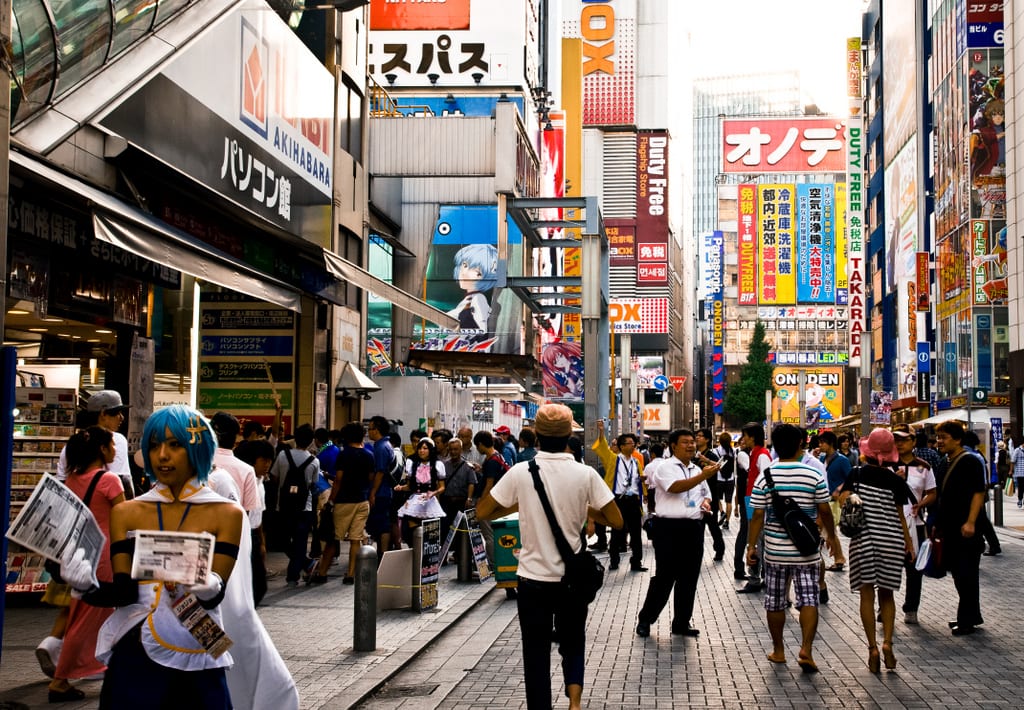
Sex is overt — except when it’s not.
If there’s any neighborhood you must visit in Tokyo, make it Akihabara. I planned to check out the electronics stores, seeing the newest innovations years before they hit the western market.
Instead, I found myself in the center for otaku (super-geek) culture. Electronics stores held court next to porn shops, crammed with sex toys and hentai (anime porn) comic books. Arcades were filled with nipple-baring figurines in sexual poses as prizes. Throughout the neighborhood, girls dressed as sexy maids advertised their cafes.
Now — the strange thing is that actual sex is kept under lock and key. While seeing men reading porn on the subway is a common occurrence, you wouldn’t see a couple making out and borderline dry humping in Tokyo. You barely saw people even holding hands. As I mentioned in my geisha post , there are clear boundaries between actual, consensual, conventional, relationship-based sex and just about everything else.

It’s not as expensive as you think.
Japan has long held a reputation as being one of the most expensive countries in the world to visit, with Tokyo holding the crown as one of the world’s most expensive cities.
After my visit, I think that reputation is a bit undeserved . Two things in Japan are quite expensive: lodging and long-distance transportation. But beyond that, prices aren’t that bad. I’d compare them to prices in London, Paris or New York.
Food, in particular, can be done on the cheap. Almost all of our meals cost less than 1000 yen ($10). My splurge meals actually weren’t that painful – I had a seafood feast in Kyoto for 3500 yen each ($35), a Kobe beef lunch in Kobe for 2950 yen each ($29.50), and a selection of sushi at a nice sushi bar in the pricey Tokyo neighborhood of Ginza – plus sake – for about 2100 yen ($21).
Subway rides in Tokyo cost 100-200 yen each ($1-2). Vending machine beverages cost 80-200 yen ($0.80-2). I even bought a Kindle Paperwhite from a discount camera shop in Shibuya for 8200 yen ($82) when it currently retails on Amazon for $139 !
I found Japan to be much cheaper overall than Australia or Switzerland, countries where everything is expensive.

Food is theater.
One night in Kyoto, my new friends Michael from the Deep Kyoto blog and his girlfriend Miu took me out for a seafood feast at a fun, wild and cheap seafood restaurant called Asahi Suisan . Halfway through our meal, a badass fishmonger (and the most muscular Japanese guy I’ve ever seen) brought out an enormous bluefin tuna and butchered it with gusto to cheers throughout the restaurant and squeals from a table of nearby girls.
And while he did it, video played in the background of the same fishmonger on a reality show in Japan, competing for his region in the field of tuna butchering!
It was a fabulous night of entertainment and it was another side of seeing how reverent the Japanese are toward the preparation of food.
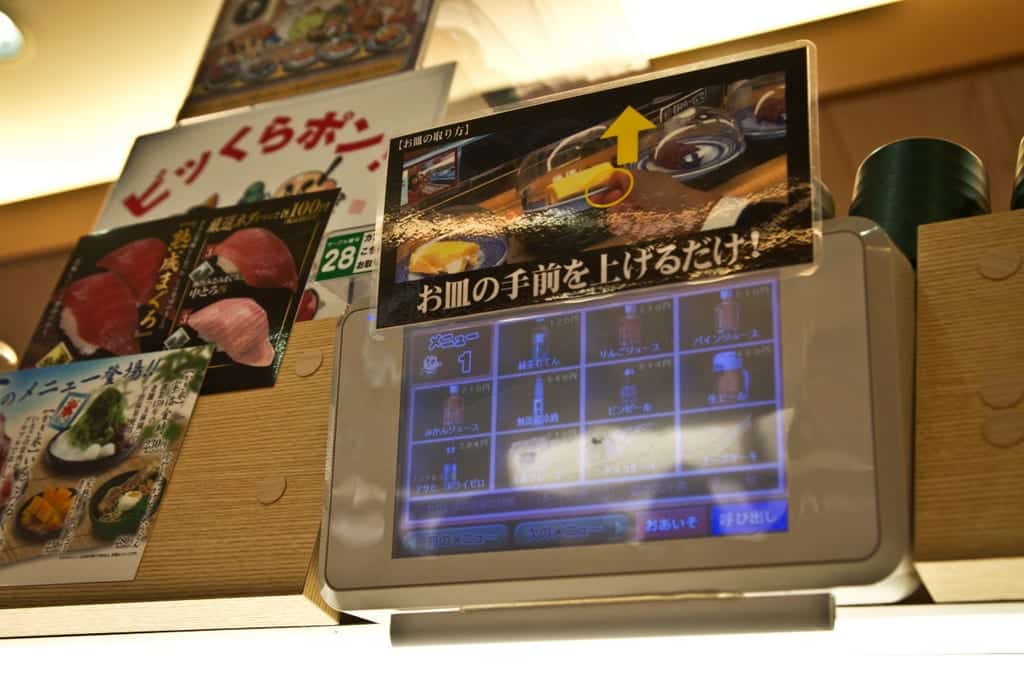
Everything is marvelously efficient.
One of the greatest performances was when my nozomi train to Kyoto pulled in. A fleet of women dressed in salmon uniforms, down to matching sneakers (!), entered the car and performed identical movements, taking out the trash bags and turning the seats around to face the other way, preparing them for the next influx of passengers.
In Japan, I would constantly think to myself, Oh. That makes sense . In the West, when presented with a more efficient solution, people would give reasons why not to implement it — that doing so would cost too much time or money that could be spent elsewhere. In Japan, they just do it, no questions asked.

The best-dressed women in the world live in Tokyo.
Sure, Italian and Parisian women dress beautifully, and London and New York women have a lot of style, but it’s nothing like the women in Tokyo. From perfectly tailored short dresses to their understated but highly functional designer flats, I gawked at the fashion in Tokyo.
Where to Stay in Tokyo: Best Areas and Accommodation

Kimonos are still very much worn.
I had the idea that Japanese women only wore kimonos for special occasions or times when traditional wear was best. Well, that’s not the case — I saw plenty of kimono-clad women (and men wearing the more plain yakuta ) throughout Tokyo and Kyoto!
In Kyoto, some temples allow women in for free if they’re wearing a kimono. That will actually save you a fair amount of cash, as most Kyoto temples charge around 400-600 yen ($4-6) entry. But in other cases, they’re simply what is worn for formalwear. I would love to get a formal kimono of my own someday.

Japan is HOT!
I thought August would be the perfect time to travel through Japan, with nice summer sunshine – no way, Jose! It gets unbearably hot with very high humidity. People in Kyoto actually walked around with towels around their necks to mop up their ever-dripping brows.
It’s too bad, because the heat put a damper on a lot of our sightseeing in Kyoto in particular, when I was visiting lots of outdoor temples.
While I was in Tokyo, the mercury actually hit 42 C (106 F), breaking records. People told me again and again that I was traveling at the worst time possible. My advice to you? Visit Japan in the spring or fall if you can.

Japanese toilets really are that amazing.
Believe it or not, those fancy Japanese toilets with all the push buttons aren’t only found in luxury establishments. You’ll even find fancy Japanese toilets at cheap ramen joints and Starbucks. Once you figure out which button performs the “rear cleansing”, you’ll never go back.
Incidentally, Japanese women take longer in the bathroom than anyone I’ve ever met.
These facts may or may not be related.

Cute rules.
You know all about Hello Kitty — but there’s so much cutesiness throughout Japan! Mascots for everything from companies to products often involve little furry cartoon characters holding hands and playing together. Cute little tunes, the kind you’d expect on a children’s show, play throughout Japan as well.
One might start thinking about the psychological implications of that – the Japanese work so hard that they enjoy their childhood wherever they can — but I just found it fun to bop along with the little animals.
Everyone is incredibly helpful.
Do you look lost? You won’t be for long. Japanese people are exceedingly helpful and even if they don’t speak English, they will drop everything to help you find your way.
I first noticed the exceptional level of helpfulness when I entered an electronics store. I asked about Kindles and the man replied that they didn’t have any, but another store might, and he’d be happy to give them a call and check.
This wasn’t another branch of their stores – this was a competitor. And he offered to call them for me. In the US, the most I would get from a salesperson would be, “You could try Best Buy.”

Japanese people love to photobomb.
Do they EVER love to photobomb!
But what is the single most shocking aspect of all?

You turn into a Japanese tourist.
Ah, Japanese tourists. The older ladies are decked out in visors and Keds, the teenagers with cameras worth thousands of dollars, the groups being led around by an umbrella. I squeezed through huge Japanese crowds on my way to class in Florence each morning, as they took up entire piazzas on their own.
And the Japanese tourists take pictures of absolutely everything .
Well. You know what I took pictures of in Japan? Toilets. Trash cans. Vending machines.
Yes, I became a Japanese tourist myself – because everything here really is so different and I couldn’t stop marveling at it all.
I get it now, Japanese tourists. I’m sorry I’ve made fun of you.
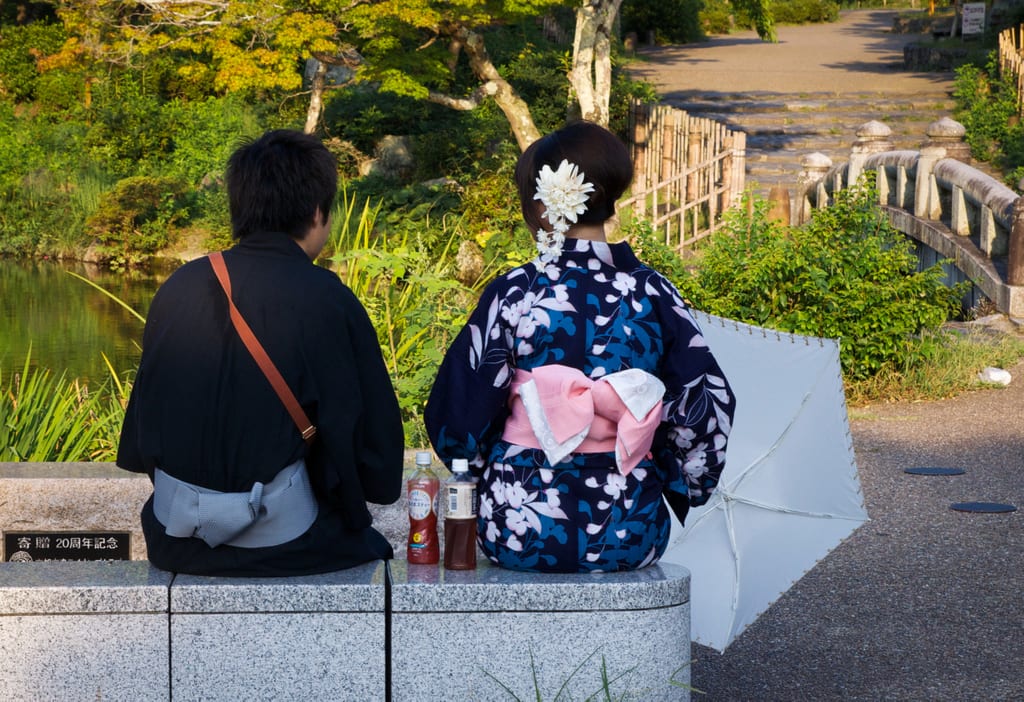
Japan is all-encompassing.
Even though Japan is on the pricier side, I consider it an extremely high value destination. Like Paris and New York, just walking down the street is a fascinating experience in Japan. Every moment, you will be stunned and amazed at the world that surrounds you.
Japan is delicious. Japan is kind. Japan is ridiculously clean. Japan is freaky and cute.
More than anywhere else I’ve been, I feel like Japan is the kind of destination that every traveler must experience at least once in his or her lifetime. I loved my two weeks there and I can’t wait to return.
Just one thing – don’t forget to buy travel insurance before you travel to Japan! I never travel without it and always use World Nomads.
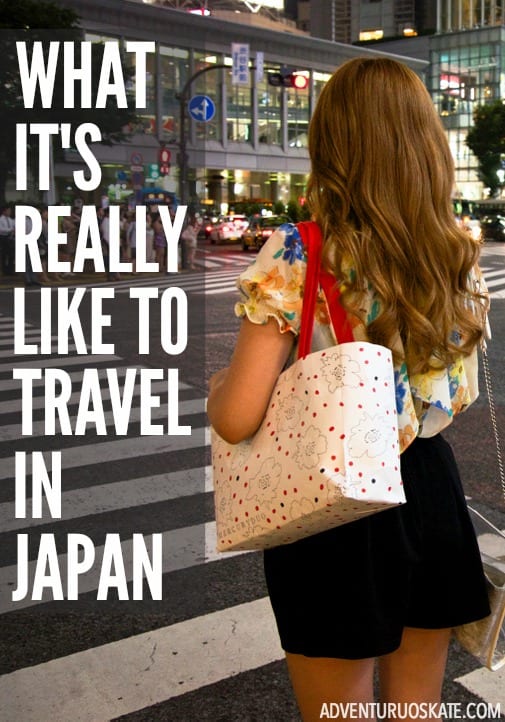

Essay on My Trip To Japan
Students are often asked to write an essay on My Trip To Japan in their schools and colleges. And if you’re also looking for the same, we have created 100-word, 250-word, and 500-word essays on the topic.
Let’s take a look…
100 Words Essay on My Trip To Japan
My journey to japan.
I was thrilled to visit Japan, a country of islands. My family and I flew on a plane for many hours. When we landed, everything looked different and new.
Exploring Tokyo
Tokyo, the big city where we stayed, was busy and bright. We saw tall buildings and many people. I loved the trains that moved very fast.
Japanese Food
Japanese food was tasty. We ate sushi, which is rice and fish, and tried noodles called ramen. The flavors were amazing and different from home.
Beautiful Places
We visited beautiful gardens with lots of flowers and trees. The colors were so pretty. We also saw a huge mountain called Mount Fuji.
Cultural Fun
I learned to make origami, which is folding paper into shapes. We also watched a show with people dressed as samurai, which was exciting.
Goodbye Japan
Saying goodbye to Japan was sad. I made great memories and hope to go back one day. Japan is a special place that I will always remember.
250 Words Essay on My Trip To Japan
Last year, I visited Japan, a country of beautiful cherry blossoms and modern cities. It was a dream trip, and I got to see many amazing places.
Arriving in Tokyo
My adventure started in Tokyo, the capital city. It’s a very busy place with tall buildings and bright lights. I saw the famous Tokyo Tower and walked across the busy Shibuya Crossing. It was exciting to see so many people and cars moving in all directions.
Exploring Kyoto
Next, I took a train to Kyoto, known for its old temples and traditions. I visited the Kinkaku-ji Temple, which is covered in gold leaf and looks like it’s shining. I also dressed up in a kimono, which is a traditional Japanese outfit, and walked around the old streets. It felt like I was in a different time.
Japanese food was delicious. I tried sushi, which is raw fish on rice, and ramen, a type of noodle soup. Everything was very tasty, and the chefs were very skilled at making it.
I also saw Mount Fuji, a famous mountain in Japan. It’s very big and covered in snow at the top. I didn’t climb it, but I took lots of pictures. The view was breathtaking.
My Thoughts
My trip to Japan was unforgettable. I learned a lot about Japanese culture and saw many beautiful places. I hope to go back one day and see even more of this wonderful country.
500 Words Essay on My Trip To Japan
My exciting journey to japan.
Last summer, I had the chance to visit Japan, a beautiful country full of amazing sights and rich history. Japan is known for its mix of old traditions and new technology. This trip was like a dream come true for me because I had always wanted to see the cherry blossoms and experience the culture I had read so much about.
Arrival in Tokyo
My adventure began in Tokyo, the busy capital of Japan. Tokyo is a huge city with tall buildings, bright lights, and lots of people everywhere. The moment I stepped out of the plane, I could feel the energy of the city. I visited famous places like Shibuya Crossing, where hundreds of people cross the street from all directions. It was like being in a movie!
Exploring Japanese Food
Japanese food was a big part of my trip. I tried sushi, which is raw fish with rice, and it was delicious. I also had ramen, a type of noodle soup, which was very tasty and perfect after a long day of walking. The food was different from what I’m used to, but I loved trying new things.
Learning About History and Culture
In Kyoto, an old city in Japan, I saw beautiful temples and learned about the country’s history. I visited the Kinkaku-ji Temple, which is covered in gold leaf and shines brightly by the water. I felt like I was stepping back in time as I walked through the peaceful gardens and listened to the stories of samurai and ancient emperors.
Fun with Technology
Japan is famous for its cool technology. In Akihabara, a district in Tokyo, I saw lots of electronic shops and played video games that haven’t even come out in my country yet. There were robots in some stores, and it felt like I was in the future.
Meeting New Friends
The people in Japan were very kind and polite. Even though I didn’t speak Japanese very well, they tried their best to help me whenever I needed directions or had questions. I made a few friends who showed me around and taught me some Japanese words. It was fun to learn a new language and make friends at the same time.
Beautiful Nature
Outside the cities, I saw the amazing nature of Japan. I went to Mount Fuji, a famous mountain that you can see on postcards. The view from the top was breathtaking. The air was fresh, and the sky was so clear that I could see for miles.
My Lasting Impression
My trip to Japan was an unforgettable experience. I saw so many new things, from the busy streets of Tokyo to the quiet beauty of the countryside. The mix of old and new, the delicious food, the friendly people, and the stunning nature made my trip special. Japan left a lasting impression on my heart, and I can’t wait to go back one day.
That’s it! I hope the essay helped you.
If you’re looking for more, here are essays on other interesting topics:
- Essay on My Trip To Egypt
- Essay on My Trip Flight
- Essay on My Travel Experience
Apart from these, you can look at all the essays by clicking here .
Happy studying!
Leave a Reply Cancel reply
Your email address will not be published. Required fields are marked *
Save my name, email, and website in this browser for the next time I comment.
Nomadic Matt's Travel Site
Travel Better, Cheaper, Longer
The Perfect 7-Day Japan Itinerary for First-Time Visitors

Japan captured my heart from the moment I firs visited. The delicious food, the rich culture, breathtaking landscapes, vibrant history, and the very friendly and polite people – it all blew my mind.
But Japan often feels impenetrable, especially to first-time visitors. While I think Japan deserves a minimum of 10 days, I get that some people might only have a week, so I wanted to write this, my ideal seven-day itinerary for Japan for a first-time visitor.
With only a week, there’s not much you can see unless you really rush it. And I don’t think you should do that.
So this itinerary only focuses on Tokyo and Kyoto (the most popular destinations) as well as some day trips from each. If you wanted to rush things a little, you could add in Osaka (more on that at the end).
(Note: If you purchased a Japan Rail Pass , activate it on arrival. That way, you can take advantage of the free JR trains throughout the city.)
Table of Contents
Japan Itinerary Day 1: Tokyo
Japan itinerary day 2: tokyo, japan itinerary day 3: tokyo, japan itinerary day 4: kyoto, japan itinerary day 5: kyoto, japan itinerary day 6: nara, japan itinerary day 7: tokyo, an alternative itinerary.

Tsukiji and Toyosu Fish Markets Cure your jet lag with some food! In 2018, Tokyo’s main fish market moved to Toyosu. It is now twice the size of Tsukiji (the old one), making it the largest such market in the world. Here you can eat fresh sushi for breakfast, just a few feet from where it was hauled in from the sea, while marveling at the chaotic atmosphere.
You can still head to the old market in Tsukiji to eat, shop, and wander as well. I like it a lot, because there are more food options! Food and drink tours of the Tsukiji Outer Market are available for around 15,000 JPY.
Toyosu Fish Market is open Monday-Saturday 5am-5pm, though most shops don’t open until 7am. Admission is free, but you have to pick up a visitor’s pass when you enter. Tsukiji Fish Market’s hours vary by shop (usually 5am-2pm). Admission is free.
teamLab Planets This digital art installation is a multi-sensory and immersive experience in which you become part of the artwork, walking barefoot through the four exhibition spaces and gardens as you interact with the installations’ elements in unique ways. It’s really fun! TeamLab is generally sells out in advance, so I recommend getting your tickets online ahead of time .
Take a walking tour Walking tours are a great way to get the lay of the land while connecting with a local guide. I always go on one or two when I arrive somewhere. Tokyo Localized offers many free tours, including a classic overview and ones of both the famed Harajuku and Shinjuku neighborhoods. Its Imperial Palace tour would be the most convenient one after teamLab.
The Imperial Palace Formerly Edo Castle, the Imperial Palace was built in the 15th century, and some of the walls and moats from that time are still in use to this day. When the emperor moved from Kyoto to Tokyo in 1869, he took Edo for his new palace and renamed it. While you can’t go inside, it is surrounded by beautiful grounds, a moat, and a park worth wandering through. You can also see the changing-of-the-guard ceremony (though it’s relatively low-key and unassuming). Admission to the grounds is free.
Shinjuku Gyoen National Garden This park is over 144 acres and home to some 20,000 trees. Most of the original park was destroyed in World War II but was rebuilt and reopened in 1949. During spring, it is one of the best places to see cherry blossoms. My favorite area is the landscape garden, which has several ponds with bridges and islands. It’s a peaceful oasis away from the urban hustle and bustle.
Depending on how you feel relative to your jetlag, you could fit a few more activities before you end your day. Check out this post for suggestions .

- Senso-ji – This is Tokyo’s most popular and famous temple. Beautifully painted, it sits in a scenic spot near a pagoda and the lovely Kaminari Gate. There’s a huge statue of Kannon, the goddess of mercy, inside the main hall. It’s very busy during the day, so maybe check out the grounds in the evening.
- Asakusa Shrine – This nearby Shinto shrine is much more peaceful, with fewer visitors, but with people praying, meditating, or performing traditional rituals. It was built during the Edo period (1603–1868) and survived the air raids of World War II.
Afterward, head to Ueno Park . Spanning over 133 acres, Ueno Park was established in 1873 on land formerly owned by a 17th-century Buddhist temple. It gets super busy in cherry blossom season, as there are over a thousand trees here. Throughout, you’ll find various stalls and vendors selling snacks, drinks, and souvenirs. On weekends, there are usually cultural events or festivals showcasing traditional arts, music, and dance. Four of Tokyo’s main museums are here:
- Tokyo National Museum – Established in 1872 on the north end, this massive building is the oldest and largest art museum in Japan. It houses one of the world’s largest collections of art and artifacts from Asia, particularly Japan.
- Tokyo Metropolitan Art Museum – This museum showcases rotating exhibitions of contemporary and traditional Japanese art.
- National Museum of Nature and Science – This museum features a wide range of permanent and temporary exhibitions covering natural science and history.
- Tosho-gu Shrine – This beautiful 17th-century Shinto shrine has carved gold doors and other ornate carvings. It’s worth seeing up close!
Afterward, walk down to Akihabara to explore the video game parlors, arcades, and anime shops. This very buzzy area is ground zero for all things electronic, and it’s fun to play many of the games. This is where you’ll find the famous maid cafés, where servers dress up as maids and serve you food and drinks. These range from big touristy ones to holes-in-the-wall (the girls on the street are promoting the latter, which are a lot more culturally fun). They aren’t cheap, though, as you have to buy drink packages and pay a fee, but they’re kitschy and fun.
In the evening, visit Shinjuku and then drink in Golden Gai . In Shinjuku, you’ll find a plethora of cool bars, bright lights, and tiny hole-in-the-wall eateries. Be sure to wander down Memory Lane (aka Piss Alley) for tiny izakaya joints and bars. Afterward, head over to Golden Gai, a warren of narrow alleyways with a bit of a red-light-district feel, flanked by diminutive backstreet bars. It’s quite touristy but also a lot of fun. I’ve had some wild nights here!
With Arigato Tours , you’ll learn about the neighborhood while stopping to sample Japanese classics like sushi, yakitori, and ramen. The 23,900 JPY cost includes a drink and dishes at four stops.

Kamakura Here you can see a 13-meter (43-foot) bronze statue of Buddha that was built in 1252. It was initially constructed within Kotoku-in Temple, but that has since been washed away by several storms, so it now sits in the open air. Admission to enter the temple grounds is 300 JPY, while it’s 20 JPY to go inside the statue. The journey there — around an hour — is free with a Japan Rail Pass .
Tokyo Disneyland I’m a sucker for Disney. You’ll find many of the same classic rides from Disney World here, like Splash Mountain, Big Thunder Mountain, The Haunted Mansion, and everyone’s favorite teacup ride, The Mad Tea Party. But there are several unique attractions as well, like Pooh’s Hunny Hunt and Journey to the Center of the Earth.
Ticket prices vary depending on the day and time, but full-day admission begins at 7,900 JPY for adults and 4,400-6,200 JPY for children. It’s best to book in advance .
Mount Fuji Mount Fuji is located an hour outside of Tokyo. An active stratovolcano (which last erupted in 1708) and covered in snow for almost half of the year, it stands an impressive 3,776 meters (12,389 feet) and provides one of the most iconic views in the country. One of the Three Holy Mountains of Japan, Mount Fuji is both a Special Place of Scenic Beauty and a UNESCO Cultural Site. In the summer, the mountain is open to hikers, who take 5-12 hours to reach the summit (traditionally, they depart at night to arrive at the top for the sunrise).
If you don’t want to hike, you can simply visit on a day trip. There are buses that can take you partway up, where you’ll be offered sweeping vistas of the surrounding area. Guided day tours from the city cost around 12,000 JPY.

Wander the Bamboo Forest For a relaxing break, head to Arashiyama and let the dense and towering stands of bamboo envelop you. Located near the famous Tenryu-ji temple, it’s one of the most beautiful places in the entire country. It’s not that big, but there are some hidden areas to explore. Just make sure to arrive early if you want to enjoy it without the crowds (it fills up fast after sunrise).
While there, I would also recommend visiting the Okochi Sanso Garden, which (along with the home) belonged to the famous Japanese actor Denjir? ?k?chi (1898–1962). It’s not free (it’s 1,000 JPY), but it’s really nice and has some wonderful views.
Visit the Golden Pavilion Originally built in the late 14th century as a retirement villa for the shogun (military governor), this iconic structure was later converted into a Zen Buddhist temple. The present-day edifice dates only to the 1950s, however, when a monk attempting to kill himself burned the historic original to the ground. The rebuilt temple is covered in brilliant gold leaf, symbolizing purity and enlightenment. Each of the three stories exhibits a different architectural style. Completing the scene are the serene reflecting pool and traditional Japanese gardens that contain lush foliage, manicured trees, and scenic walking paths.
1 Kinkakuji-cho, Kita-ku, Kyoto-shi, Kyoto, +81 075-461-0013, shokoku-ji.jp. Open daily 9am-5pm. Admission is 500 JPY.
Admire Ryoan-ji Temple This is my favorite temple in Kyoto. Originally established in 1450 as a residence for a high-ranking samurai, it was soon converted into a Zen temple and is now a UNESCO World Heritage Site, with a mausoleum that houses the remains of seven emperors. Its traditional rock and sand garden is considered one of the best in the country. There’s also a teahouse where you can experience the traditional Japanese tea ceremony ( chanoyu ) as you overlook the Kyoyochi reflecting pool.
There are other temples in the area to check out as well:
- Daitoku-ji Temple – This massive complex dating back to 1315 covers almost 60 acres. It contains several dozen temples and is a good place to see a variety of Zen gardens and architectural styles. It’s also deeply linked to the Japanese tea ceremony, as several of the country’s most noteworthy masters studied here.
- Toji Temple – This is home to Japan’s tallest pagoda (five stories high). Founded in 796, just after Kyoto became the capital, it was one of only three Buddhist temples allowed in the city.
Go on a sake brewery tour Kyoto has a sake (rice wine) brewing tradition going back 400 years and is known for some of the best in the world, due to using the area’s pure natural spring water in the brewing process. Arigato Tours offers an excellent three-hour tour of Fushimi (the brewing district) for 23,320 JPY, including stops at several breweries, a guided tour of the Gekkeikan Okura Sake Museum, and tastings.

See the Fushimi Inari Shrine This mountainside Shinto shrine, dating back to 711, is dedicated to Inari, the god of rice and prosperity. It’s known for its thousands of vibrant orange torii gates that form a network of trails leading up Mount Inari. You can hike the trails on your own while enjoying panoramic views of Kyoto below or join a guided hiking tour , on which you’ll get off the paved paths and into hidden bamboo groves. Get here as early as possible to avoid the crowds.
68 Fukakusa Yabunouchicho, +81756417331, inari.jp. Open 24/7. Admission is free.
Walk around Higashiyama Spend an afternoon walking along the narrow streets of one of the oldest and best preserved districts on your own or on a walking tour . The traditional machiya buildings (traditional wooden townhouses) are filled with small shops selling local specialties and handicrafts, as well as restaurants and teahouses. It’s a popular area in which to participate in a tea ceremony . Another nice place to stroll in this neighborhood is the Philosopher’s Path, which follows a cherry-tree-lined canal that’s beautiful and meditative even when the blossoms aren’t in season.
Visit Kiyomizu-dera One of a number of UNESCO sites in ancient Kyoto, Kiyomizu-dera (meaning “pure water temple”) is located in the foothills of Mount Otowa in the eastern part of the city. It’s one of the most famous temples in all of Japan. It was established in 778, but most of the existing buildings date to the 17th century. There’s not a single nail used in the construction, which becomes all the more impressive once you see how large the temple is, which is best known for its wooden terrace that juts out over the hillside. The temple’s name comes from the nearby waterfall whose waters (from which you can still drink today) are said to have wish-granting and healing powers.
1 Chome-294 Kiyomizu, +81 75-551-1234, kiyomizudera.or.jp. Open daily 6am-6pm. Admission is 400 JPY.
Explore Shorin-ji Temple This small temple dates back to the 16th century. What makes it worth visiting is its meditation classes. You’ll get to tour the temple and then be instructed in zazen , the Japanese style of meditation. It’s a very unique experience and something that I think will add a lot of depth and nuance to your visit (especially if you’ve seen a lot of temples). Just make sure to dress comfortably.
15 Chome-795 Honmachi, +81 75-561-4311, shourin-ji.org. Open daily 10am-4pm. Admission is 800 JPY.
Wander the Nishiki Market Nishiki Ichiba is now one of the biggest indoor markets in town. Known as “Kyoto’s Kitchen” and spanning over five blocks, it is full of vendors selling traditional dishes from the region, classic Kyoto souvenirs, and really just about anything else. There are over a hundred stalls here, many of which have been in the same family for generations. Opening hours depend on the shop but are typically from 9am to 6pm.
To dive deeper into Japanese food culture, you can take a food tour of the market . It’s the best way to learn about all the food you’ll see, as well as the market’s history.
Explore Gion Gion, the historic geisha district, is renowned as being one of the most iconic and atmospheric areas of town. It’s known for its traditional wooden machiya houses, narrow alleyways, cobblestone streets, and preservation of geisha (known locally as geiko) culture. Lining the main street are ochayas (teahouses where geishas entertain), small shops, and many restaurants, ranging from upscale kaiseki restaurants serving traditional Kyoto cuisine to casual eateries.
To really learn more about this amazing party of town and its past, take a walking tour of Gion . You’ll learn a ton and get a lot of context. They cost around 1,800 JPY.
At night, go to the Pontocho Row , a narrow street lined with restaurants, hole-in-the-wall bars, and jazz clubs. It’s one of the more lively areas in Kyoto.

Nara was the capital of Japan in the eighth century, so there are lots of buildings and temples here that are upwards of a thousand years old (which is rare in Japan, due to the prevalence of fires and earthquakes, as well as World War II). Some things to do:
- Frolic with deer – The real draw in Nara are the deer. Since the 17th century, those in and around the city have been considered sacred. You can buy crackers to feed them or just watch them stroll around carefree.
- See the Buddha – Don’t miss a visit to Todai-ji, the world’s largest wooden building, home to a 16-meter (52-foot) Buddha statue. It was built in 738 and is now a UNESCO World Heritage Site.
- Take a walking tour – This guided half-day walking tour for 11,500 JPY includes all of Nara’s highlights as well as a traditional lunch.

Ryogoku Kokugikan, Japan’s most famous sumo wrestling arena, hosts tournaments three times each year, in January, May, and September. Tickets sell out quickly, so book online in advance. Prices vary but start around 3,200 JPY for arena seats. You can book a ticket online here (you’ll be accompanied by a guide too, so you can learn more about the tradition as it unfolds before your eyes).
To learn more about the sport in in the off-season, book a tour of a sumo stable .

So, if you want to add another city to this itinerary you can follow this breakdown:
- Days 1 & 2: Tokyo
- Days 3 & 4: Kyoto
- Day 5: Nara
- Days 6 & 7: Osaka
Tokyo, Kyoto, and Nara are all covered above. As for Osaka, some of my favorite things to see and do:
Take a food tour Known as “the Kitchen of Japan,” Osaka boasts a diverse culinary scene. Mouthwatering sushi and sashimi, Kobe beef and Japanese BBQ, and flavorful ramen can all be found here in abundance. Plus, there are local specialties like okonomiyaki (a savory pancake with egg and vegetables) and kushikatsu (kebab skewers). You can take a food tour for around 13,000 JPY, a ramen and gyoza cooking class for 9,500 JPY, or just wander and eat.
Osaka Castle One of the most famous landmarks in the country, the castle was originally built in the late 16th century by Toyotomi Hideyoshi and played a pivotal role in the unification of Japan during the Sengoku period (1467-1615). Over the centuries, it has been destroyed and rebuilt multiple times due to wars, fires, and natural disasters. The current version dates to 1931. The castle is situated amid sprawling grounds and surrounded by a moat. It’s also home to a small but insightful museum and an observation deck that offers some picturesque urban views.
Dotonbori This is arguably Osaka’s most iconic district, known for its vibrant nightlife (bars, clubs, theaters, and music venues), colorful signage, and delicious food. It’s best seen at night due to the plethora of huge neon lights and signs lining both the canal and streets, which have become symbols of Osaka’s nightlife. A guided walking tour that includes Dotonbori as well adjacent neighborhoods is 6,500 JPY.
Shitennoji Temple This temple is one of the oldest Buddhist temples in Japan, founded in 593. The architecture is a blend of traditional Japanese and East Asian styles, featuring impressive pagodas, gates, and shrines set amid serene gardens. Stroll through the tranquil grounds, admire the beautiful architecture, and learn about the temple’s historical and cultural significance at the museum. The temple is 300 JPY to enter, the garden is 300 JPY, and the museum is 500 JPY.
Japan is one of my favorite countries. While it’s relatively small, it offers an amazing array of things to see and do (as well as some of the best food in the world). With seven days, you can easily see a good number of the main highlights and get a taste for the incredible history and culture. It will be a busy week, but this itinerary ensures you’ll still have some time to slow down, relax, and take in the local pace of life.
Just make sure you get a Japan Rail Pass before you go. While it’s not as cheap as it used to be, it will likely save you time and money!
Book Your Trip to Japan: Logistical Tips and Tricks
Book Your Flight Find a cheap flight by using Skyscanner . They are my two favorite search engines, because they search websites and airlines around the globe, so you always know no stone is being left unturned!
Book Your Accommodation You can book your hostel with Hostelworld as they have the most comprehensive inventory so they are best for booking a hostel. If you want to stay in a hotel or guesthouse in Japan, use Booking.com as it consistently returns the cheapest rates for guesthouses and hotels.
Don’t Forget Travel Insurance Travel insurance will protect you against illness, injury, theft, and cancelations. It’s comprehensive protection in case anything goes wrong. I never go on a trip without it, as I’ve had to use it many times in the past. My favorite companies that offer the best service and value are:
- Safety Wing (best for everyone)
- Insure My Trip (for those over 70)
- Medjet (for additional evacuation coverage)
Looking for the Best Companies to Save Money With? Check out my resource page for the best companies to use when you travel! I list all the ones I use to save money when I travel — and I think they will help you too!
Be sure to check out the Japan Rail Pass if you’ll be traveling around the country. It comes in 7-, 14-, and 21-day passes and can save you a ton of money!
Looking for More Travel Tips for Japan? Check out my in-depth Japan travel guide for more ways to save money, information on costs, tips on what to see and do, suggested itineraries and reading and packing lists, and much, much more!
Got a comment on this article? Join the conversation on Facebook , Instagram , or Twitter and share your thoughts!
Disclosure: Please note that some of the links above may be affiliate links, and at no additional cost to you, I earn a commission if you make a purchase. I recommend only products and companies I use and the income goes to keeping the site community supported and ad free.
Related Posts

Get my best stuff sent straight to you!
Pin it on pinterest.
Japan Essay
Article By: Isaac Goodman-Boyd

I loved Japan before I visited there– loved their video games, TV shows, martial arts, and amazing sword fights. But my only contact with Japan was through the Internet. Reading Japanese comic books (Manga) and watching Japanese cartoons (Anime) are my favorite pastime. So on Christmas day, when my parents gave me a book about Japanese culture, I was happy. When I opened the book and discovered the plane tickets inside, I was ecstatic.
In preparation for the trip, we took Japanese language lessons from a private tutor. By the time the trip rolled around I was eager to practice my new skills.
After landing in Narita airport, our first stop was the Zen Bed and Breakfast in Asakusa, Tokyo. My formal Japanese greeting impressed the owners. In the mornings, we had breakfast with them. I had never had rice and soup for breakfast before. Being a very picky eater, I rarely try anything new. But in Japan, I was determined to try everything. These home cooked breakfasts were the best meals we had on our trip.
In Tokyo, we visited the Imperial Palace. We were only allowed in the public garden but that was enough because it is as big as my neighborhood.
In Akihabara (Electric Town), we went to several arcades to see the latest in video games. My brother and I love these games and we’re pretty good. But we were nothing compared to the insane skill of the Japanese. The weird thing was, most everyone there were adults. My brother and I, two teenagers, were the youngest there.
After Tokyo, we went to Kyoto and stayed in our own town house called a Machaya (old merchants house.) The home was decorated in traditional Japanese fashion. My absolute favorite thing in the house was the bath. This room had a small deep tub, a shower next to it and a drain in the floor. Press a button and the tub automatically fills with hot water. I would shower with soap and cold water, then slowly lower myself into the boiling liquid. Any stress I ever had in my life seemed to melt away.
In Kyoto, we went to Chion-in Temple, which today is the headquarters for the J ` odo school of Buddhism. We passed through the San-mon, a Buddhist temple gate at the main entrance. This is the largest temple gate in Japan but even that couldn’t prepare me for the scale of Chion-in. Meditating in the public prayer space, I thought about how small I am compared to this enormous structure.
Before we knew it, we were back in Tokyo scrambling to see as many sights as we could on our final day. We woke at five A.M. to go to the fish market. My father and I took pictures of the largest fish we had ever seen while my mother and brother ate sushi. Despite my vow to try everything, I couldn’t bring myself to eat raw fish at six in the morning.
After the market, we went to Shibuya (a Tokyo Times Square). My brother went to another arcade while I tried to get my last fill of Japan. The streets were really crowed (Tokyo is very crowed). Despite this, no one was ever rude or angry. Even to American tourists who didn’t know where they were going.
I used to love Japan for its Anime and video games but now I feel a connection to its ancient culture and current society. I look forward to returning when I’m in college.
Dear Reader: This page may contain affiliate links which may earn a commission if you click through and make a purchase. Our independent journalism is not influenced by any advertiser or commercial initiative unless it is clearly marked as sponsored content. As travel products change, please be sure to reconfirm all details and stay up to date with current events to ensure a safe and successful trip.
2 Replies to “Japan Essay”
I loved Japan before I visited there– loved their video games, TV shows, martial arts, and amazing sword fights. But my only contact with Japan was through the Internet. Reading Japanese comic books (Manga) and watching Japanese cartoons (Anime) are my favorite pastime. So on Christmas day, when my parents gave me a book about Japanese culture, I was happy. When I opened the book and discovered the plane tickets inside, I was ecstatic.
ok it was funny not like a formal article
Comment on this article Cancel reply
Save my name, email, and website in this browser for the next time I comment.
This site uses Akismet to reduce spam. Learn how your comment data is processed .
Subscribe to our Newsletter
Home — Essay Samples — Geography & Travel — Japan — Why I Want to Live and Work in Japan
Why I Want to Live and Work in Japan
- Categories: Japan
About this sample

Words: 539 |
Published: Sep 1, 2023
Words: 539 | Page: 1 | 3 min read
Table of contents
Cultural immersion and exploration, personal growth and adaptability, contributing to innovation and progress, conclusion: an enriching chapter awaits.

Cite this Essay
Let us write you an essay from scratch
- 450+ experts on 30 subjects ready to help
- Custom essay delivered in as few as 3 hours
Get high-quality help

Prof. Kifaru
Verified writer
- Expert in: Geography & Travel

+ 120 experts online
By clicking “Check Writers’ Offers”, you agree to our terms of service and privacy policy . We’ll occasionally send you promo and account related email
No need to pay just yet!
Related Essays
3 pages / 1170 words
1 pages / 620 words
4 pages / 1843 words
7 pages / 3064 words
Remember! This is just a sample.
You can get your custom paper by one of our expert writers.
121 writers online
Still can’t find what you need?
Browse our vast selection of original essay samples, each expertly formatted and styled
Related Essays on Japan
In the annals of history, Japan's imperialist policies stand as a complex and transformative chapter that had far-reaching implications for the nation and the world. This essay will meticulously dissect Japan's imperialist [...]
Japan is the home to two very popular cities in the world; Tokyo and Kyoto. These two areas are major tourist destinations that attract explorers all over the world. As much as these towns have gained a lot of popularity, the [...]
When it comes to choosing a place to visit, there are countless options available, each with its own unique history, culture, and attractions. In this essay, I will be exploring one such place: the city of Kyoto, Japan. Kyoto is [...]
Feudalism was established in Europe by the 800s CE but appeared later in the 1100s in japan. European feudalism ended by the growth of a stronger political states in the 16th century, but Japanese feudalism held on until the [...]
“As long as there are sovereign nations possessing great power, war is inevitable.” December 7th, 1941. This was one of the most important attacks in the United States’ history. This is the date that the Japanese attacked the US [...]
Encyclopedia Britannica. (2016). Kamikaze. In Encyclopedia Britannica. Retrieved from https://www.bbc.co.uk/news/world-asia-38780477
Related Topics
By clicking “Send”, you agree to our Terms of service and Privacy statement . We will occasionally send you account related emails.
Where do you want us to send this sample?
By clicking “Continue”, you agree to our terms of service and privacy policy.
Be careful. This essay is not unique
This essay was donated by a student and is likely to have been used and submitted before
Download this Sample
Free samples may contain mistakes and not unique parts
Sorry, we could not paraphrase this essay. Our professional writers can rewrite it and get you a unique paper.
Please check your inbox.
We can write you a custom essay that will follow your exact instructions and meet the deadlines. Let's fix your grades together!
Get Your Personalized Essay in 3 Hours or Less!
We use cookies to personalyze your web-site experience. By continuing we’ll assume you board with our cookie policy .
- Instructions Followed To The Letter
- Deadlines Met At Every Stage
- Unique And Plagiarism Free
- Media & Industry
- Meetings & Events
- Select Language 简体中文 繁體中文(香港) 繁體中文(臺灣) India (English) Bahasa Indonesia 한국어 ภาษาไทย Tiếng Việt Singapore (English) Philippines (English) Malaysia (English) Australia/New Zealand (English) Français Deutsch Italiano Español United Kingdom (English) Nordic countries(English) Canada (English) Canada (Français) United States (English) Mexico (español) Português العربية Japan(日本語) Global (English)
- India (English)
- Bahasa Indonesia
- Singapore (English)
- Philippines (English)
- Malaysia (English)
- Australia/New Zealand (English)
- United Kingdom (English)
- Nordic countries(English)
- Canada (English)
- Canada (Français)
- United States (English)
- Mexico (español)
- Global (English)
- Fujiyoshida
- Shimonoseki
- Ishigaki Island
- Miyako Island
- Kerama Island
- Tokyo Island
- Koka & Shigaraki
- Hida Takayama
- Ginza, Nihonbashi
- Beppu & Yufuin (Onsen)
- Ginzan Onsen
- Nagasaki Islands

- Kumano Kodo
- Shikoku Karst
- Amami Oshima
- Hachimantai
- Omihachiman
- Aizuwakamatsu

- Diving in Japan
- Skiing in Japan
- Seasonal Flowers in Japan
- Sustainable Outdoors
- Off the Beaten Track in Japan
- Scenic Spots
- World Heritage
- Home Stays & Farm Stays

- Japanese Gardens
- Japanese Crafts
- Temple Stays
- Heritage Stays
- Festivals and Events
- Theater in Japan
- Japanese Tea Ceremony
- Cultural Experiences in Japan
- Culture in Japan

- Local Cuisine Eastern Japan
- Local Cuisine Western Japan
- Local Street Food
- Japan's Local Ekiben
- Japanese Whisky
- Vegetarian and Vegan Guide
- Sushi in Japan Guide
- Japanese Sake Breweries

- Art Museums
- Architecture
- Performing Arts
- Art Festivals
- Japanese Anime and Comics
- Japanese Ceramics
- Local Crafts

- Scenic Night Views
- Natural Wonders
- Theme Parks
- Samurai & Ninja
- Iconic Architecture

- Wellness Travel in Japan
- Japanese Ryokan Guide
- A Guide to Stargazing in Japan
- Relaxation in Japan
- Forest Bathing (Shinrin-yoku)

- Experiences in Japan
- Enjoy my Japan
- National Parks
- Japan's Local Treasures
- Japan Heritage
- Snow Like No Other
- Wonder Around Japan

- Visa Information
- Getting to Japan
- Airport Access
- COVID-19: Practical Information for Traveling to Japan
- Anime Tourism
- Countryside Stays
- Accessible Tourism
- Hokkaido Great Outdoors
- Scenic World Heritage in Tohoku
- Shikoku’s Nature and Traditions
- Southern Kyushu by Rail

- Traveling by Rail
- How to Travel by Train and Bus
- JR Rail Passes
- Scenic Railways
- Renting a Car
- Sustainable Travel in Japan
- Travel Brochures
- Useful Apps
- Online Reservation Sites
- Eco-friendly Accommodation
- Luxury Accommodations
- Traveling With a Disability
- Hands-free Travel
- How to Book a Certified Tour Guide
- Volunteer Guides
- Tourist Information Center

- Japanese Manners
- Spring in Japan
- Summer in Japan
- Autumn in Japan
- Winter in Japan
- Cherry Blossom Forecast
- Autumn Leaves Forecast

- Japan Visitor Hotline
- Travel Insurance in Japan
- Japan Safe Travel Information
- Accessibility in Japan
- Vegetarian Guide
- Muslim Travelers
- Safety Tips

- JAPAN Monthly Web Magazine
- Arts & Cultures
- Nature & Outdoor
- Festivals & Events
- Insider Blog
- Things to do
- Local Guides
- Food & drink
- Traditional
- Hokuriku Shinetsu

My Favorites
${v.desc | trunc(25)}
Planning a Trip to Japan?
Share your travel photos with us by hashtagging your images with #visitjapanjp
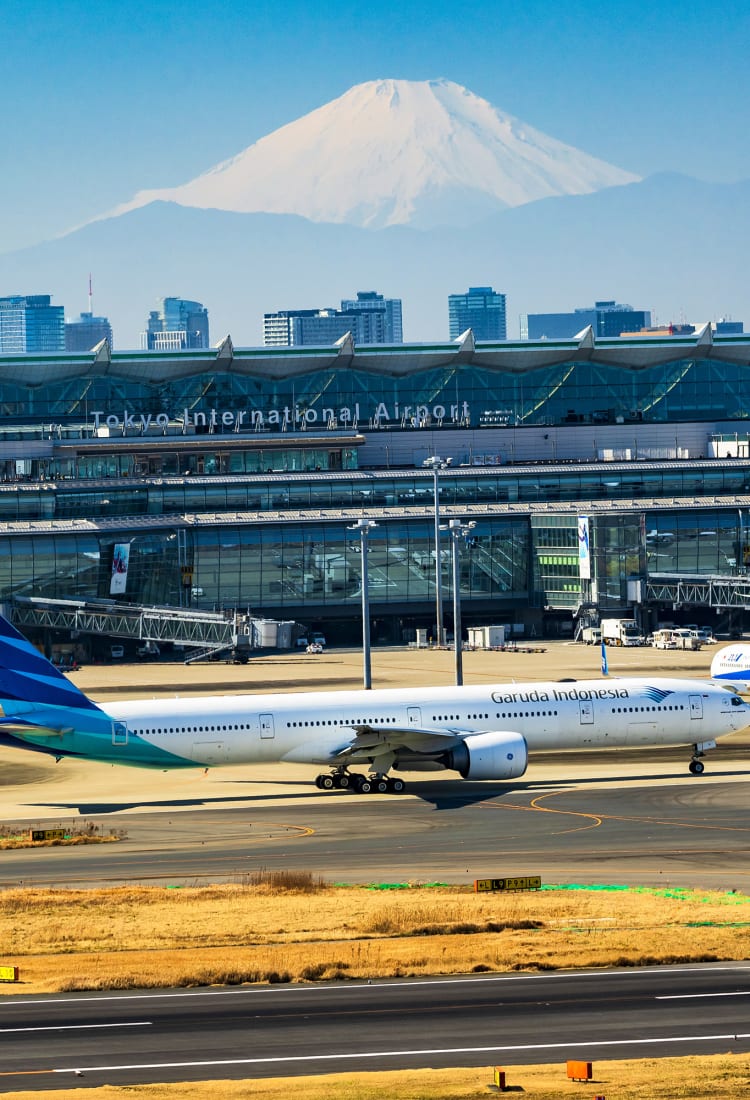
For Travelers Process Map and Checklist
All information here is gathered from the relevant authorities. Due to the regularly changing situation, it is essential for you to always check and follow the latest guidance.
Last updated: Wednesday, May 31st, 2023
Get ready for your dream trip to Japan! Japan is now open to travelers from all countries or regions! Those who enter Japan on or after April 29th 2023 are not be required to present a valid vaccination certificate or a Covid-19 negative test certificate.
Process Map -From April 29th 2023-
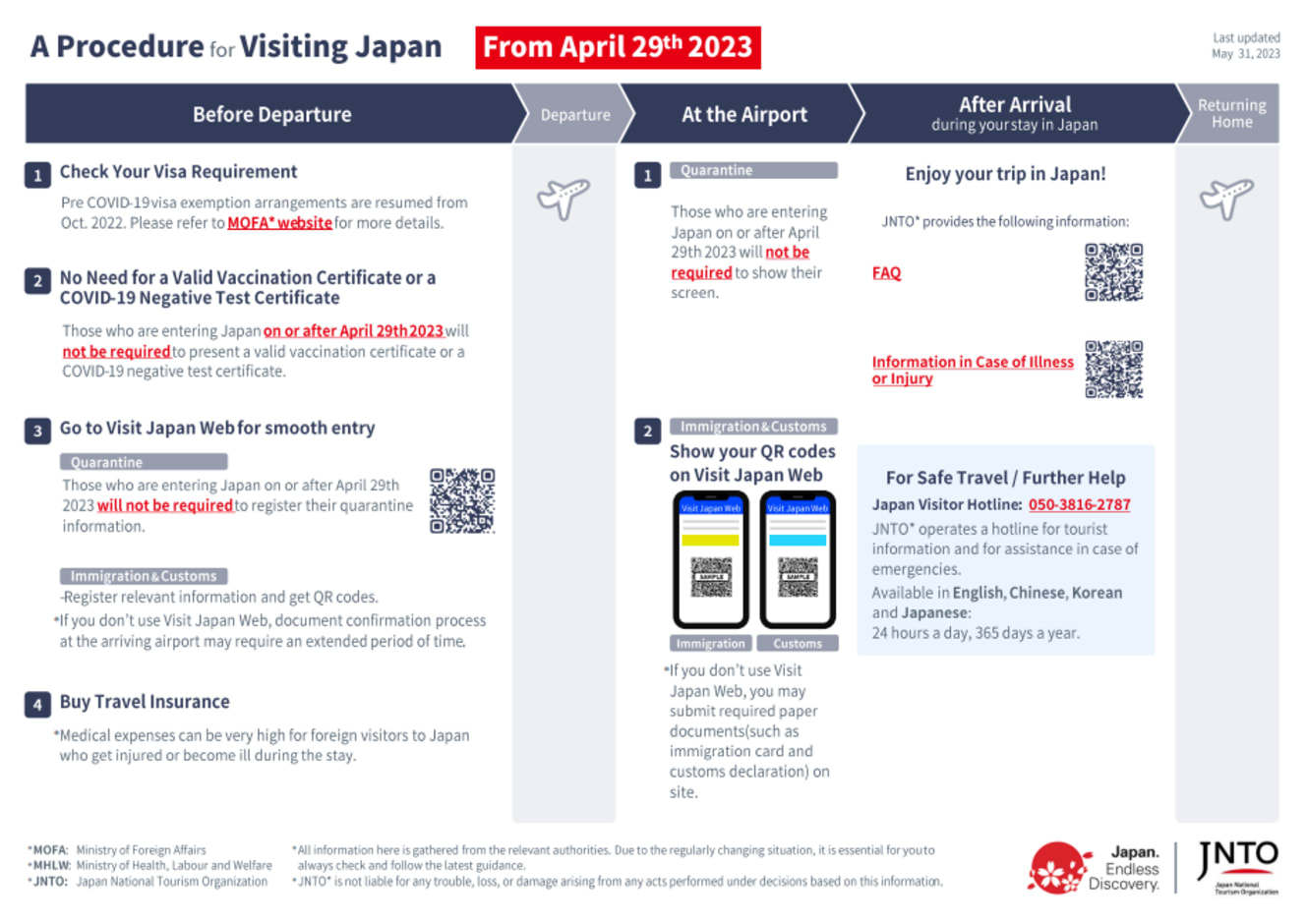
Checklist for Travelers
Before Departure
At the arrival airport in japan, after arrival, returning home, did this information help you.
out of found this information helpful.
Thank you for your feedback.
Other useful information.
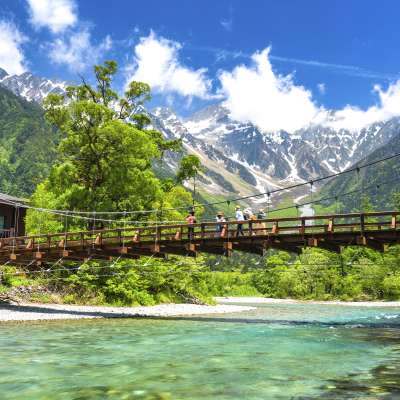
- For Travelers
Please Choose Your Language
Browse the JNTO site in one of multiple languages
We’re sorry, this site is currently experiencing technical difficulties. Please try again in a few moments. Exception: request blocked
Travel in Japan
- Recommend Place in Kochi
- Book/Movie Review
Informative Essay
- Biography Essay
- Opinion Essay
Today, the influence of Covid-19 is less, the number of people who travel around the world is increasing. In Japan, many people who from other countries come and travel. There are two good points and a bad point for sightseeing place to come to Japan from other countries: tourists give good economic effects, sightseeing places may revitalize, and some troubles happen due to difference of manners or cultures.
To begin with, tourists give good economic effects. In sightseeing place, tourists eat famous something there, need public transportations to move, and especially international tourists need a place to stay. So, they pay a lot of money to enjoy trip. According to NHK News Web, foreigners who visited Japan in the three months until September 2023, consumed 1.39 trillion yen. It was the big economic effect for Japan.
Secondly, sightseeing places may revitalize. Japan has many attractive sightseeing places. Not only Japanese but also almost all of tourists from overseas visit some sightseeing places. If they notice attractive there, they may visit Japan repeatedly. Also, foreign tourists consume more than Japanese tourists. So, coming more foreign tourists leads to revitalize. An organization "Japan National Tourism Organization" exist in all over the world. It is carried out activity to attract foreign tourists. Also, they support people who try to invite foreigners at some places. From these, inviting foreigners to Japan is important to revitalize.
Lastly, some problems happen due to difference of manners or cultures. I often watch some news which some foreigners don't follow the Japanese manners, so there are a lot of problems such as littering the trash, talking loudly on the train and so on. However, I think foreigners don't know the Japanese manners or cultures is the cause of this problems. Tokyo metropolitan government published "How to enjoy Tokyo!", which is handbook written manners and customs of Japan. If tourists read this handbook before visiting Japan, some problems may reduce than now.
In conclusion, visiting Japan from overseas have positive and negative sides for Japan. There is more positive economic effect, a lot of areas revitalize, and some trouble happen because of not knowing Japanese culture. The influence of the Covid-19 has also been reduced, I want more tourists to come to Japan, and know a lot of attraction of Japan.
References:
“The consumption of foreigners visiting Japan from July to September exceeded the pre-Covid-19 pandemic and reached an all-time high”, NHK NEWS WEB , October 18, 2023, 〈 https://www3.nhk.or.jp/news/html/20231018/k10014228641000.html 〉 Accessed on November 21, 2023.
”an outline of organization”, Japan National Tourism Organization, 〈 https://www.jnto.go.jp/ 〉 Accessed on January 4,2024
"How to enjoy Tokyo!", Bureau of industrial and labor affairs Tokyo metropolitan gorvernment , June 2021〈 10bd44414e8b0f3d929489144ef5090d_4.pdf (tokyo.lg.jp) 〉Accessed on January 4, 2024
- Share full article

A Japanese Village Wants Tourists to Come for Heat, Soot and Steel
To lure visitors, residents of Yoshida, famed for its high-quality steel, are inviting tourists to help produce it.
The furnace in Yoshida reaches temperatures of about 2,500 degrees Fahrenheit. Credit...
Supported by
Photographs and Text by Craig Mod
- April 18, 2024
This past October, I found myself in Yoshida Village standing before a tatara, a giant open-top furnace that was filled with charcoal and raging with such controlled ferocity that it could have been a set piece in Lucifer’s bedroom.
Deep within the belly of those orange flames sat a growing and mangled ingot that contained some exceptionally high-quality steel called tamahagane, or jewel steel, from which Japanese swords have been made for much of the country’s history. The presence of a usable ingot seemed unlikely, and if true, downright alchemic. All we had been doing for the last 20 hours was gently shaking iron sand and fresh charcoal onto the flames at timed intervals.
Yoshida is nestled back in the mountains of Shimane Prefecture in central Japan, abutting the ever-turbulent Sea of Japan. For nearly 700 years, workers around Yoshida made jewel steel in places called tatara-ba (literally “furnace spots”) on a grueling schedule — one that reshaped mountains and rivers, that seared the brows of generations of sooty men shoveling charcoal in loincloths. Then, at the start of the 20th century, production all but ceased. Other methods were cheaper and more efficient.

At the height of its steel prowess, Yoshida swelled to nearly 15,000 people. Today, the population hovers around 1,500. As with many towns in the Japanese countryside, a mix of aging population, low birthrates and loss of industry has emptied its streets.
Recently, though, in a Colonial Williamsburg sort of way, 24-hour re-enactments of the old iron-smelting traditions began to be performed in Yoshida. The firings are managed by a man named Yuji Inoue, who works for Tanabe Corp., which owns the furnace. “We consider the tatara a symbol and a pillar of town development,” he told me, standing next to the flickering furnace. Mr. Inoue and Tanabe Corp. were trying to remake Yoshida into a kind of tatara village, which he hoped would create self-sufficiency, expand the population and revitalize the town.
And so with this notion of countryside regrowth in mind, a few times a year they fire up their furnace, invite tourists and birth an ingot weighing about 250 pounds.
The open-top blazing furnace was set on a concrete plinth in the center of a room. Flanking its longer sides were air intakes tubes, feeding the furnace, kicking it up to around 2,500 degrees Fahrenheit. Around it all hung Shinto purification ropes. Just before the fire was lit, a priest had blessed the whole place, for luck and safety.
Safety was paramount because around the flames, at various stations, milled a team of some 20 excited tourists, a mix of both Japanese and a few foreigners, all dressed in very hip dark gray jumpsuits. These were people paying roughly ¥200,000, or about $1,500, for the chance to be a worker in a tatara-ba for a day and night. (They would get to keep the jumpsuits and a small piece of raw steel as souvenirs.) Their faces and hands were streaked by charcoal.

Jewel steel is produced by sprinkling iron sand — alluvial (river-deposited) sand saturated with iron — slowly over a charcoal pit. The tourists spent hours chopping the pine charcoal to precise sizes. They used scoops woven from bamboo to gather heaps of charcoal and dump them atop the furnace.
Off to the side stood a man named Noriaki Yasuda. He was the designated conductor — called a murage — of this slow dance between heat, charcoal and dampened iron sand. Dressed in an electric blue jumpsuit, he stood out in beautiful, almost poetic, contrast to the licking orange flames.
Monitoring the airflow, the color of the fire and the height of the charcoal with paternal concern, Mr. Yasuda scowled and watched, sometimes retreating to sit in his dark alcove, his arms crossed, still scowling and watching. To produce steel using the tatara technique, it turns out, you spend a lot of time watching.
Outside the all-encompassing warmth of the tatara-ba, the October mountain air felt like prickles on the skin. The sky was abundant with shooting stars. Shimane Prefecture truly is in Japan’s hinterlands. You can take trains to Shimane, but from Tokyo it’s a fairly arduous journey. So it’s easier (and cheaper) to fly there. Of course, I rode the trains. The 500-mile trip took about seven hours.
The area is best known for its astounding Izumo Shrine, a foundational place in Japanese cultural mythology. Still, Shimane was one of the least visited prefectures in 2019. Only a sliver of all inbound tourists made their way that year. In contrast to sites like Gion in Kyoto, which is now overwhelmed by visitors, Shimane reminded me of Covid-era Japan when international tourism was effectively banned.
“Steel is just iron with a little bit of carbon,” Mr. Yasuda explained to me. When I finally built up the courage to talk with him, his face lit up in a wide smile from behind his mask. (Everyone was wearing masks, less out of Covid concerns and more because of the charcoal dust.) He casually led me to a blackboard in the back of his resting space and sketched out the basic chemical formulas of what was happening in the furnace, how charcoal serves two purposes. First, it burns much hotter than wood. And second, its carbon atoms are essential to the formation of steel; embedded between iron atoms, they increase the strength of the metal.
As I stood and watched that giant burning thing, I thought back to Akihira Kawasaki, the master Japanese swordsmith I had visited a few days earlier. I explained how I had never before held a Japanese sword, had never carefully looked at one up close. He nodded and removed one of his gleaming works from its scabbard and placed it on a piece of red felt.
I picked it up, and it felt like holding a black hole, as if light were disappearing into the ridge line of the blade, as if light was being flipped and flopped onto and into itself. My eyes couldn’t get a purchase on the thing. It glimmered and reflected like a mirror and simultaneously seemed to inhale the world. Held up to the lights, the blade seemed to glow as if lit from within.
I was mesmerized. It was a thing of extraordinary beauty: delicate yet strong, and terrifying in sharpness. An atavistic choir in the subcortical corner of my brain was screaming, “Stay away from that edge!” When I placed it back on the felt — warily, delicately, with great focus — I still accidentally sliced off a corner of the mat.
The gap between the smelting process and the end product of the sword was enough to make a thinking person faint. All this charcoal and sand, this heat, this sootiness, this periodic removal of slag — impurities that come out like molten lava, scooped up with shovels and carted away in beaten-up old wheelbarrows to be dumped outside in a smoldering heap — from the bottom of the furnace. That this process of utter rawness could result in a Japanese blade so pregnant with artistry and violence was a miracle of the highest order.
Back inside the tatara-ba, after 20 hours of feeding the furnace, the sand ran out and the process ended. A crowd of some 30 villagers, including several children, squeezed inside the furnace’s building. The concrete outer shell of the furnace was gingerly lifted with the help of a winch. The full force of the heat hit us all immediately. Inside still burned a mass of charcoal. Below the bed of charcoal was a floor of liquid slag. And in the middle of it sat what looked like a mauled rock — the ingot all this work had produced.
The crowd cheered. The ingot was brought onto the dirt floor, and we all gathered around it to take a family portrait.
Can you revitalize a town through steel-making in 2024? I don’t know. But Japan is dotted with this kind of history, culture and craft. The countryside is disappearing, but efforts like this are a worthwhile way to look back and honor what was — and to build something sustainable and future-facing.
There’s a practical element to it all, too: Tamahagane can’t be made any other way. “It seems that modern steel-making cannot produce the same thing,” Mr. Inoue told me when I asked why it was worth all the effort. “The tamahagane is right there, as the highest-quality pieces of the ingot,” he said. Those pieces will be broken off and shipped to a handful of swordsmiths across the country, and also to the museum shop in Yoshida. It turns out that tamahagane also makes amazing golf putters.
Craig Mod is a writer and photographer based in Kamakura and Tokyo. You can follow his work on Instagram: @craigmod . His previous book, “Kissa by Kissa,” chronicles a 435-mile walk along the Nakasendo Highway from Tokyo to Kyoto. His forthcoming book, “Things Become Other Things,” will be published by Random House in the spring of 2025.
Follow New York Times Travel on Instagram and sign up for our weekly Travel Dispatch newsletter to get expert tips on traveling smarter and inspiration for your next vacation. Dreaming up a future getaway or just armchair traveling? Check out our 52 Places to Go in 2024 .
Open Up Your World
Considering a trip, or just some armchair traveling here are some ideas..
52 Places: Why do we travel? For food, culture, adventure, natural beauty? Our 2024 list has all those elements, and more .
Mumbai: Spend 36 hours in this fast-changing Indian city by exploring ancient caves, catching a concert in a former textile mill and feasting on mangoes.
Kyoto: The Japanese city’s dry gardens offer spots for quiet contemplation in an increasingly overtouristed destination.
Iceland: The country markets itself as a destination to see the northern lights. But they can be elusive, as one writer recently found .
Texas: Canoeing the Rio Grande near Big Bend National Park can be magical. But as the river dries, it’s getting harder to find where a boat will actually float .
Advertisement
We've detected unusual activity from your computer network
To continue, please click the box below to let us know you're not a robot.
Why did this happen?
Please make sure your browser supports JavaScript and cookies and that you are not blocking them from loading. For more information you can review our Terms of Service and Cookie Policy .
For inquiries related to this message please contact our support team and provide the reference ID below.
Leading Japan lawmaker seeks Trump meeting during New York visit, NHK reports
- Medium Text

Get weekly news and analysis on the U.S. elections and how it matters to the world with the newsletter On the Campaign Trail. Sign up here.
Reporting by Yoshifumi Takemoto Writing by John Geddie Editing by Frances Kerry
Our Standards: The Thomson Reuters Trust Principles. New Tab , opens new tab

World Chevron
Ecuadorean prison director Cosme Damian Parrales Merchan was killed on Sunday, the South American country's SNAI prisons agency said in a statement, even as citizens head to the polls to vote in a referendum over a raft of security measures.
At least five rockets were launched from Iraq's town of Zummar towards a U.S. military base in northeastern Syria on Sunday, two Iraqi security sources told Reuters.


COMMENTS
Essay on Why I Want to Visit Japan. This essay sample was donated by a student to help the academic community. Papers provided by EduBirdie writers usually outdo students' samples. Japan is a fascinating and beautiful country in East Asia. Japan has lots of different traditions, festivals, landforms, and tourist attractions.
Kay's essay gives good insight into the best times to visit Japan. 5. A Day Trip To Kobe by David Swanson. "When planning a visit to Kobe, consider the fact that the city has been completely rebuilt since 1995, following the great Hanshin earthquake that leveled much of the city.
Japan is one of the most attractive places for tourists, millions of people each year travel there to try its exotic and traditional food. Another reason why is because of the beautiful sakura flowers that only bloom once a year. Japan also has one of the most unique hotels, one being a capsule hotel, like the name says you live in a capsule.
Japan is an ultra-modern country with a unique transport system that makes travelling across the country as easy as pie. Ease of travel comes so natural in Japan, thanks to the superfast and reliable shinkansen (bullet train). We do recommend a JR Pass, so you can travel to more than one destination in the country.
Bus drivers, police officers, train conductors - all wearing gloves. If one is sick, one is expected to wear a face mask out of respect for others. And don't forget to take a ride in a taxi cab in Japan - it will be the cleanest you've ever taken a journey in. 10. The Geisha.
Living in Japan: Travel Essay. For me, life in Japan has been a puzzle to be solved. When I work out which piece goes where, life becomes easier. Chiba, a port city about 50 minutes by train from Tokyo, is situated on Tokyo Bay. As I wake each morning, I know for certain that before the day is out I will be asked the following two questions ...
The spectacular cherry blossom season. Japan is one of the best places in the world to view the spring cherry blossom and attend a Cherry blossom festival. Once the cherry blossom season peaks in April, locals and visitors alike flock to Japanese parks and gardens to engage in hanami (picnics beneath the cherry trees).
On June 8, we embarked on a journey like no other: first to the ancient city of Seattle and then, to our final destination, Japan. Forgoing the land of horses and tumbleweeds, we each prepared ourselves for an immediate culture shock. Arriving at 12:44 p.m. (Tokyo time), we got our first taste of life in…
Nature lovers enjoy Japan's changing seasons, especially the colorful autumn leaves. Travel Tips. Traveling in Japan is easy with bullet trains. It's important to be polite and follow local rules. Learning a few Japanese words can help visitors make friends. Remember to carry cash, as some places don't take cards. 250 Words Essay on Japan ...
Kyoto is also home to the famous Fushimi Inari Taira - an incredible shrine of thousands of red torii gates that line the 4 kilometre stretch to the sacred Mt. Inari. Nature lovers will enjoy the bamboo groves, whilst those looking for a city escape can always make a quick trip to Osaka - just a 30 minute express train ride away!
Developing the depth of the research. The correlation of essay parts. Let's Practice to Write Your Essay about Japan. Practice 1. Practice 2. Practice 3. Conclusion. Japan is a place of dreams both both the admirers of the ancient countryside lifestyle and the "camp" of city-lovers. No wonder this country is among those topics students ...
11. Shopper's paradise. Shopping is another reason why you should visit Japan, more so for the local brands than for the international ones. Tokyo and other major cities have world-class shopping centers as well as traditional markets where you can shop for local handicrafts and souvenirs.
Japan Travel Guide. Last Updated: February 18, 2024. Japan is one of the most amazing, beautiful, interesting, and friendly countries in the world. From bustling Tokyo and Zen-like Kyoto all the way to laid-back Okinawa and wintery Hokkaido, Japan rocks. It boasts mouthwatering food, majestic temples and shrines, serene gardens, lush national ...
Traveling improves your brain health. It also expands your mind, you adapt to new situations, and are more globally and culturally aware. If you travel to Japan you also get to learn their cultures, religion, customs, and ways of life. Japan is very religious and formal. Going to Japan can teach you manners and politeness.
Japan is the land of animals being treated badly, unfortunately. As you travel across the country, you'll be struck by how many animal cafes you can visit. There's hedgehog cafes, otter cafes, owl cafes, alpaca cafes, ferret cafes, penguin bars, and the vast majority of them are not doing great things for the animals' health.
Japan has long held a reputation as being one of the most expensive countries in the world to visit, with Tokyo holding the crown as one of the world's most expensive cities. After my visit, I think that reputation is a bit undeserved. Two things in Japan are quite expensive: lodging and long-distance transportation.
Students are often asked to write an essay on My Trip To Japan in their schools and colleges. And if you're also looking for the same, we have created 100-word, 250-word, and 500-word essays on the topic. ... Essay on My Trip Flight; Essay on My Travel Experience; Apart from these, you can look at all the essays by clicking here. Happy studying!
Completing the scene are the serene reflecting pool and traditional Japanese gardens that contain lush foliage, manicured trees, and scenic walking paths. 1 Kinkakuji-cho, Kita-ku, Kyoto-shi, Kyoto, +81 075-461-0013, shokoku-ji.jp. Open daily 9am-5pm. Admission is 500 JPY. Admire Ryoan-ji Temple.
Quarter Finalist 2009 FTF Teen Travel Writing Scholarship I loved Japan before I visited there-- loved their video games, TV shows, martial arts, and amazing sword fights. But my only contact with Japan was through the Internet. ... Japan Essay. Article By: Isaac Goodman-Boyd. japan. I loved Japan before I visited there- loved their video ...
Japan, with its rich history, captivating traditions, and technological advancements, has always held a special place in my heart. This essay explores the reasons why I am drawn to the idea of living and working in Japan, including my fascination with its culture, my passion for personal growth, and my aspiration to contribute to a dynamic and innovative society.
The walk toward Meiseki-ji, Temple No. 43, on an overcast day. The pilgrimage on Shikoku, the smallest of Japan's four main islands, is a 750-mile route that links 88 Buddhist temples, each of ...
-Register relevant information and get QR codes on Visit Japan Web for smooth entry into Japan. QR codes are generated after the registration. *Immigration and Customs procedures on Visit Japan Web are available at 7 major airports (Tokyo/Narita, Tokyo/Haneda, Kansai, Chubu, Fukuoka, New Chitose, Naha). About Visit Japan Web
If you need after-hours assistance in an emergency, please call 03-3224-5000 and ask to speak with the Embassy's duty officer. Emergency Contact Information for U.S. citizens. Emergency Preparedness for U.S. citizens in Japan. Sources of Help, including counseling services. Medical Assistance in Japan.
Informative Essay Today, the influence of Covid-19 is less, the number of people who travel around the world is increasing. In Japan, many people who from other countries come and travel. There are two good points and a bad point for sightseeing place to come to Japan from other countries: tourists give good economic effects, sightseeing places ...
At the height of its steel prowess, Yoshida swelled to nearly 15,000 people. Today, the population hovers around 1,500. As with many towns in the Japanese countryside, a mix of aging population ...
1:23. Japan hosted a record number of tourists in March as the country's early start to cherry blossom season and a weakening yen drew in holidaymakers. Visitors totaled 3.1 million in March, up ...
Almost nothing stops Japan's famous high-speed bullet trains from running exactly on time - but a tiny snake slithering through a passenger carriage will do the trick, albeit for just 17 minutes.
CNN —. Dubai International Airport, one of the world's busiest aviation hubs, remained in disarray Thursday after unprecedented heavy rain led to airliners having to negotiate flooded runways ...
A senior figure in Japan's ruling party will travel to New York next week and is seeking a meeting with Republican presidential candidate Donald Trump, according to public broadcaster NHK.